Posts Tagged by debra a. reid
World Oceans Day
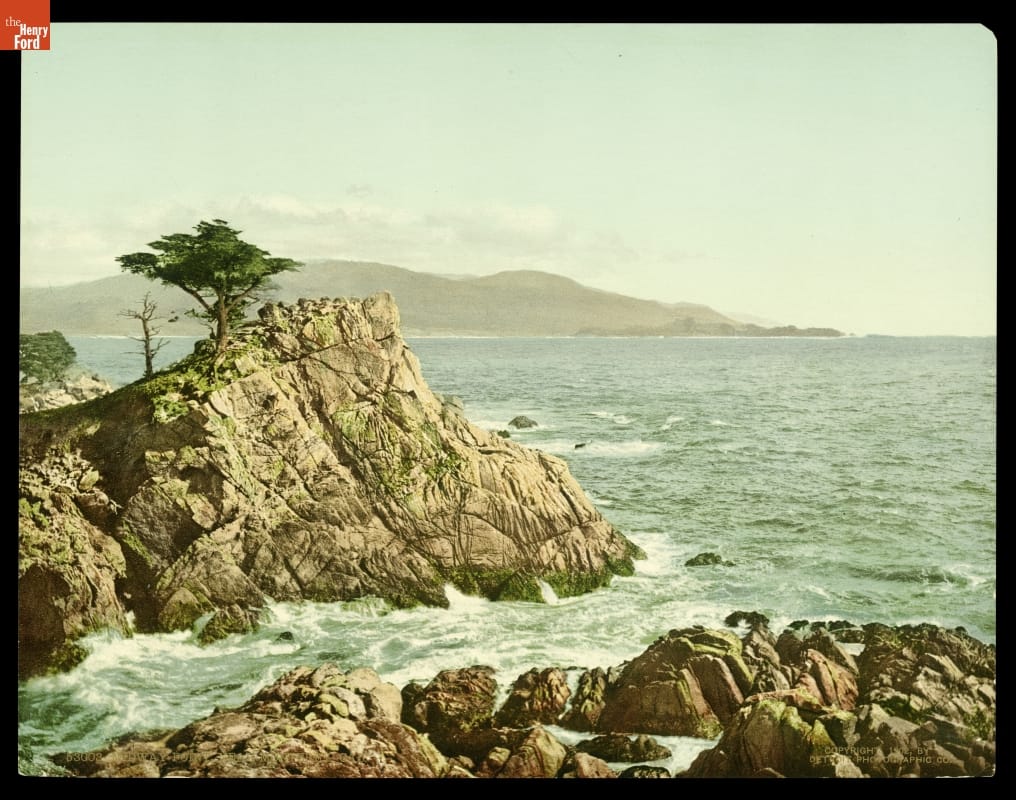
“Midway Point near Monterey, California,” 1902, Detroit Publishing Company Collection. / THF118817
The United Nations (UN) first discussed a “world oceans day” during the June 1992 Conference on Environment and Development in Rio de Janeiro. The UN General Assembly designated June 8 as the day to recognize the role of oceans in a global perspective, as well as the influence of law and society on those oceans, starting in 2009. The theme “The Oceans: Life and Livelihoods” provides a focus for World Oceans Day 2021.
The Henry Ford’s collections support reflection on ocean life, livelihoods, and health in several ways. Visual depictions range from a 16th-century map to 20th-century photographs featuring ocean liners and oceanside retreats.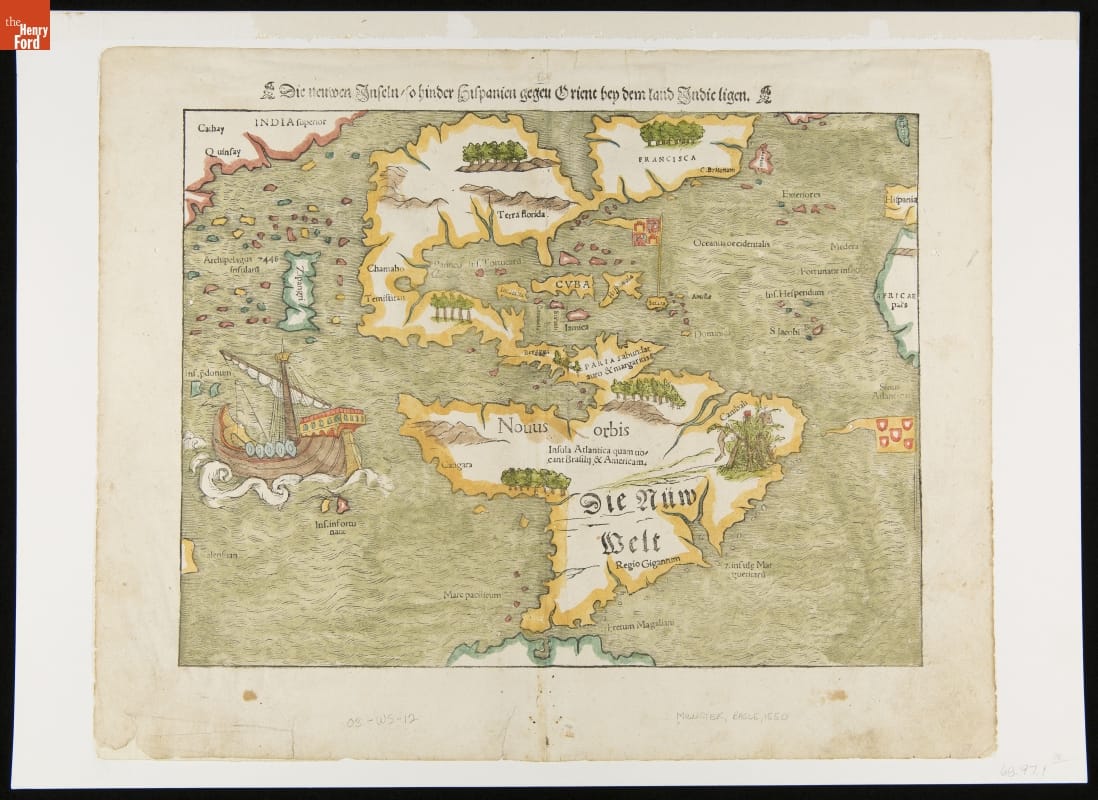
Map, “Die Neuwen Inseln / So hinder Hispanien gegen Orient ven dem land indie ligen,” drawn by German cartographer Sebastian Münster (1488–1552) in 1550 to illustrate the “new island” lying between Spain, the Orient, and the country of India. / THF284540
“Docking a Big Liner,” RMS Oceanic, 1903. Briefly, between 1899 and 1901, the Oceanic was the largest ship in the world. / THF204952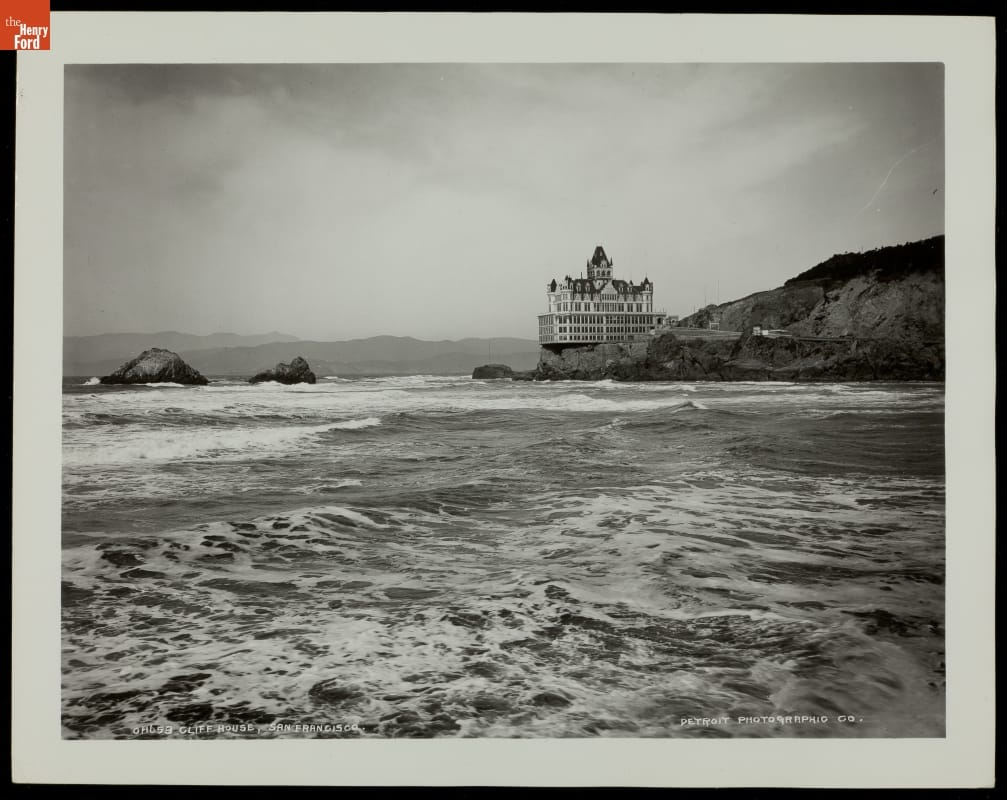
Cliff House, San Francisco, California, circa 1905. / THF200584
Physically crossing the ocean required a voyage by sea, and later by air, but transatlantic communication took the underwater route. You can learn more about the laying of the transatlantic cable in 1858 in the segment “History of Communication Cables” from The Henry Ford’s Innovation Nation with Mo Rocca. You can read even more about the process and learn more about the technology through artifacts from our collections in “Starts and Stalls: Creating a Successful Transatlantic Cable” and at “Signals Under the Ocean.”
Ocean health anchors World Oceans Day. Marine biologist Rachel Carson featured ocean health in her earliest mass-media publications. Three publications drew the public’s attention to these issues. They included Under the Sea Wind (1941), The Sea Around Us (1951), and The Edge of the Sea (1955).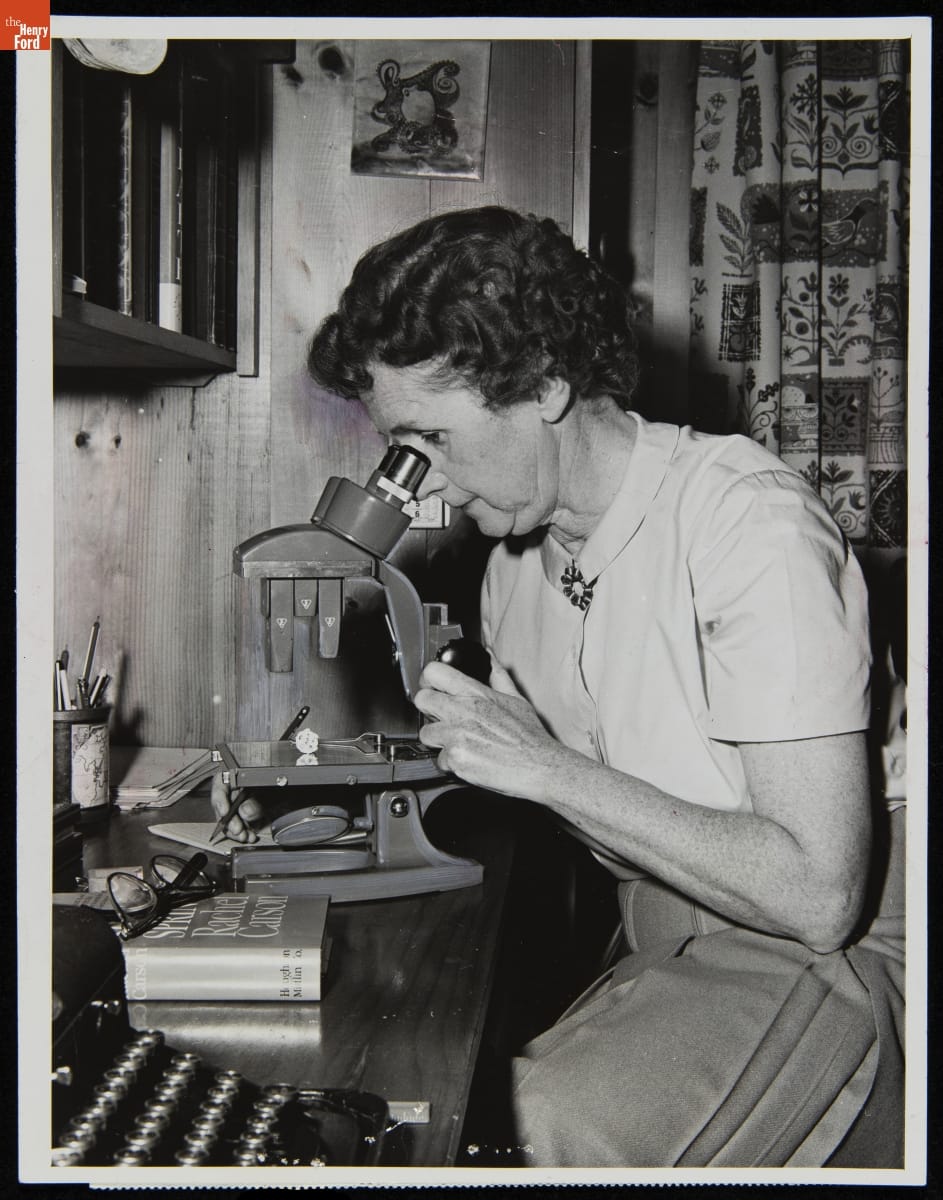
Rachel Carson using a microscope, April 1963. You can see a drawing of an octopus on the wall above her head, and a pencil holder with a map of the world’s oceans. / THF147922
The urgency to clean up our oceans has increased in the decades since Carson issued her clarion calls. An Innovation Nation segment, “Seabin Ocean Cleanup,” shared the story of the “sea bin”—think of it as a “trash bin” designed to collect plastics floating in the ocean. Another segment looked at a larger clean-up project focused on the Great Pacific Garbage Patch, where the innovator planned to use ocean currents to help consolidate the refuse. A later segment updated viewers on that project as Boyan Slat and his Garbage Patch clean-up team set sail. Other Innovation Nation segments have featured plastic-eating bateria (PETase enzyme), a robotic snake that detects water pollution (Envirobot), and an oil-spill sponge.
What might we do to be more engaged with World Oceans Day?
The raindrop in our personal space starts a journey we can all follow. The droplets accumulate and flow into freshwater creeks, streams, rivers, the Great Lakes, and ultimately into the world’s oceans. Maintaining water quality starts with the runoff, redirecting it to retention ponds where sediment can settle out before it enters rivers, lakes, and oceans. The Ford Rouge Factory Tour offers guests the opportunity to learn more about this process, and so can walks through Greenfield Village, paying particular attention to the ponds and their connections to the Rouge.
Greenfield Village in the evening, 2004, featuring the retention pond in the Liberty Craftworks district. / THF133611
Young innovators play a major role in this work. Students participating in Invention Convention Worldwide often focus on water quality. Alie Ward spoke with a student about their project to rid oceans of microplastics on the TV show Did I Mention Invention?
The Henry Ford supports ocean-focused education in additional ways. The Giant Screen Experience features films on the subject, including Secret Ocean 3D as a “Teacher’s Choice” option for school and youth groups. Currently playing, Hidden Pacific is a film featuring areas of natural significance protected as national marine monuments.
Exhausted from your world-wind tour of THF ocean-related resources? There is still more to see, and much more to do, on our collective journey to ocean health. Contemplate your next steps as you explore art inspired by oceans, on view in the Davidson-Gerson Modern Glass Gallery in Henry Ford Museum of American Innovation.
“Ocean Floor” Ladder by Therman Statom, 2007 (Gift of Bruce and Ann Bachmann). / THF164729
Compiled by Debra A. Reid, Curator of Agriculture and the Environment at The Henry Ford, following the lead of Zachary Ciborowski, Administrative Assistant and Project Coordinator; with inspiration from The Henry Ford’s Green Team members, including Cynthia Jones, General Manager, Innovation Experience; and with the assistance of Saige Jedele, Associate Curator, Digital Content.
Weathervanes
Weathervanes have helped humans for millennia. In ancient cities, streamers or pennants mounted at high points communicated wind patterns to watchers below. In more recent centuries, weathervanes in the form we might recognize today perched atop high structures, pointing into the wind to reveal its precise direction. These devices heralded weather changes by indicating shifts in prevailing winds—essential information for farmers or mariners whose businesses depended entirely on the weather.
Weathervanes of this type rotated freely, in perfect balance, with weight distributed across a longer “tail” end that was pushed by the wind, and a shorter “arrow” end that pointed in the direction from which it blew. Starting with this basic form, tradesmen and commercial manufacturers created a vast array of weathervane ornaments by the late nineteenth century. These could communicate more than practical information about the wind. A weathervane might represent regional identity or personal interests, convey religious or political symbolism, or advertise goods or services.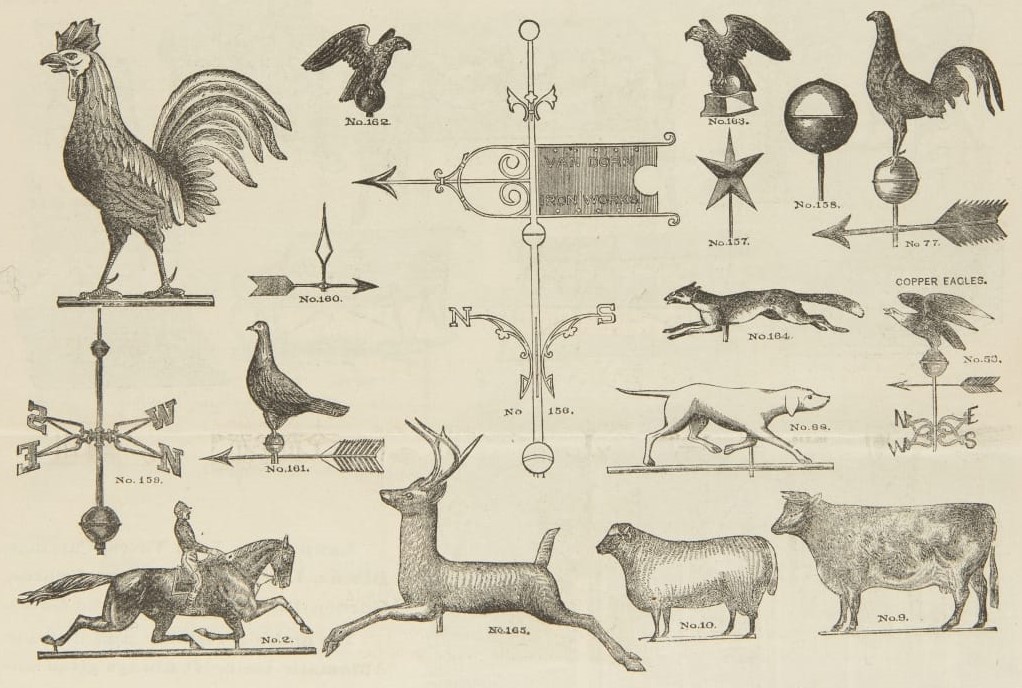
Commercial manufacturers produced a vast array of weathervane ornaments by the late nineteenth century. / THF622046 (detail)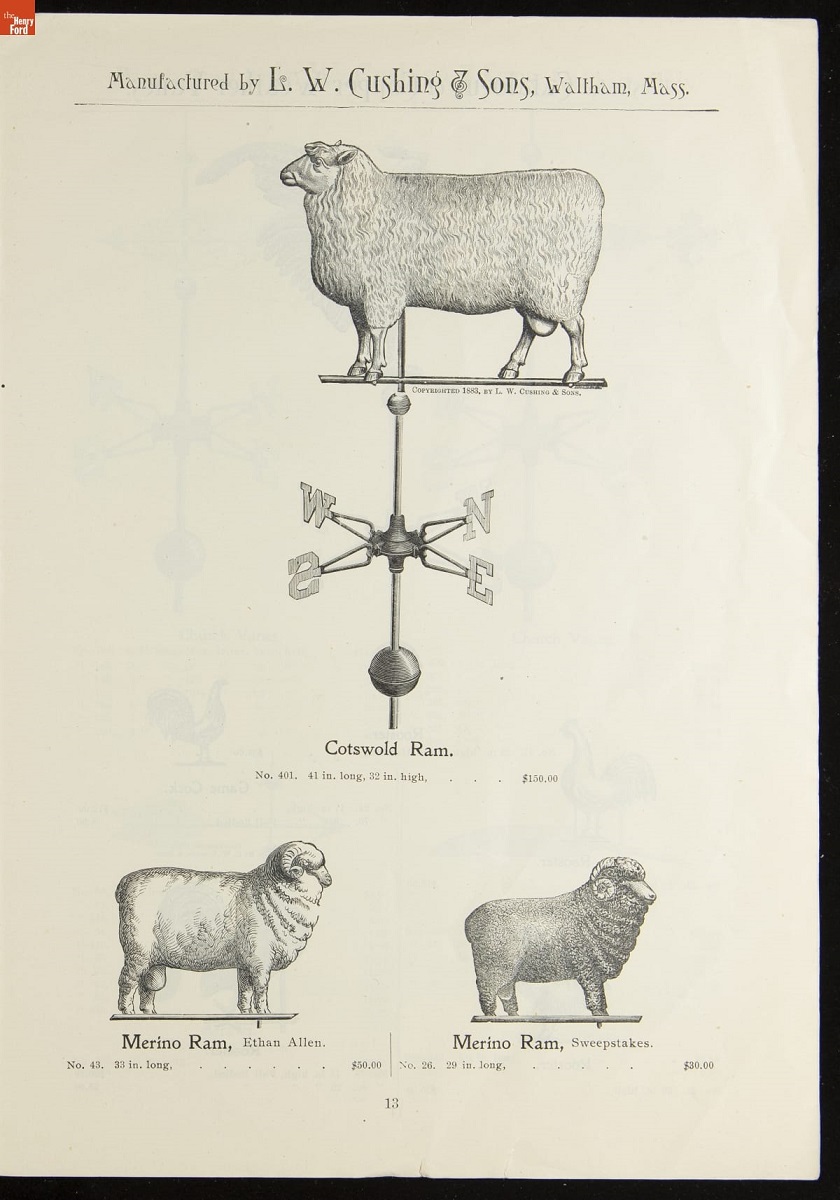
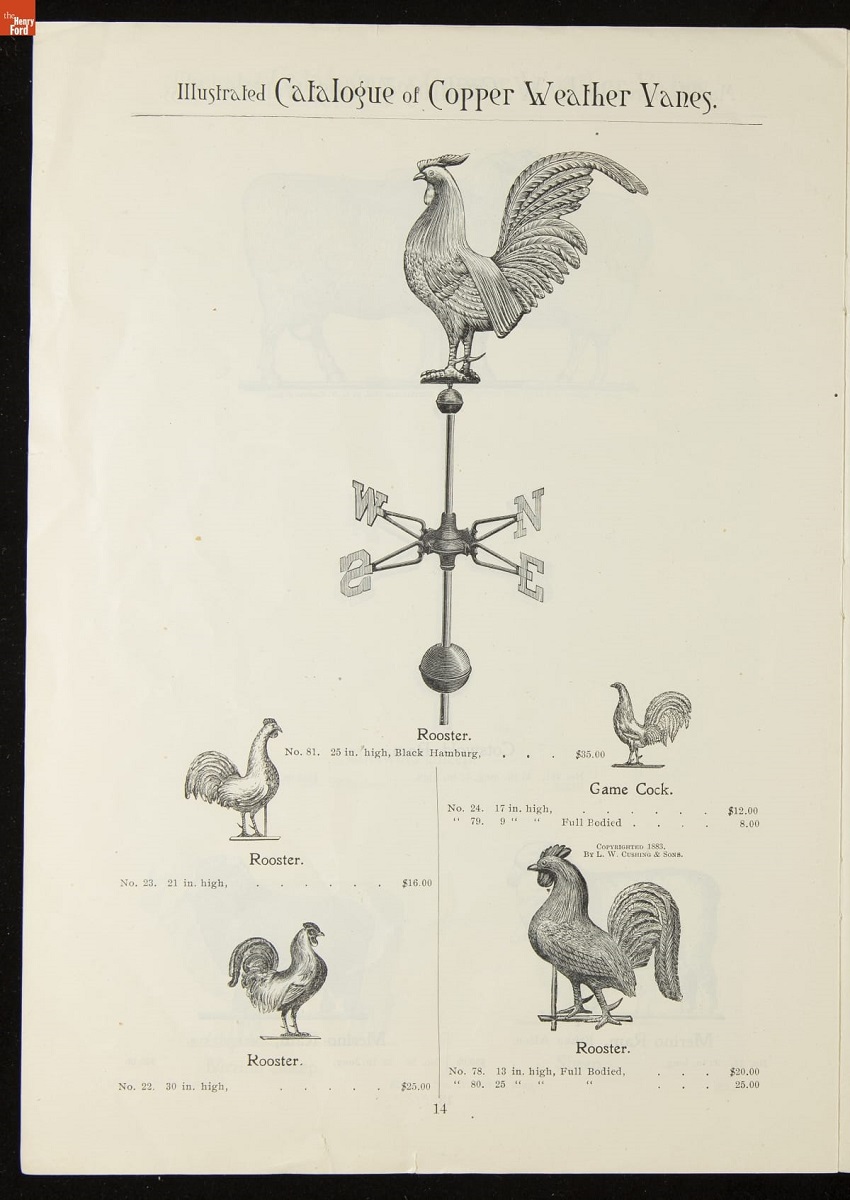
Farm animals were a popular choice for rural weathervane customers. Roosters, with their biblical associations, also conveyed religious symbolism and often served as visible moral reminders atop church spires. / THF622073 and THF622074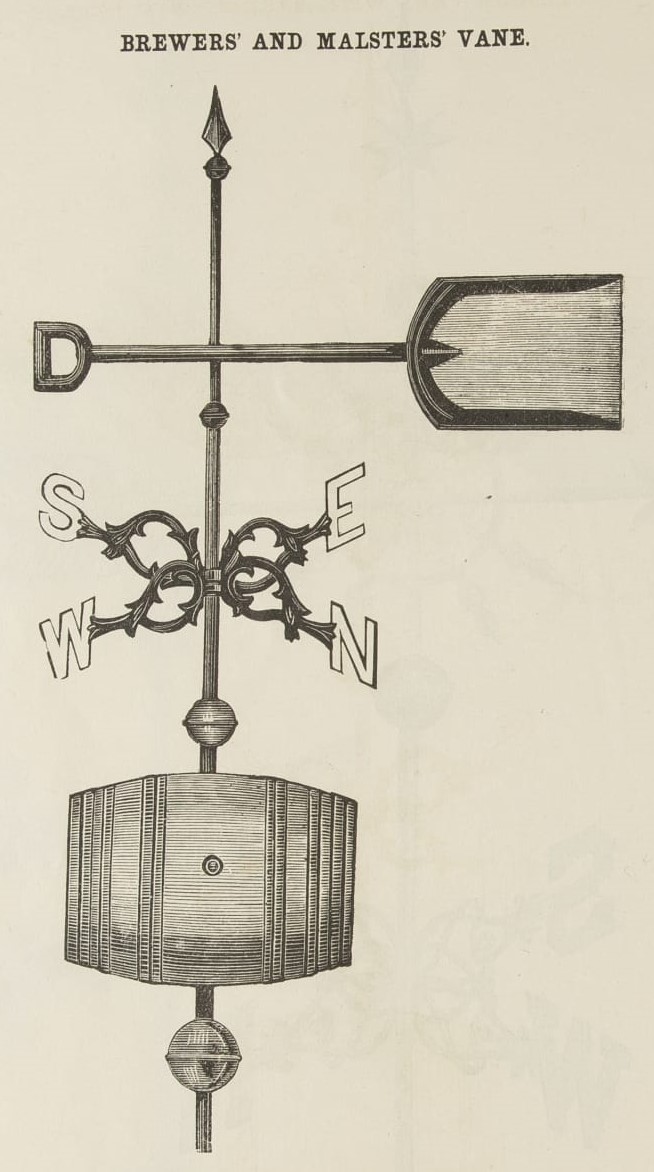
Specialty weathervanes, like this one depicting a malt shovel and beer barrel, doubled as trade advertisements. / THF622201 (detail)
The United States Weather Bureau began generating weather reports based on data collected from across the country in the late 1800s, precipitating the decline of traditional weathervanes. When radio stations began broadcasting national weather reports in 1921, weathervanes became functionally obsolete for most Americans. Nevertheless, weathervanes remained popular. Collectors celebrated them as remarkable examples of American folk art, and twentieth-century manufacturers continued to produce them as nostalgic ornaments for suburban homeowners.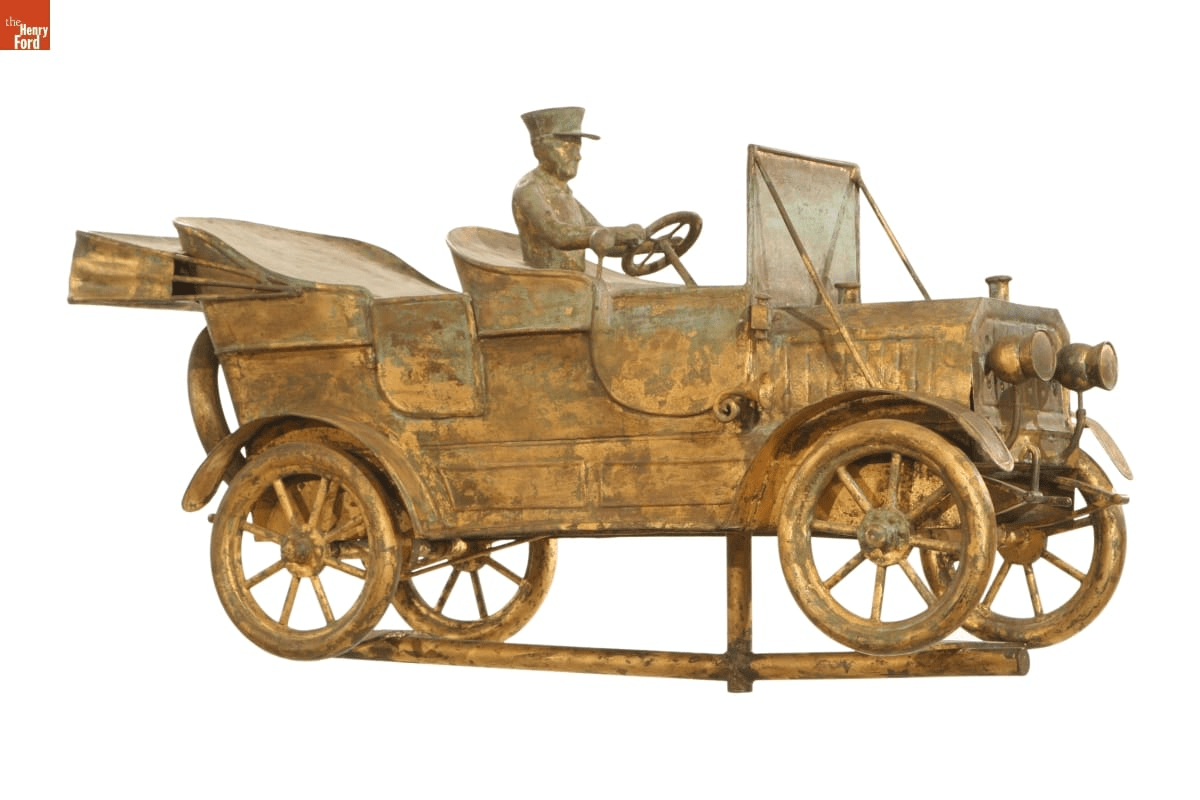
Supplanted by national weather reporting in the early twentieth century, weathervanes like these became the special interest of folk art collectors. / THF186724, THF186720, THF145466, and THF186729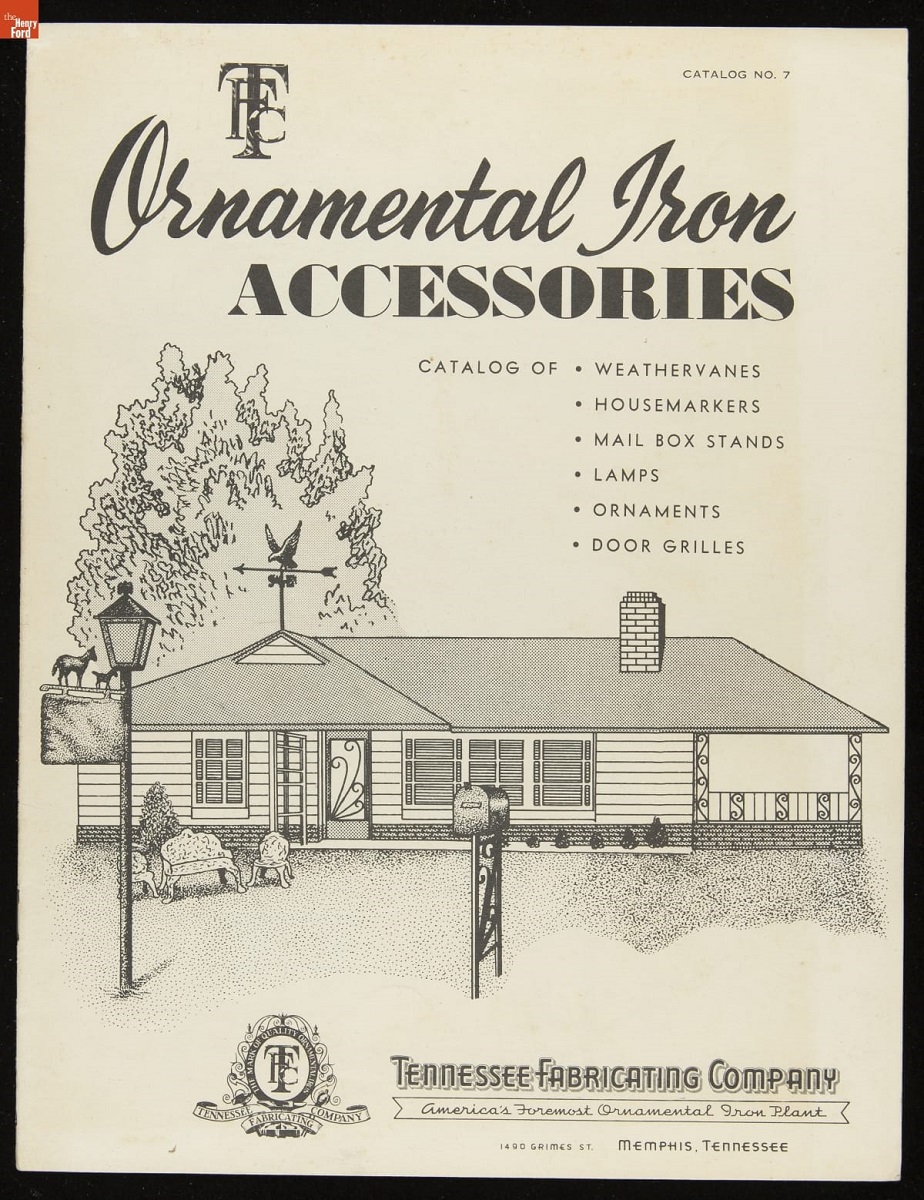
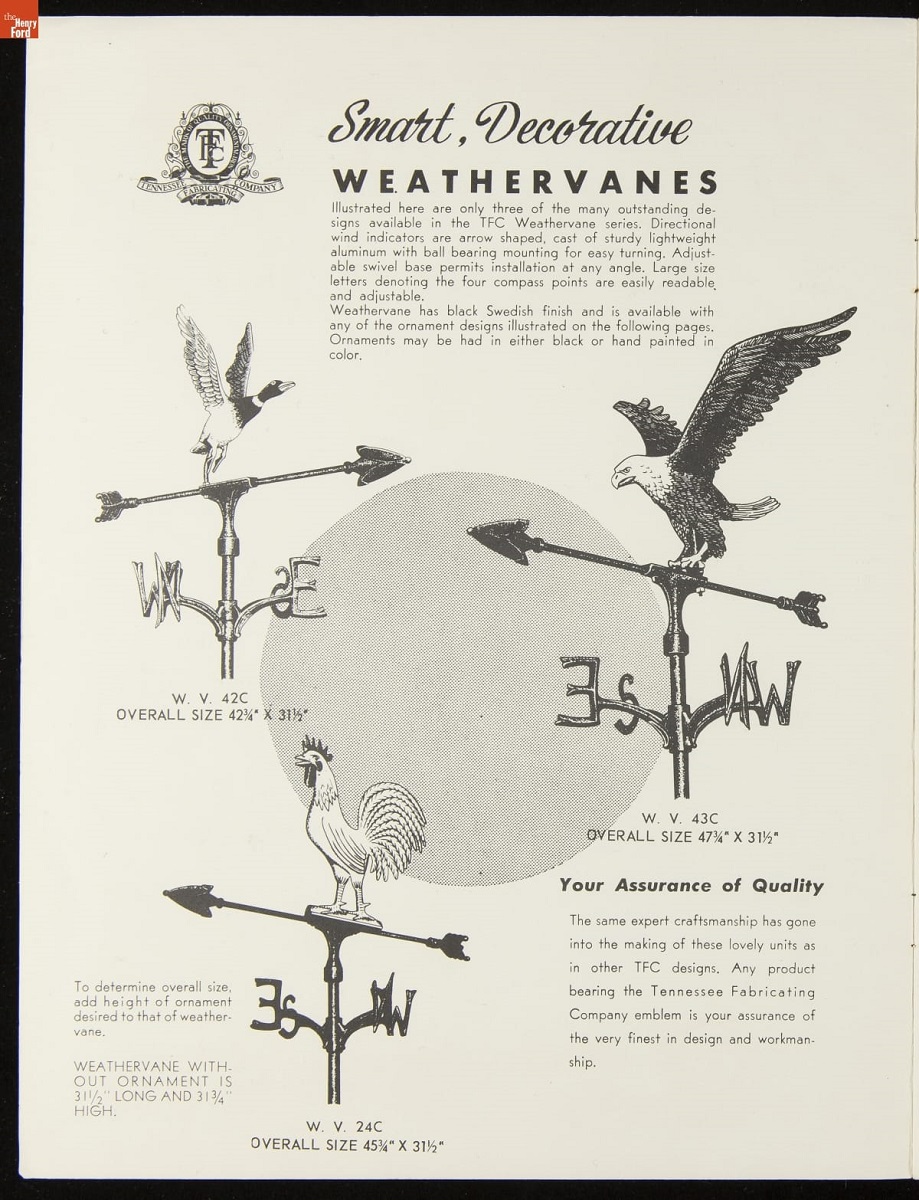
By the mid-twentieth century, most weathervanes were strictly ornamental, as illustrated by this 1959 catalog. / THF622033 and THF622034
In updated forms, weathervanes remain important weathercasting tools. As instant indicators of prevailing winds, they are particularly useful at airports, marinas, and sporting events. And meteorologists still rely on weathervanes—often in combination with anemometers, which measure the speed of the wind, as “aerovanes”—to gather data that documents and helps predict weather patterns.
Weathervanes provide evidence of age-old efforts to identify patterns in natural phenomena and predict changes that might affect human survival. These utilitarian artifacts are mostly understood today as whimsical adornments (Hallmark has even released weathervane Christmas ornaments!) only because most Americans have little to no training in meteorology. Yet, weathervanes remain essential weathercasting devices. They can also aid citizen scientists intent on recording climate change locally and globally.
The next time you visit The Henry Ford, look up as you walk around the museum and village to spot weathervanes atop spires and towers. Note how they point into the wind and shift as the breezes blow. In the meantime, you can browse a selection of weathervanes and trade catalogs from weathervane manufacturers in our Digital Collections.
Debra Reid is Curator of Agriculture & the Environment and Saige Jedele is Associate Curator, Digital Content, at The Henry Ford.
decorative arts, home life, by Saige Jedele, by Debra A. Reid
Beyond the Peanut: Food Inspired by Carver
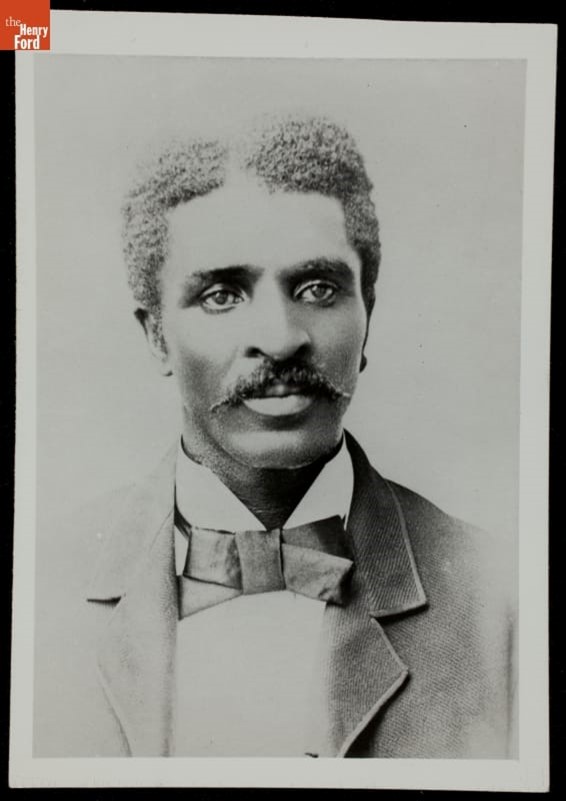
George Washington Carver's Graduation Photo from Iowa Agricultural College and Model Farm (now Iowa State University), 1893 / THF214111
George Washington Carver and Food
George Washington Carver (1860s–1943) was born near the end of the Civil War in Missouri. He studied plants his entire life, loved art and science, earned two agricultural science degrees from Iowa State University, and shared his knowledge broadly during his 45-year-career at Tuskegee Institute. He urged farm families to care for their land. Today we call this regenerative agriculture, but in Carver’s day it amounted to a revolutionary agricultural ethic.
Carver’s curiosity about plants fueled another revolution as he promoted hundreds of new uses for things that farm families could grow and eat. Cookbooks inspired him to adapt, and he worked with Tuskegee students to test and refine recipes. Then he compiled them in bulletins that stressed the connection between the environment and human health.
Today, our chefs at The Henry Ford are inspired by Carver’s dozens of bulletins and hundreds of recipes for chutneys, roast meats, salads, and peanut-topped sweet rolls.
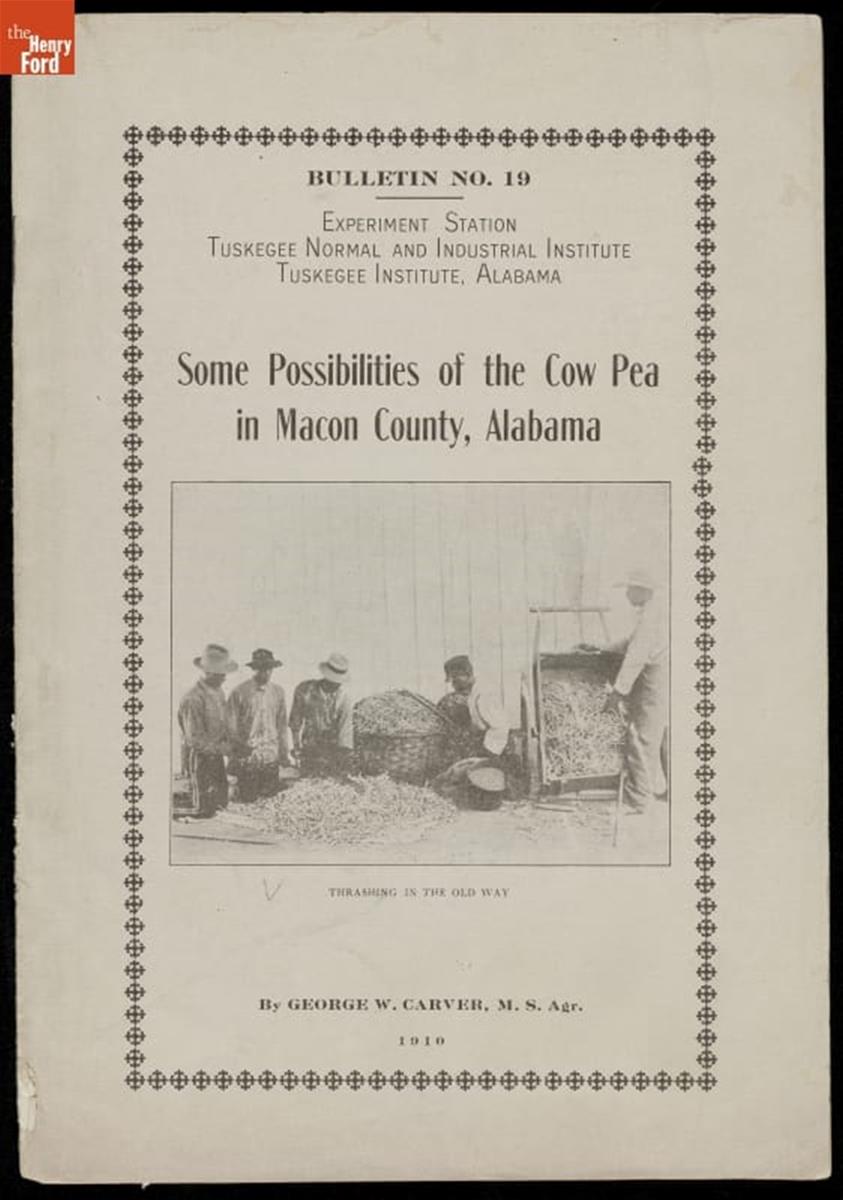
Some Possibilities of the Cow Pea in Macon County, Alabama, a 1910 bulletin by Carver featuring recipes. / THF213269
Developing Modern Carver-Inspired Recipes
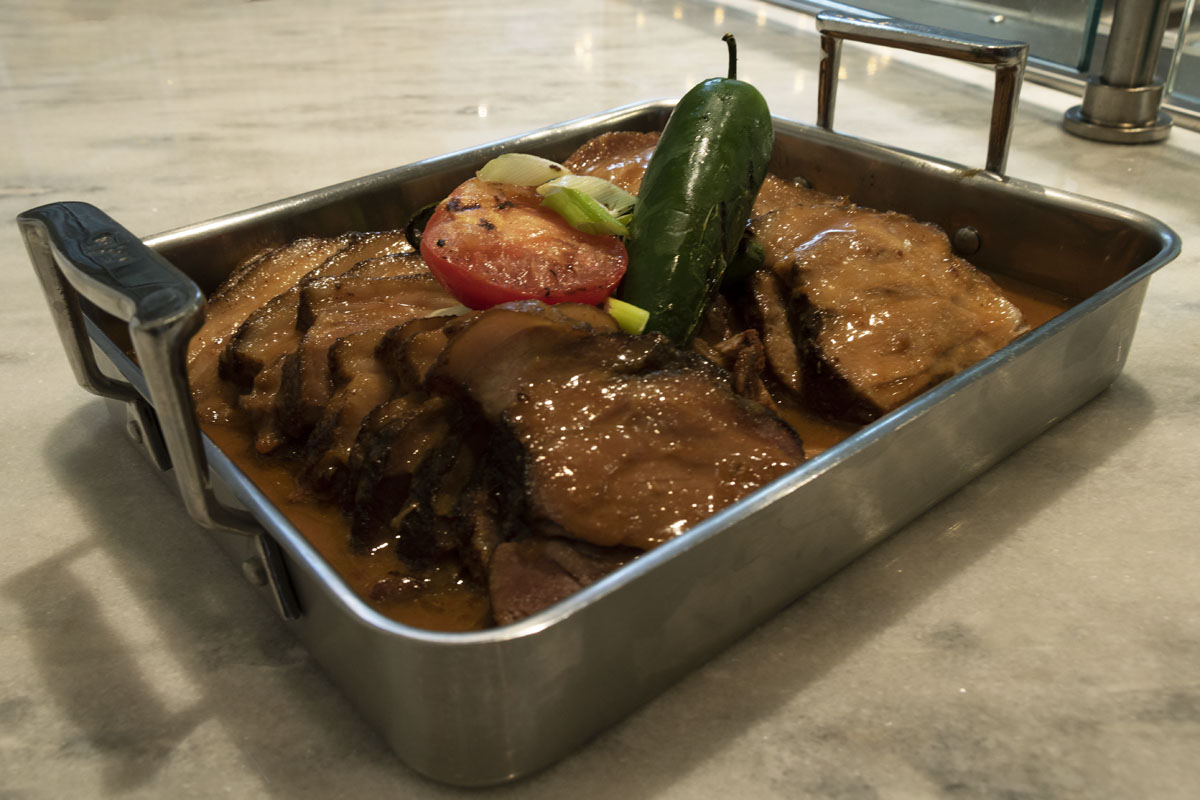
All Natural Pork with Peanut Plum Sauce at Plum Market Kitchen.
Carver is known to most of us for his many uses for the peanut. The Henry Ford’s culinary team looks to go beyond that, knowing that there is so much more to his legacy. Cultural appropriation is a hot topic in the world of food service today, but as a public history institution, we recognize that food is culture, and we are committed to authentic representation of a variety of food traditions. We are constantly collaborating and developing new recipes in consultation with our curators, who provide expert understanding and context. Part of the mission that drives our chefs is to understand the full story, and to help all our guests complete that experience as well.
Carver-Influenced Menu at Plum Market Kitchen
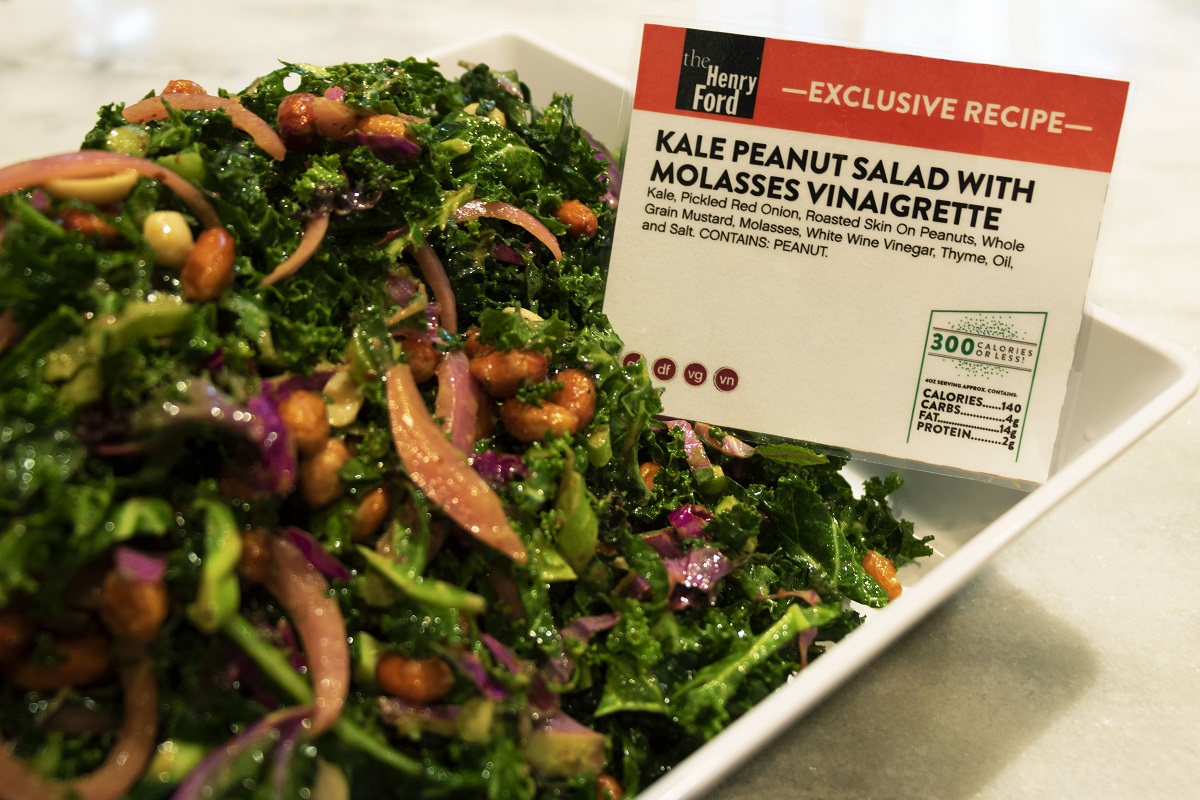
Kale, Roasted Peanut, and Pickled Red Onion Salad with Molasses Vinaigrette at Plum Market Kitchen
Many aspects of Carver’s legacy are woven into a modern menu at Plum Market Kitchen at The Henry Ford. Today, the ideas of all-natural, healthy, and organic have become “tag lines” to sell you food. However, for Carver, and for Plum Market Kitchen, these have always been a driving ideology. Together, The Henry Ford and Plum Market Kitchen have taken inspiration from many of Carver’s recipes—always looking to honor and continue his legacy.
Digging Deeper into Carver’s Legacy at A Taste of History

Spring offerings from George Washington Carver's recipes at A Taste of History.
While our new recipes at Plum Market Kitchen are inspired by Carver, with modern adaptations, our new offerings in A Taste of History are more directly drawn from Carver’s own recipes and the ingredients he used. Spring offerings at A Taste of History include the following—click through for recipes to try at home.
- Brined and Roasted Chicken
- Tomato Chili Sauce
- Sweet Potato Hash
- Collard Greens with Smoked Turkey
- Peanut Roll Cake with Jelly
Learn More
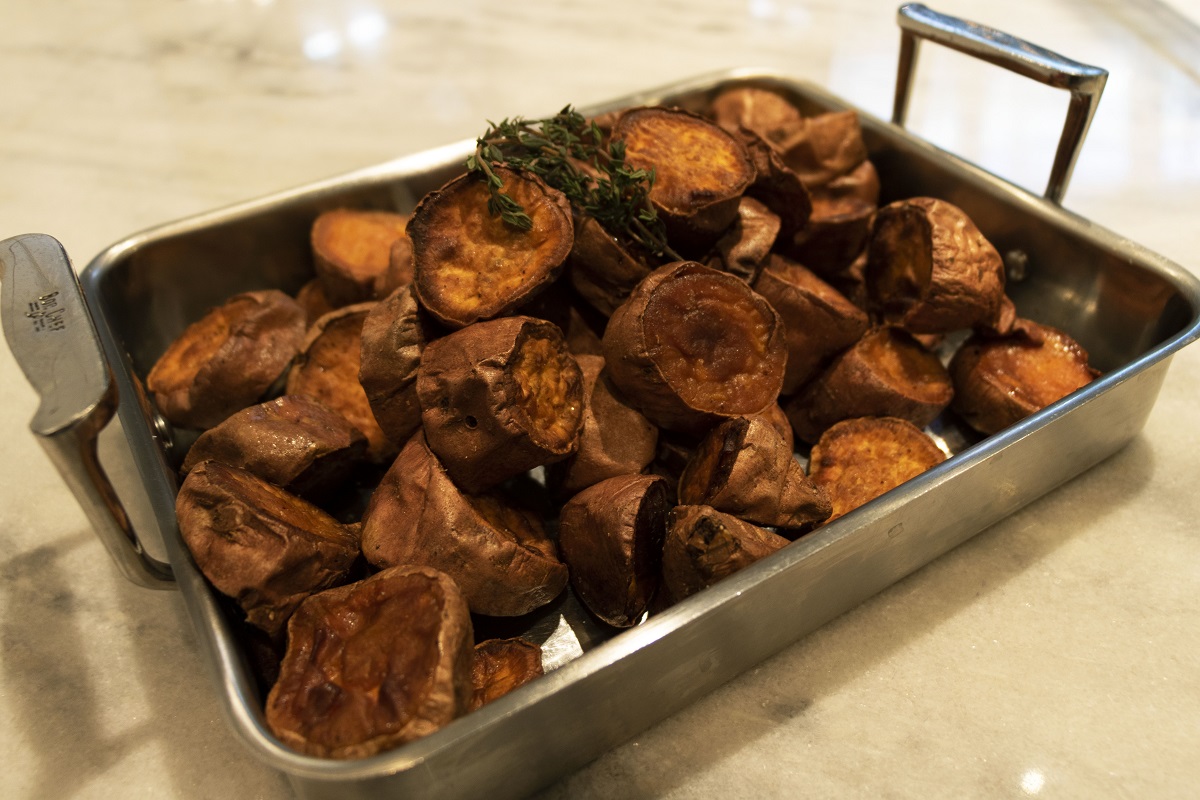
Farmhouse Roasted Sweet Potatoes at Plum Market Kitchen.
If you’d like to further explore the life and work of George Washington Carver, issues surrounding food security, historic recipes, or dining at The Henry Ford, here are some additional resources across our website:
- Take a closer look at Black empowerment through Black education with the microscope used by agricultural scientist George Washington Carver during his tenure at the Tuskegee Institute in Alabama.
- Throughout Carver’s life, he balanced two interests and talents—the creative arts and the natural sciences. Find out how each influenced the other.
- Learn more about the history of the George Washington Carver Cabin in Greenfield Village.
- Explore artifacts, photographs, letters, and other items related to Carver in our Digital Collections.
- Food security links nutritious food to individual and community health. Explore this concept through the collections of The Henry Ford in this blog post, which includes Carver’s work.
- Find out what a food soldier is, as well as how food and nutrition relate to issues of institutional racism and equity for African Americans.
- Explore historic cookbooks and recipes from our collections.
- Get up-to-date information about dining options in Henry Ford Museum of American Innovation and Greenfield Village.
Eric Schilbe is Executive Sous Chef at The Henry Ford. Debra A. Reid is Curator of Agriculture and the Environment at The Henry Ford.
Greenfield Village, Henry Ford Museum, African American history, George Washington Carver, restaurants, by Eric Schilbe, by Debra A. Reid, recipes, food
Food Soldiers: Nutrition and Race Activism
A pattern of Black activism exists, a pattern evident in the work of individuals who dedicate themselves to improving the health and wellbeing of others. These individuals may best be described as “food soldiers.” They arm themselves with evidence from agricultural and domestic science. They build their defenses one market garden at a time. They ally with grassroots activists, philanthropists, and policy makers who support their cause. Past action informs them, and they in turn inspire others to use their knowledge to build a better nation.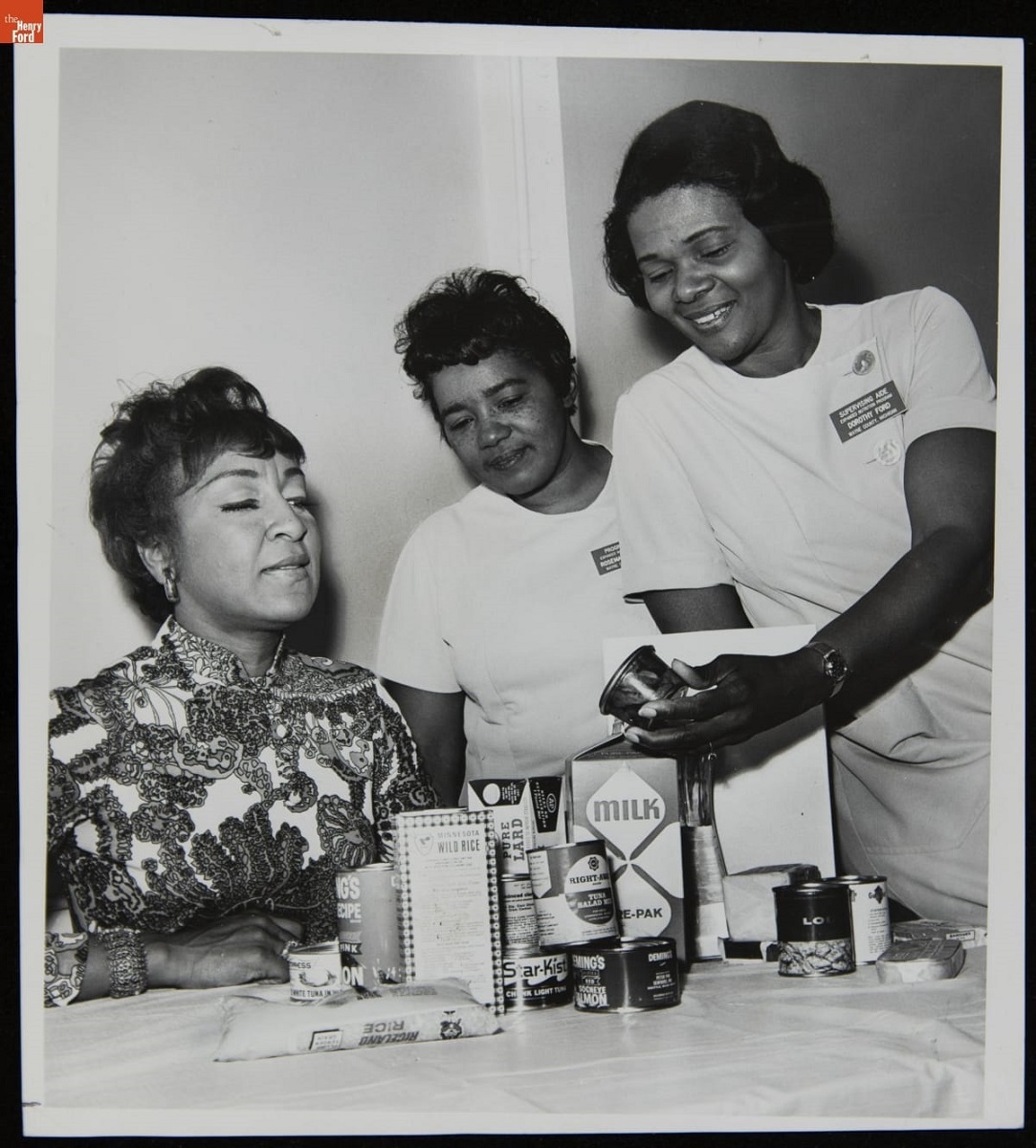
June Sears, Rosemary Dishman, and Dorothy Ford Discussing Women's Nutrition, May 1970. / THF620081
Food Sources
Food is one of life’s necessities (along with clothing and shelter). Centuries of legal precedent confirmed the need for employers to provide a food allowance (a ration), as well as clothing and shelter, to “bound” employees. For example, a master craftsman had to provide life’s necessities to an indentured servant, contracted to work for him for seven years, or a landowner was legally required (though adherence and enforcement varied) to provide food, clothing, and shelter to an enslaved person, bound to labor for life. This legal obligation changed after the Civil War with the coming of freedom.
Landowner R.J. Hart scratched out the clause in a contract that obligated him to furnish “healthy and substantial rations” to a freedman in 1868. Hart instead furnished laborer Henry Mathew housing (“quarters”) and fuel, a mule, and 35 acres of land. In exchange, Mr. Mathew agreed to cultivate the acreage, to fix fencing, and to accept a one-third share of the crop after harvest. The contract did not specify what Mr. Mathew could or should grow, but cotton dominated agriculture in the part of Georgia where he lived and farmed after the Civil War.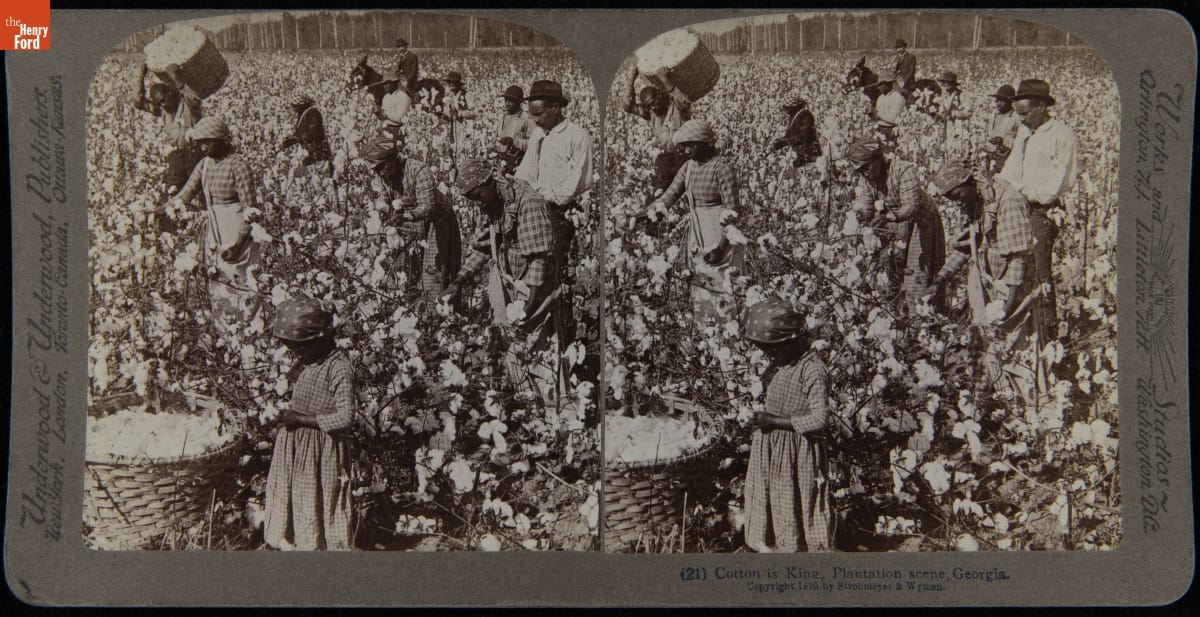
Cotton is King, Plantation Scene, Georgia, 1895 / THF278900
This new agricultural labor system—sharecropping—took hold across the cotton South. As the number of people laboring for a share of the crops increased, those laborers’ access to healthy foods decreased. Instead of gardening or raising livestock, sharecroppers had to concentrate on cash-crop production—either cotton or more localized specialty crops such as sugar cane, rice, or tobacco. Anything they grew for themselves on their landlord’s property went first to the landlord.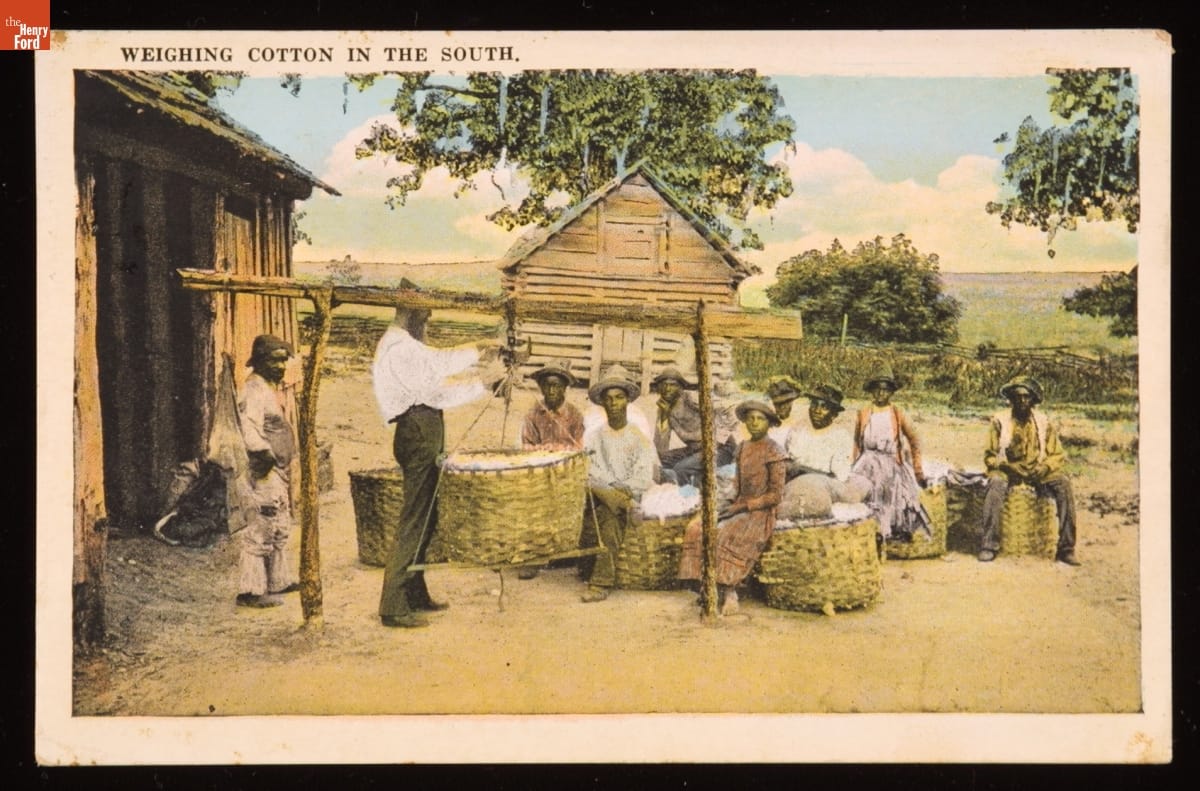
Postcard, "Weighing Cotton in the South," 1924 / THF8577
With no incentive or opportunity to garden, sharecroppers had few options but to buy groceries on credit from local merchants, who often were also the landowners. A failed crop left sharecroppers even more indebted, impoverished, and malnourished. This had lasting consequences for all, but race discrimination further disadvantaged Black Southerners, as sociologist Stewart Tolnay documented in The Bottom Rung: African American Family Life on Southern Farms (1999).
As food insecurity increased across the South, educators added agricultural and domestic science to classroom instruction. Many schools, especially land-grant colleges, gained distinction because of this practical instruction. Racism, however, limited Black students’ access to education. Administrators secured private funding to deliver similar content to Black students at private institutes and at a growing number of public teacher-training schools across the South.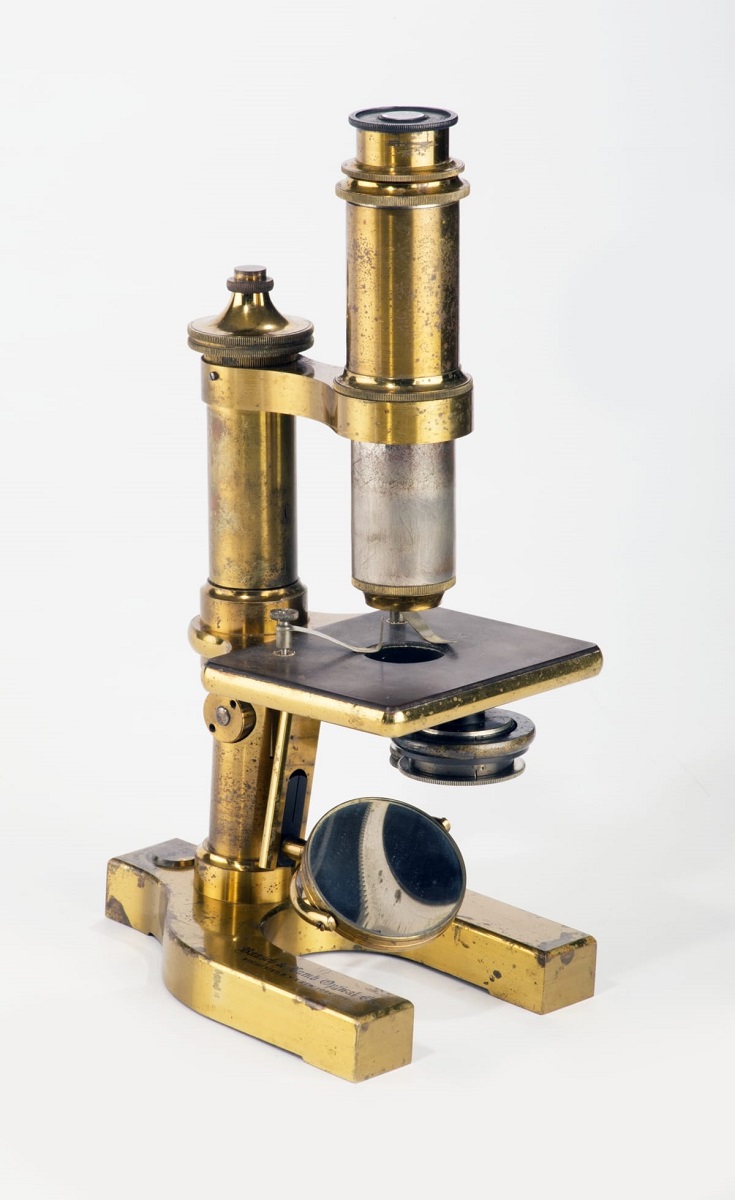
Microscope Used by George Washington Carver, circa 1900, when he taught agricultural science at Tuskegee Normal and Industrial Institute, as it was known at the time. / THF163071
Lessons in domestic science aligned with agricultural science most obviously in courses in market gardening. A pamphlet, Everyday Life at Hampton Institute, published around 1907, featured students cultivating, harvesting, and marketing fresh fruits and vegetables. Female students also processed and preserved these foods in domestic science classes. Graduates of these programs stood at the ready to share nutrition lessons. Many, however, criticized this training as doing too little to challenge inequity.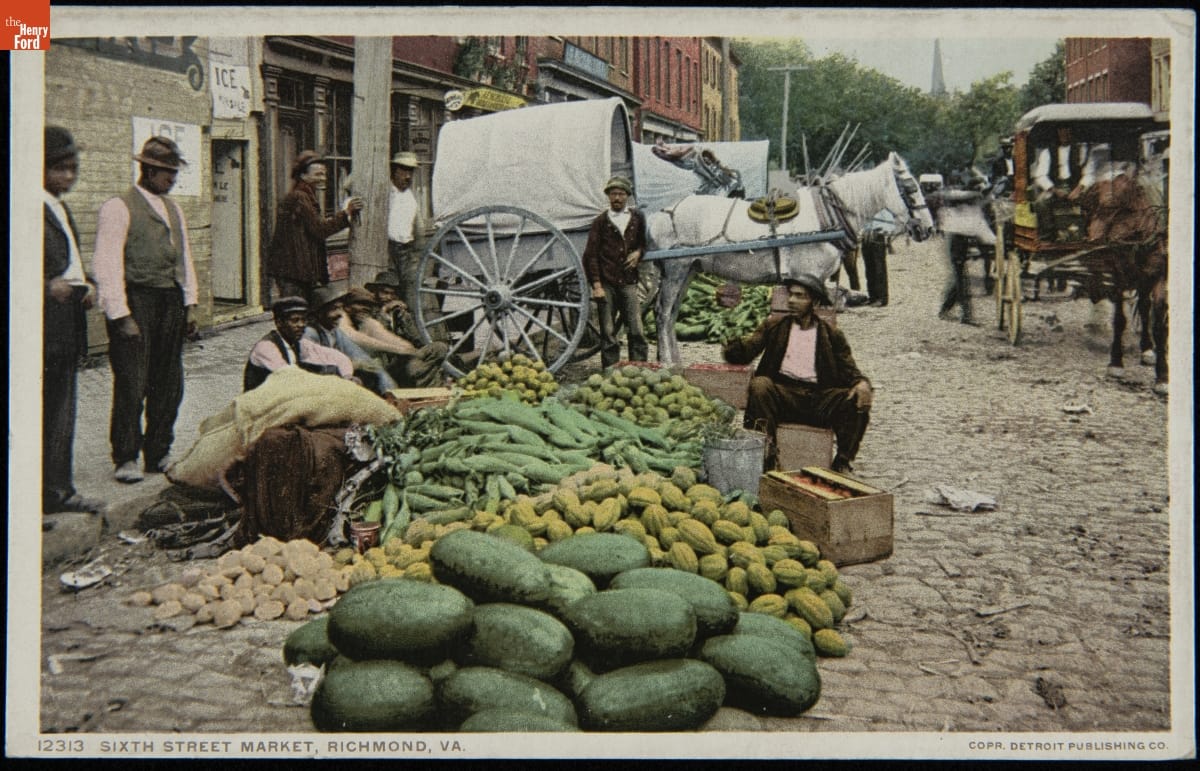
Sixth Street Market, Richmond, Va., 1908-1909 / THF278870
Undaunted food soldiers remained committed to arguing for the value of raising healthy foods to build healthy communities. They justified their advice by tying their self-help messages to other goals. Nature study, a popular approach to environmental education early in the twentieth century, became a platform on which agricultural scientist George Washington Carver built his advocacy for gardening, as Nature Study and Children’s Gardens (1910) indicates.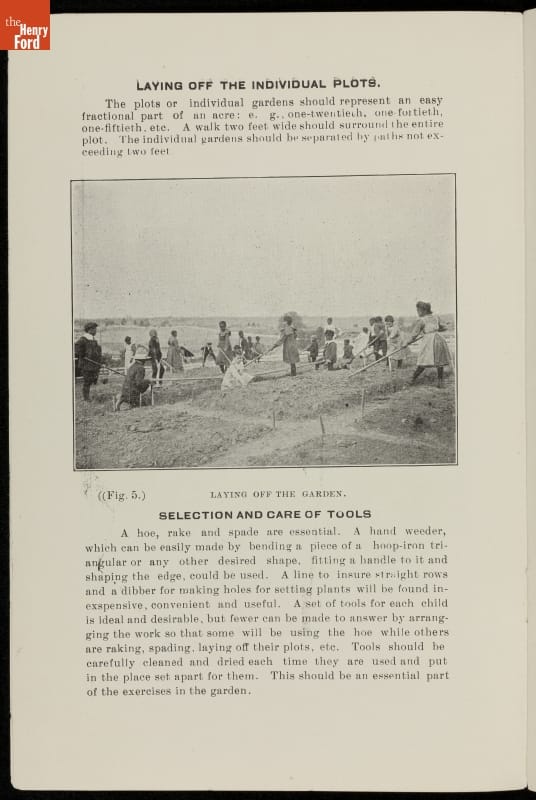
Nature Study and Children's Gardens, circa 1910, page 6 / THF213304
Opportunity increased as the canning industry offered new opportunities for farm families to produce perishable fruits and vegetables for shipment to processors, as well as for home use. Black experts in agriculture and domestic science encouraged Black landowning farm families that could afford the canning equipment to embrace this opportunity. These families also had some local influence and could encourage broader community investment in new market opportunities, including construction of community canning centers and purchase of canning equipment to use in them.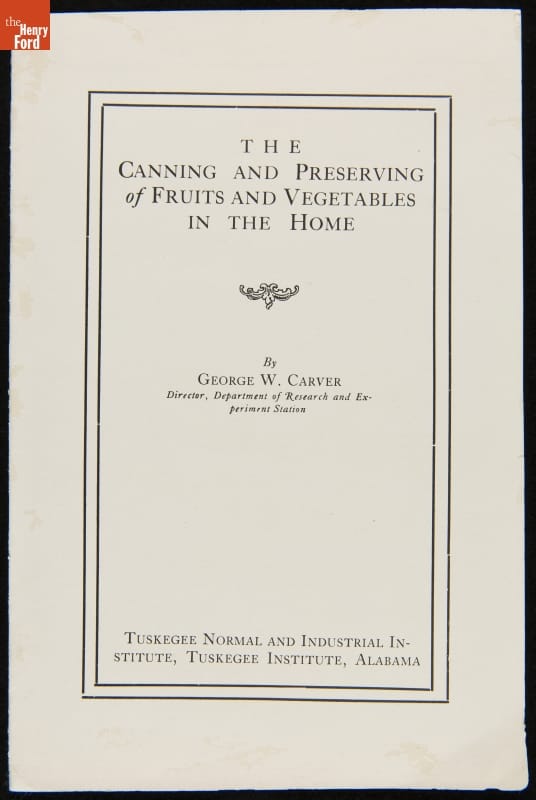
The Canning and Preserving of Fruits and Vegetables in the Home, 1912 / THF288039
Nutritionists who worked with Black land-owning farm families reached only about 20 percent of the total population of Black farmers in the South. Meeting the needs of the remaining 80 percent required work with churches, clubs, and other organizations. National Health Week, a program of the National Negro Business League, began in 1915 to improve health and sanitation. This nation-wide effort put the spotlight on need and increased opportunities for Black professionals to coordinate public aid that benefitted families and communities.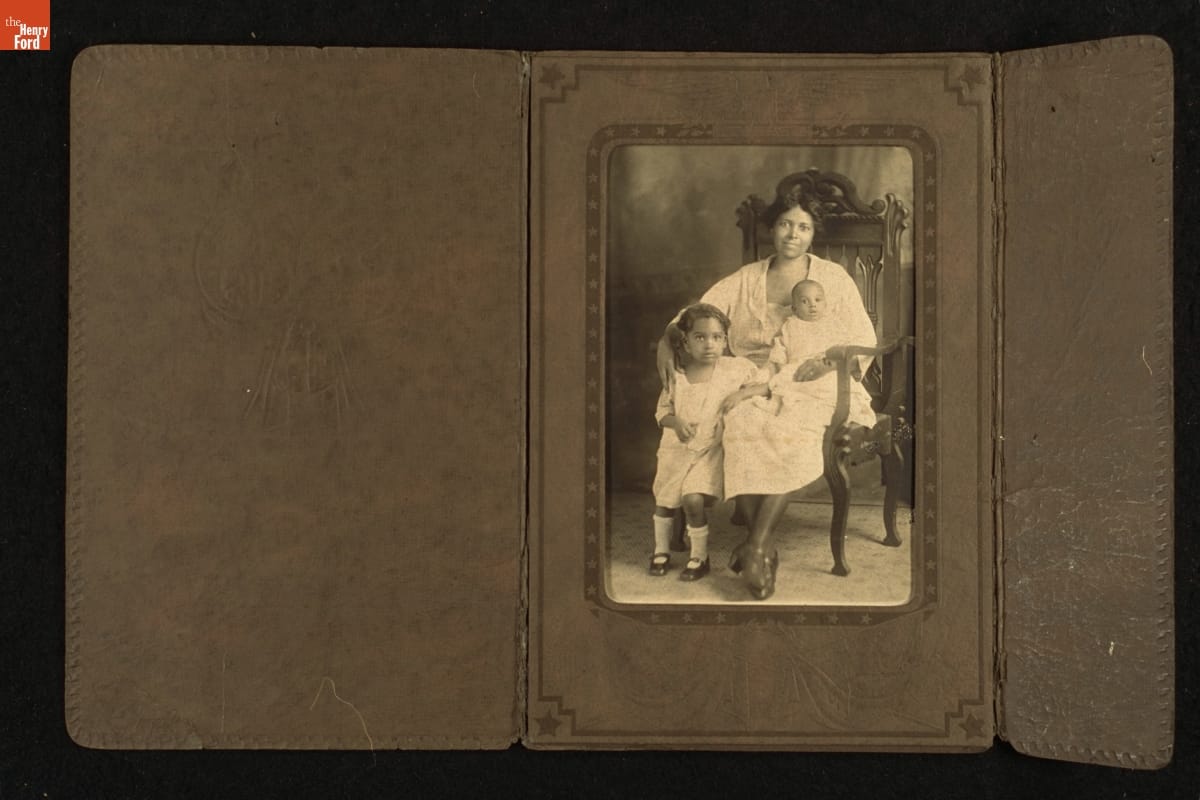
Nutritionists advocated for maternal health. This studio portrait features a woman with two children, circa 1920, all apparently in good health. / THF304686
New employment opportunities for nutritionists became available during the mid-1910s. Each Southern state created a “Negro” Division within its Agricultural Extension Service, a cooperative venture between the national government’s U.S. Department of Agriculture and each state’s public land-grant institution. Many hired Black women trained at historically Black colleges across the South. They then went on the road as home demonstration agents, sharing the latest information on nutrition and food preservation.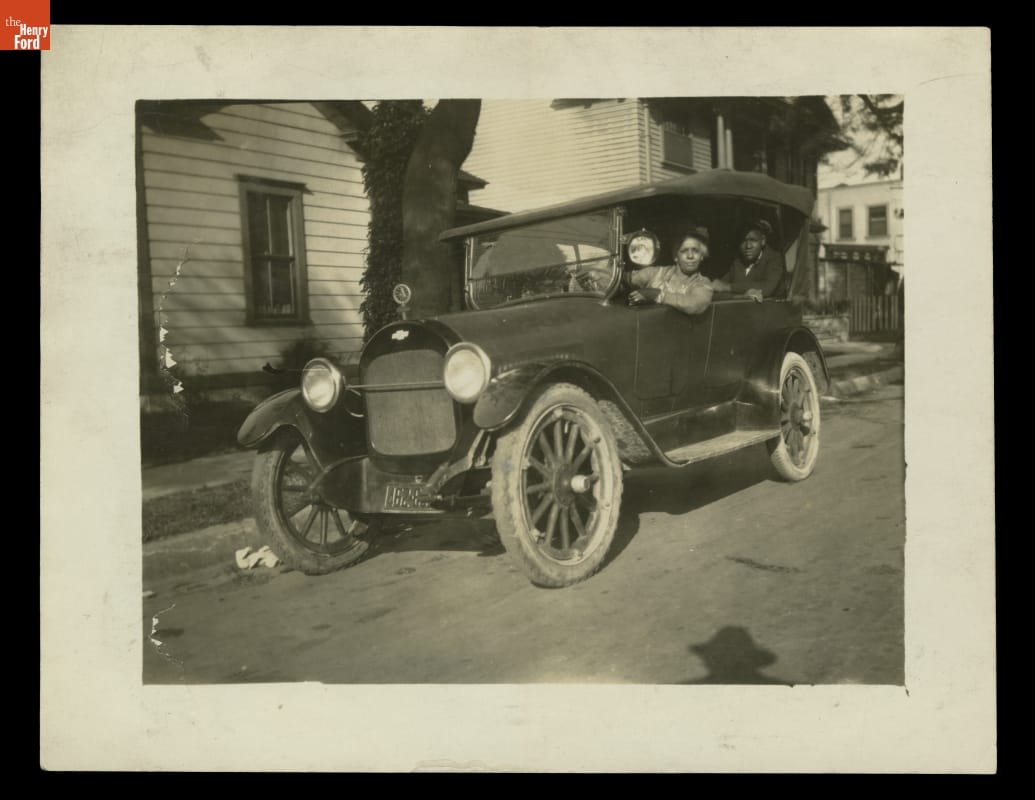
Woman driving Chevrolet touring car, circa 1930. Note that the driver of this car is unidentified, but she represents the independence that professional Black women needed to do their jobs, which required travel to clients and work-related meetings. / THF91594
Class identity affected tactics. Black nutritionists were members of the Black middle class. They shared their wellness messages with other professional women through “Colored” women’s club meetings, teacher conferences, and farmer institutes.
Home economics teachers and home demonstration agents worked as public servants. Some supervisors advised them to avoid partisanship and activist organizations, which could prove difficult. For example, the National Association for the Advancement of Colored People (NAACP), most noted for attacking inequity through legal challenges, first hosted Baby Contests in 1924. These contests had double meanings. For nutritionists, healthy babies illustrated their wellness message. Yet, “Better Baby” contests had a longer history as tools used by eugenicists to illustrate their race theory of white supremacy. The most impoverished and malnourished often benefitted least from these middle-class pursuits.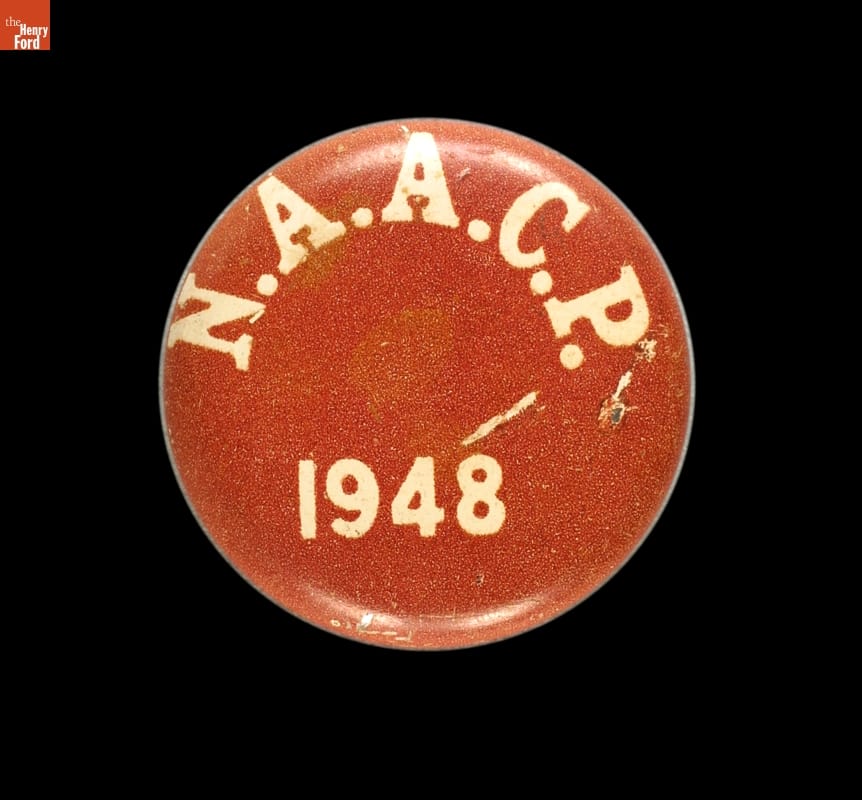
Button, National Association for the Advancement of Colored People, 1948 / THF1605
Nutrition
Nutrition became increasingly important as science linked vitamins and minerals to good health. While many knew that poor diets could stunt growth rates and negatively affect reproductive health, during the 1920s and 1930s medical science confirmed vitamins and minerals as cures for some diseases that affected children and adults living in poverty. This launched a virtual revolution in food processing as manufacturers began adding iodine to salt to prevent goiters, adding Vitamin D to milk to prevent rickets, and adding Vitamin B3 to flour, breads, and cereals to prevent pellagra.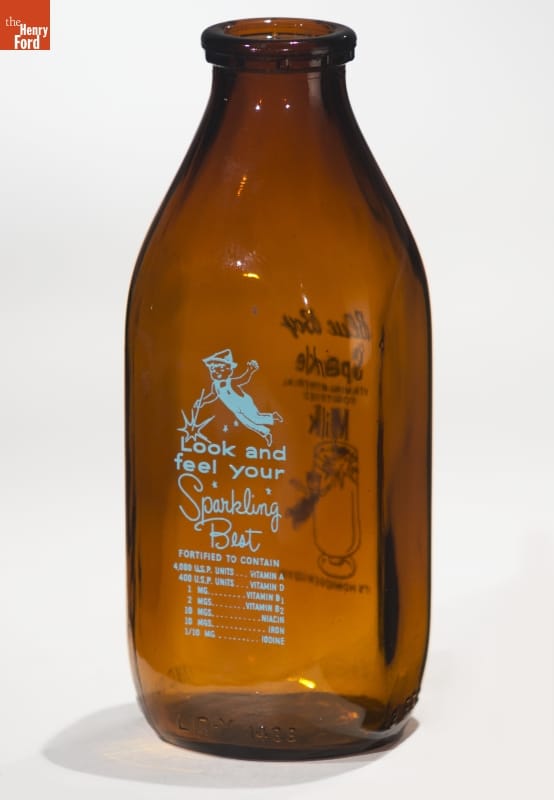
"Blue Boy Sparkle" Milk Bottle, 1934-1955 / THF169283
It was immediately obvious that these cures could help all Americans. The American Medical Association’s Committee on Foods called for fortifying milk, flour, and bread. The National Research Council first issued its “Recommended Dietary Allowances” in 1941. Information sharing increased during World War II as new wartime agencies reiterated the benefits of enriched foods.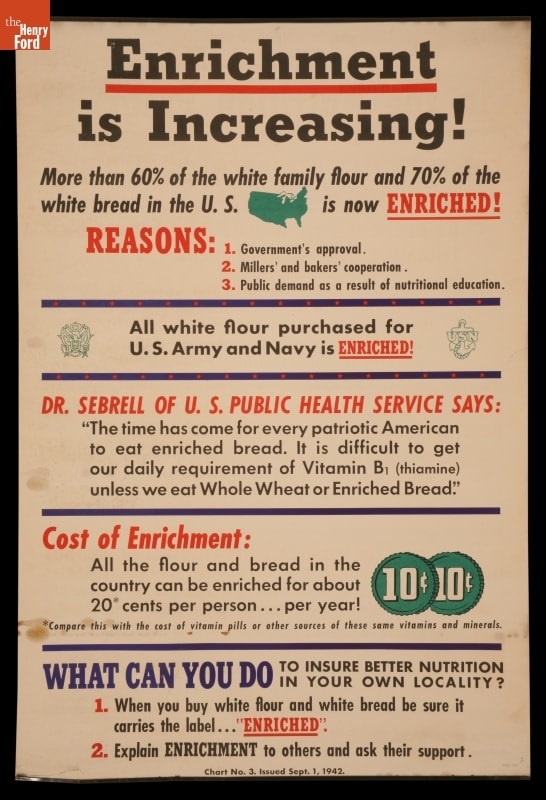
World War II Poster, "Enrichment is Increasing; Cereals in the Nutrition Program," 1942 / THF81900
Black nutritionists played a significant role in this work for many reasons. They understood that enriched foods could address the needs of Black Americans struggling with health concerns. They knew that poverty and unequal access to information could slow adoption among residents in impoverished rural Black communities. Black women trained in domestic science or home economics also understood how racism affected health care by reducing opportunities for professional training and by segregating care into underfunded and underequipped doctor’s offices, clinics, and hospitals. That segregated system further contributed to ill health by adding to the stress level of individuals living in an unequal system.
Mobilization during World War II offered additional opportunities for Black nutritionists. The program for the 1942 Southern Negro Youth Conference at Tuskegee Institute addressed “concrete problems which the war has thrust in the forefront of American life.” Of the conference’s four organizing principles, two spoke directly to the aims of food soldiers: "How can Negro youth on the farms contribute more to the nation’s war production effort?” and “How can we strengthen the foundations of democracy by improving the status of Negro youth in the fields of: health and housing; education and recreation; race relations; citizenship?”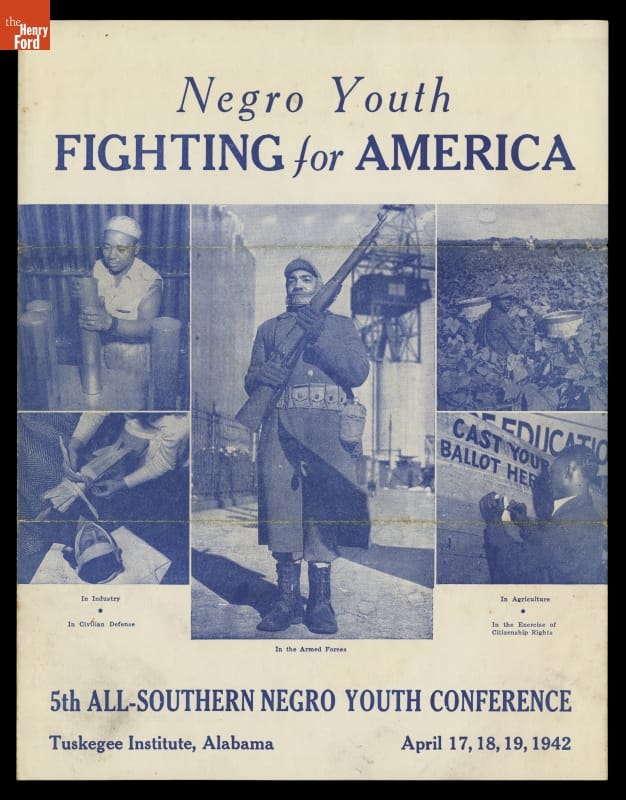
Program for the 5th All -Southern Negro Youth Conference, "Negro Youth Fighting for America," 1942 / THF99161
Extending the Reach
Food soldiers knew that the poorest suffered the most from malnutrition, but times of need tended to result in the most proactive legislation. For example, high unemployment during the Great Depression led to increased public aid. The Works Progress Administration (WPA) built new schools with cafeterias and employed dieticians to establish school lunch programs. Impoverished families also had access to food stamps to offset high food prices for the first time in 1939 through a New Deal program administered by the U.S. Department of Agriculture.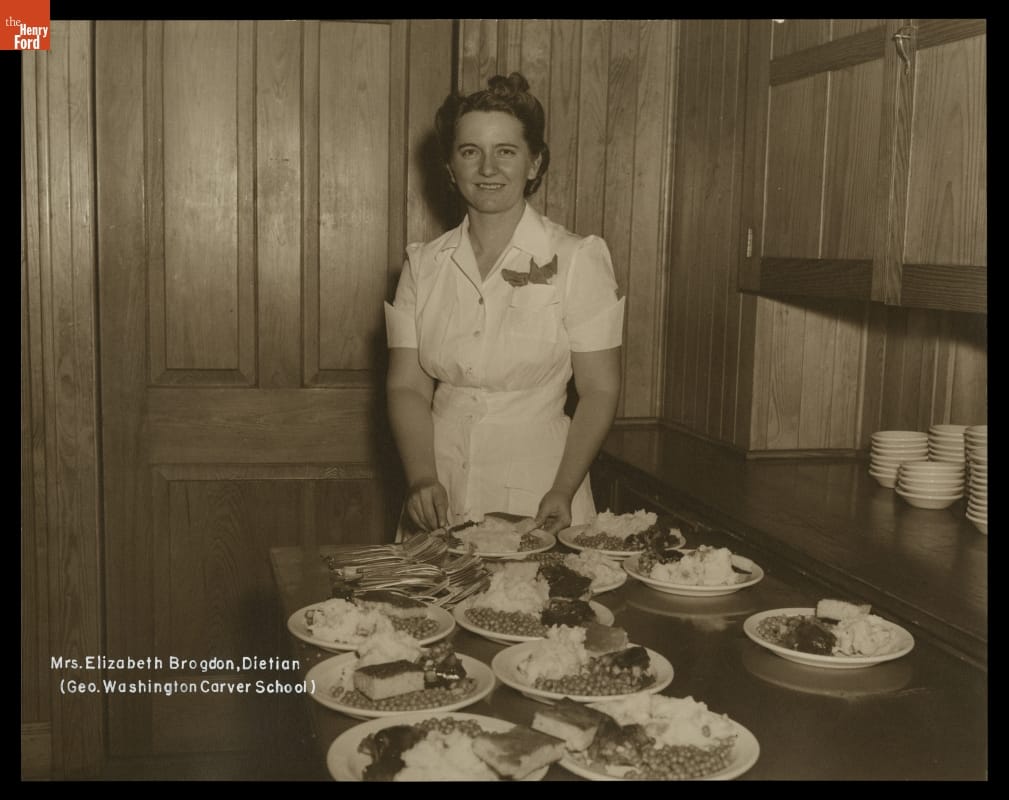
Elizabeth Brogdon, Dietitian at George Washington Carver School, Richmond Hill, Georgia, circa 1947 / THF135669
Elizabeth Speirs Brogdon (1915–2008) opened school lunchrooms under the auspices of the WPA in 19 Georgia counties for six years. She qualified for her position with a B.S. in home economics from Georgia State College for Women, the state’s teacher’s college, and graduate coursework in home economics at the University of Georgia (which did not officially admit women until after she was born).
While Mrs. Brogdon could complete advanced dietetics coursework in her home state, Black women in Georgia had few options. The Georgia State Industrial College for Colored Youth, designated as Georgia’s Black land-grant school at the time, did not admit women as campus residents until 1921, and did not offer four-year degrees until 1928. Black women seeking advanced degrees in Home Economics earned them at Northern universities.
Flemmie Pansy Kittrell (1904–1980), a native of North Carolina and graduate of Virginia’s Hampton Institute, became the first Black woman to hold a PhD in nutrition (1938) from Cornell University. Her dissertation, “A Study on Negro Infant Feeding Practices in a Selected Community of North Carolina,” indicated the contribution that research by Black women could have made, if recognized as valid and vital.
Increased knowledge of the role of nutrition in children’s health informed Congress’s approval of the National School Lunch Program in 1946. In addition to this proactive legislation, some schools, including the school in Richmond Hill, Georgia, where dietitian Elizabeth Brogdon worked, continued the tradition of children’s gardens to ensure a fresh vegetable supply.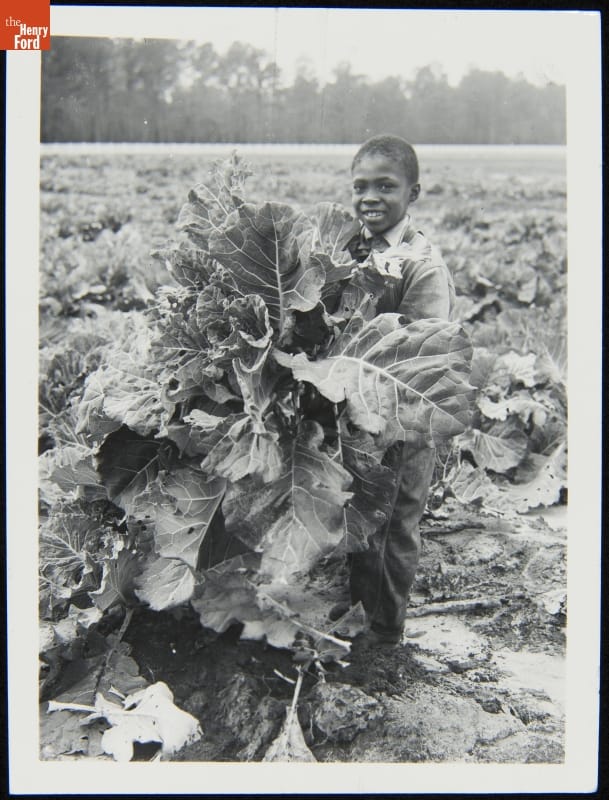
Child in a School Vegetable Garden, Richmond Hill, Georgia, circa 1940 / THF288200
The pace of reform increased with the arrival of television. The new medium raised the conscience of the nation by broadcasting violent suppression of peaceful Civil Rights demonstrations. This coverage coincided with increased study of the debilitating effects of poverty in the United States. Michael Harrington’s book The Other America (1962) increased support for national action to address inequity, including public health. President Lyndon Baines Johnson’s “War on Poverty” became a catalyst for community action, action that Kenneth Bancroft Clark analyzed in A Relevant War Against Poverty (1969).
Michigan examples indicate how agricultural policy expanded public aid during the 1960s. President Johnson’s War on Poverty expanded public programs. This included a new Food Stamp Program in 1964, a recommitment to school lunch programs, and new nutrition education programs, all administered through the U.S. Department of Agriculture.
Nutritionists, including June L. Sears, played a central role in implementing this work.
“June Sears, Rosemary Dishman, and Dorothy Ford Discussing Women's Nutrition,” May 1970. Rosemary Dishman served as a program aide and Dorothy Ford as supervising aide for Michigan’s Expanded Nutrition Program. / THF620081
Mrs. Sears earned her bachelor’s and master’s degrees from Wayne State University in Detroit and taught home economics before becoming the “Family Living Agent” in the Cooperative Extension Service of Michigan State University (Michigan’s land-grant university). In that capacity, she, along with Rosemary Dishman and Dorothy Ford, worked with low-income families in two metropolitan Detroit counties (Wayne and Oakland), educating them about nutrition and meal planning. The USDA’s Expanded Food and Nutrition Education Program (EFNEP), funded in 1969, sustained this work.
Public aid became a central component of U.S. farm bills by 1973. That year, the Agriculture and Consumer Protection Act reaffirmed the deployment of excess agricultural production to meet consumer need. Additional legislation, the Special Supplemental Nutrition Program for Women, Infants, and Children (WIC), funded in 1975, and the Supplemental Nutrition Assistance Program (SNAP), evolved to meet need.
And need was great.
Detroit Mayor Coleman Young explained in February 1975 that as many as 200,000 of his city’s 1.5 million citizens were undernourished. This extreme need existed despite efforts to address food insecurity, documented as an issue that mobilized protestors during the violent summer of 1967. Then, investigations by Detroit-based Focus: HOPE, a community advocacy organization, confirmed that food was more expensive for lower-income Detroiters than for some wealthier suburbanites, a condition now described as a “food desert.”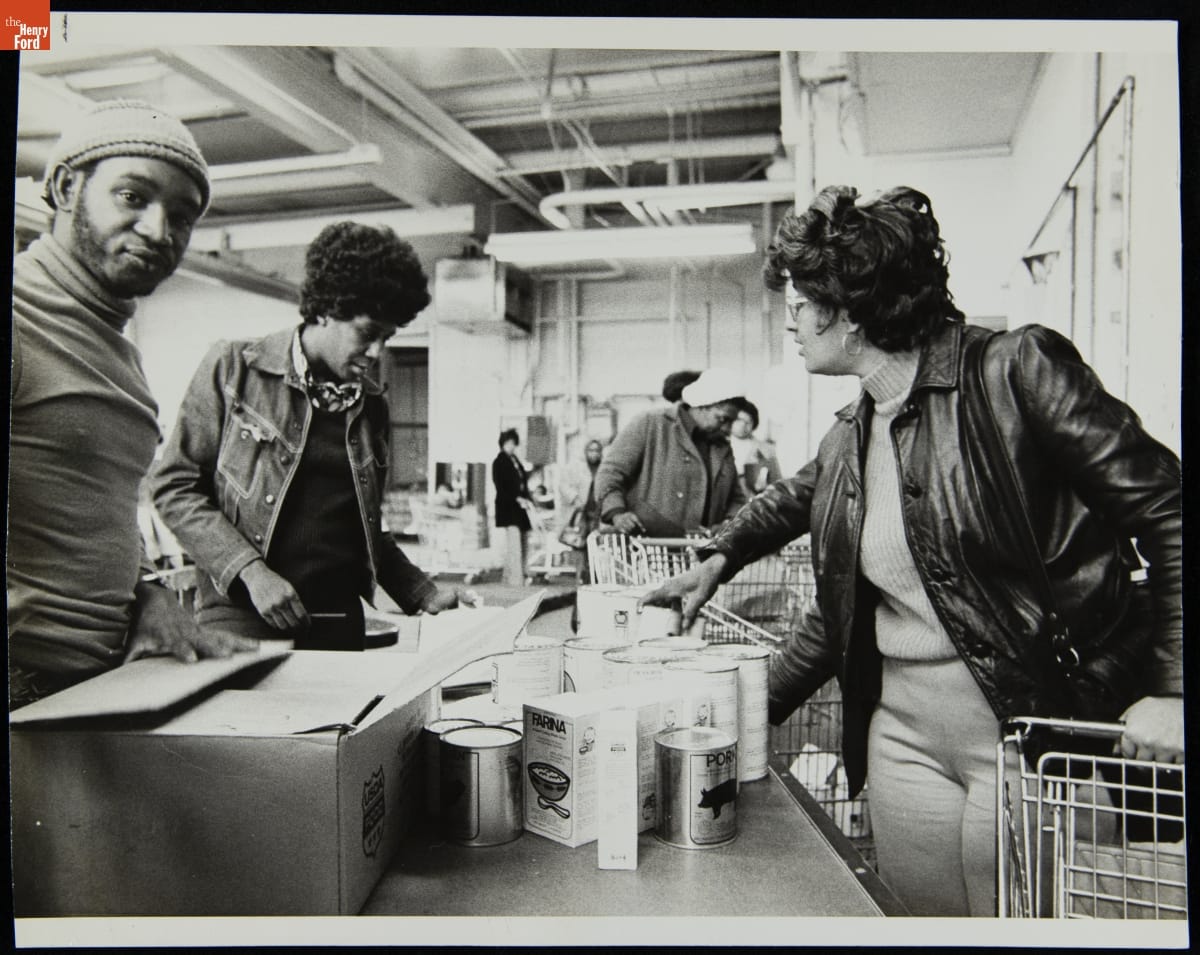
“Depression's Harsh Impact at the Focus: HOPE Food Prescription Center in Detroit” Photograph, March 1975 / THF620068
Focus: HOPE staff opened a “Food Prescription Center,” stocked with USDA commodities that included enriched farina wheat cereal, canned meats, and other supplements.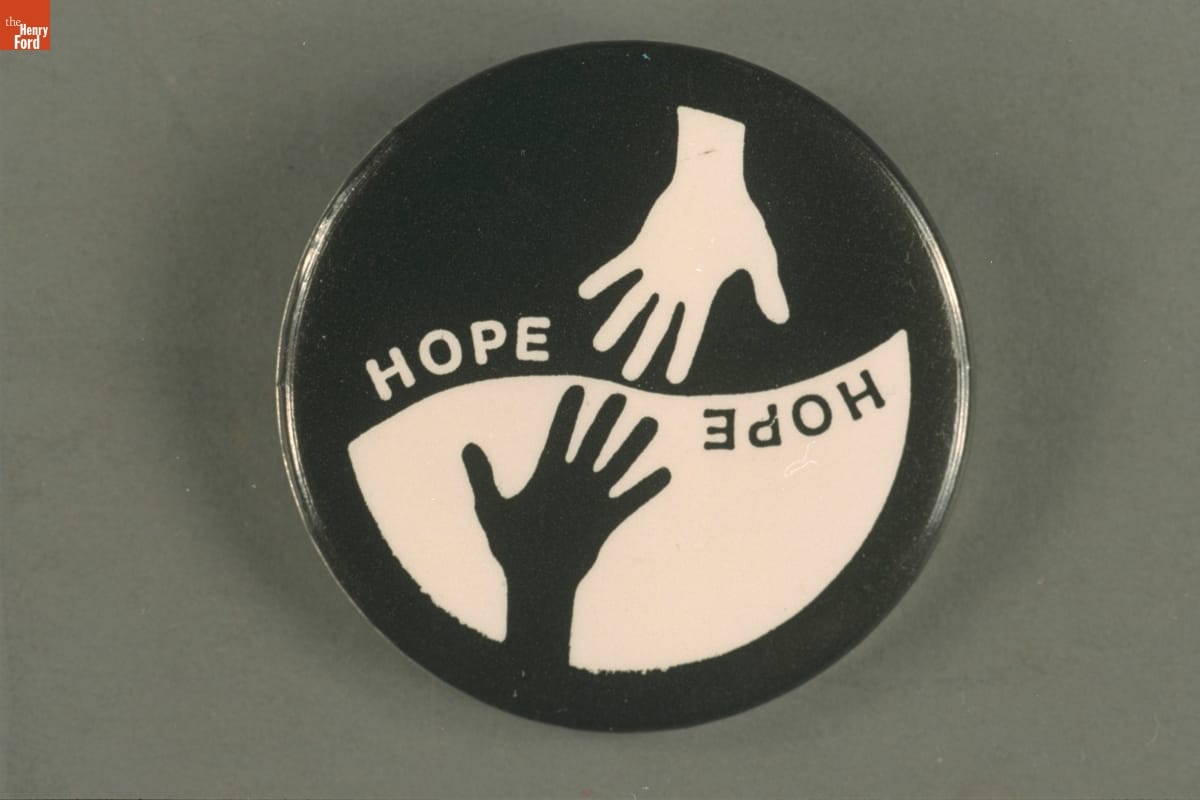
Focus: HOPE Button, 1999 / THF98376
Commodity packaging has changed, as has farm policy over the years, but nutrition remains foundational to human health and well-being, and private and public partnerships remain essential to meeting need. The work continues with organizations such as Diversify Dietetics, Inc., which exists “to increase the racial and ethnic diversity in the field of nutrition.”
Food & Freedom
While nutritionists worked with schools, cooperative demonstration programs, and public service organizations, another brigade of food soldiers linked farming to full citizenship.
Mississippi activist Fannie Lou Hamer built her freedom struggle around land ownership and family farming. She founded Freedom Farms Cooperative to provide land to displaced sharecroppers, where they could grow crops and livestock and build self-esteem.
Hamer’s story, and those of other Black farm advocates, draw attention to a farm movement linked to the freedom struggle. A rich and growing body of scholarship indicates how much there is to learn about this movement. Two books, Greta De Jong’s You Can’t Eat Freedom: Southerners and Social Justice after the Civil Rights Movement (2016) and Monica M. White’s Freedom Farmers: Agricultural Resistance and the Black Freedom Movement (2018), document the geographic range and approaches taken by food soldiers. White devotes a chapter to the Detroit Black Community Food Security Network as an example of Northern urban agriculture.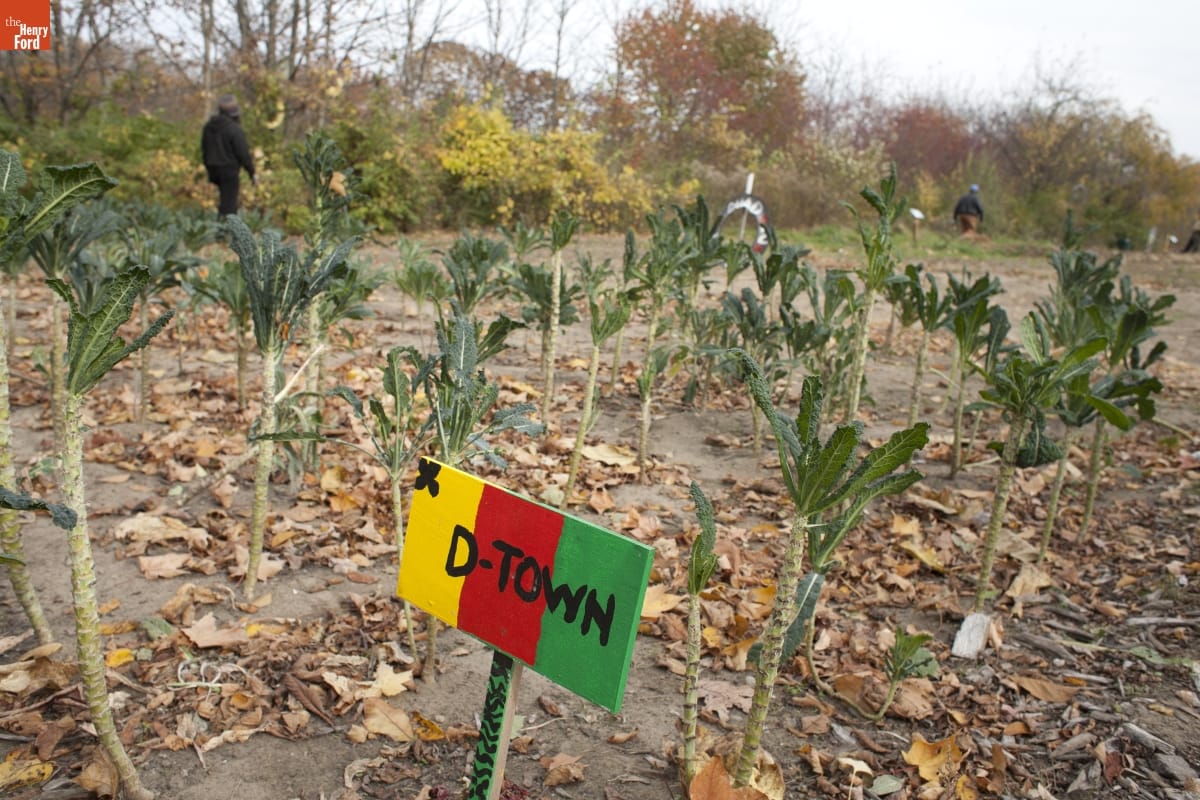
Brussel Sprout Stalks after Harvest, Detroit Black Community Food Security Network, October 30, 2010 / THF87927
Other farmers write their own story, as does Leah Penniman, recipient of the James Beard Leadership Prize in 2019. She outlines best practices for establishing and sustaining a Black farm cooperative in her book, Farming While Black: Soul Fire Farm's Practical Guide to Liberation on the Land (2018).
Another model takes the form of social entrepreneurship, as undertaken by Melvin Parson, The Henry Ford’s first Entrepreneur in Residence (2019), funded by the William Davidson Foundation Initiative for Entrepreneurship. You can hear Farmer Parson (as his friends call him) compare his entrance into market gardening to taking a seat at the table as a full member of society.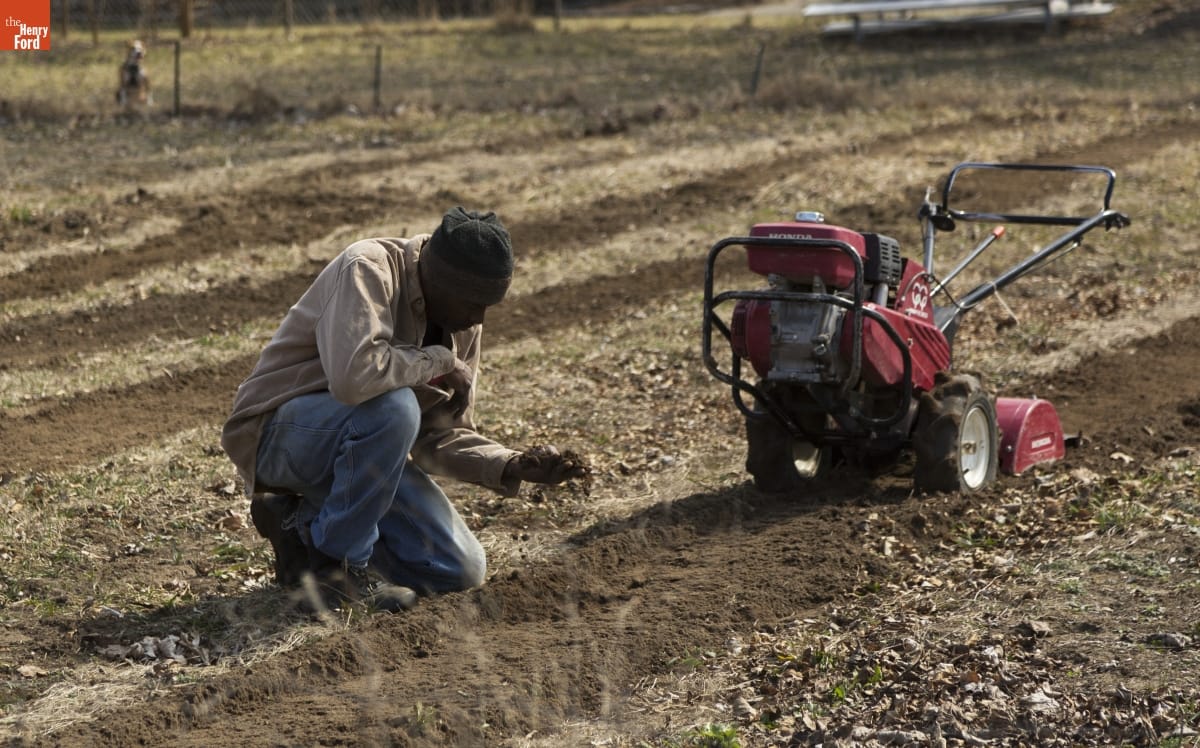
“Melvin Parson Gardening during the Entrepreneurship Interview” / THF295401
Farmer Parson founded We The People Growers Association (now We The People Opportunity Farm) to help formerly incarcerated individuals transition back into freedom.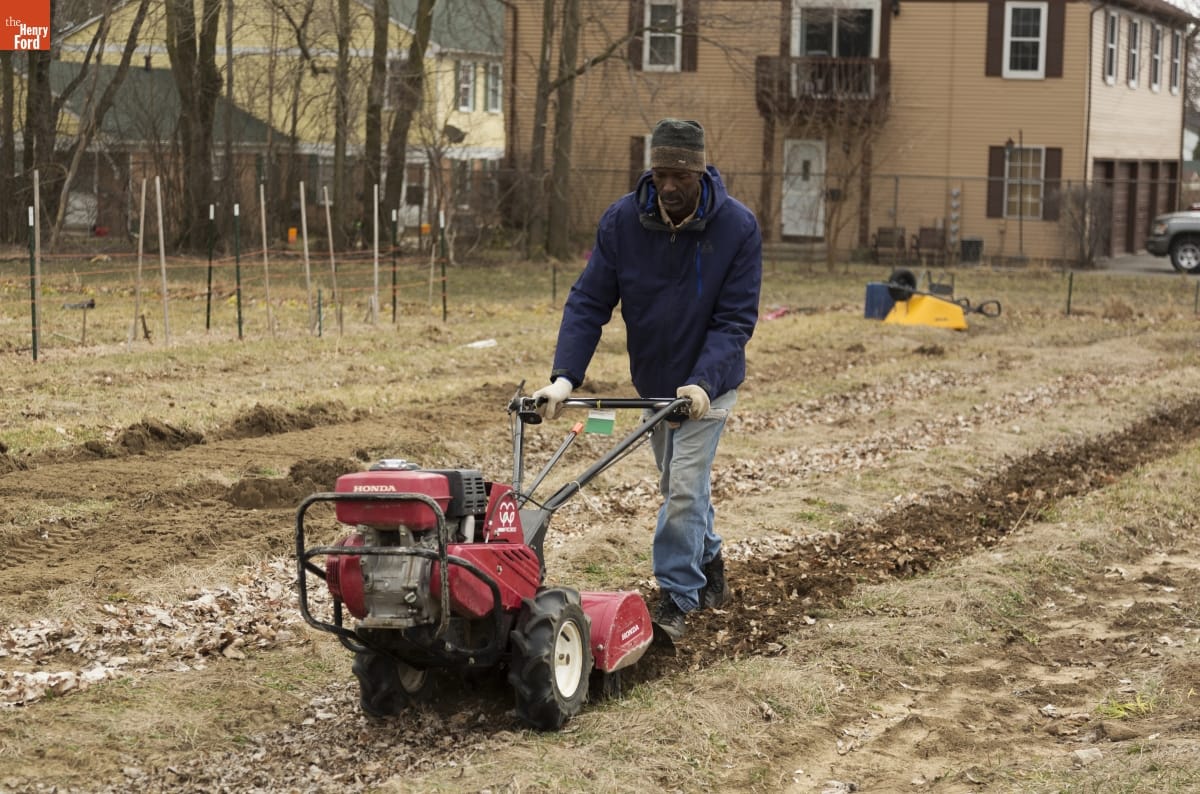
“Melvin Parson Gardening during the Entrepreneurship Interview” / THF295369
What nutritionist would you feature in your poster depicting the power of healthy food and race activism?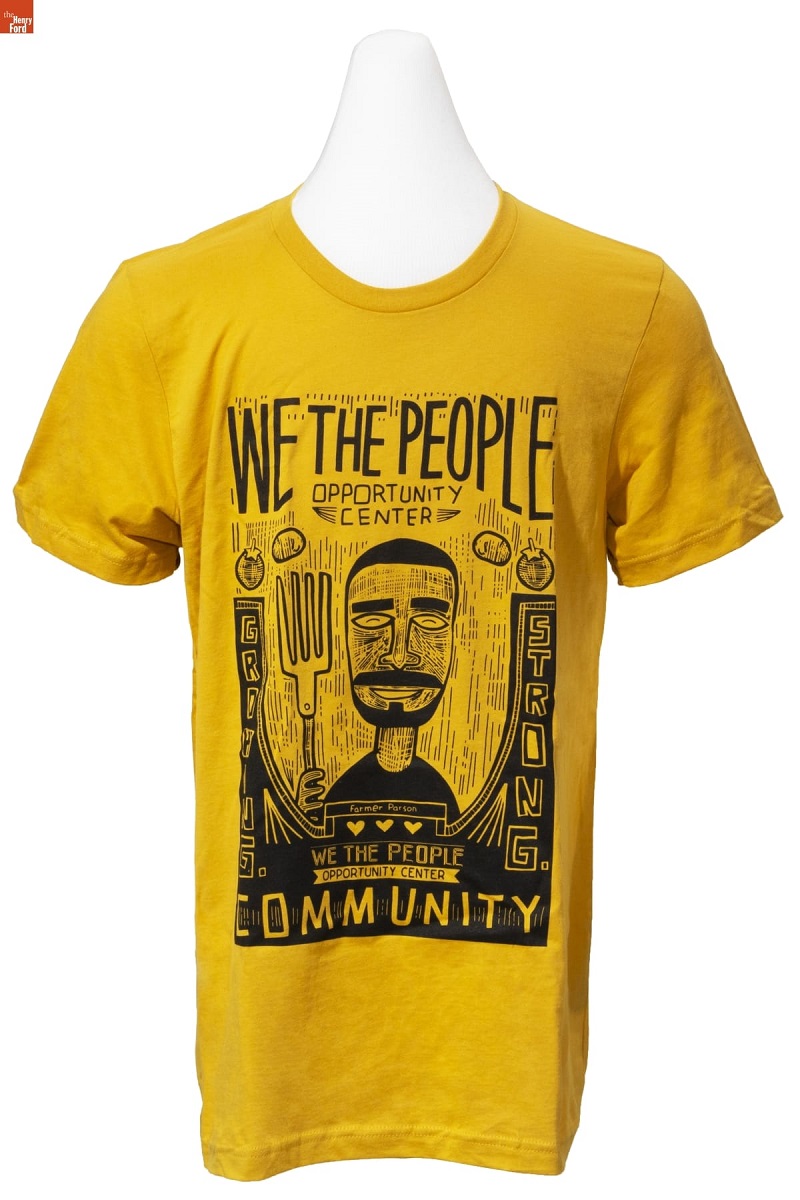
“We The People Opportunity Center” T-Shirt, circa 2019 / THF185710
Learn more with a visit to our pop-up exhibit on the same topic in Henry Ford Museum of American Innovation now through March 31.
Debra A. Reid is Curator of Agriculture and the Environment at The Henry Ford.
food insecurity, women's history, Henry Ford Museum, food, farms and farming, education, Civil Rights, by Debra A. Reid, agriculture, African American history, #THFCuratorChat
Elijah McCoy’s Steam Engine Lubricator
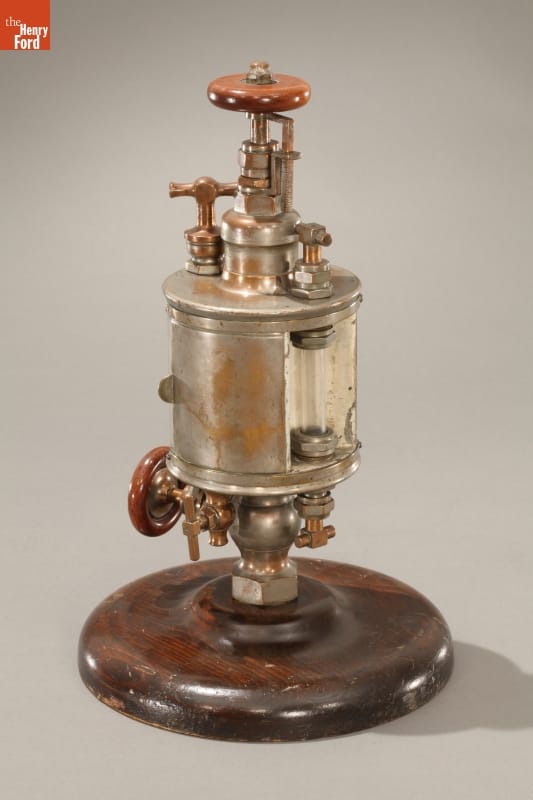
Steam Engine Lubricator, 1882 / THF152419
You may have heard the saying, “The Real McCoy.” Popular belief often links the phrase to the high quality of a device patented by Black engineer Elijah McCoy.
Elijah McCoy was born on a farm in Canada to formerly enslaved parents. His father, George McCoy, had rolled cigars to earn the $1,000 required to buy his freedom. But money could not buy freedom for George’s love, Mildred “Millie” Goins, so George and Millie escaped her Kentucky master and became fugitives, settling in Colchester, Canada. They became farmers and had twelve children, including Elijah, born around 1844.
Elijah McCoy’s interest in machines led him to pursue formal study and an apprenticeship in engineering in Scotland. When he returned, he joined his family in Ypsilanti, Michigan.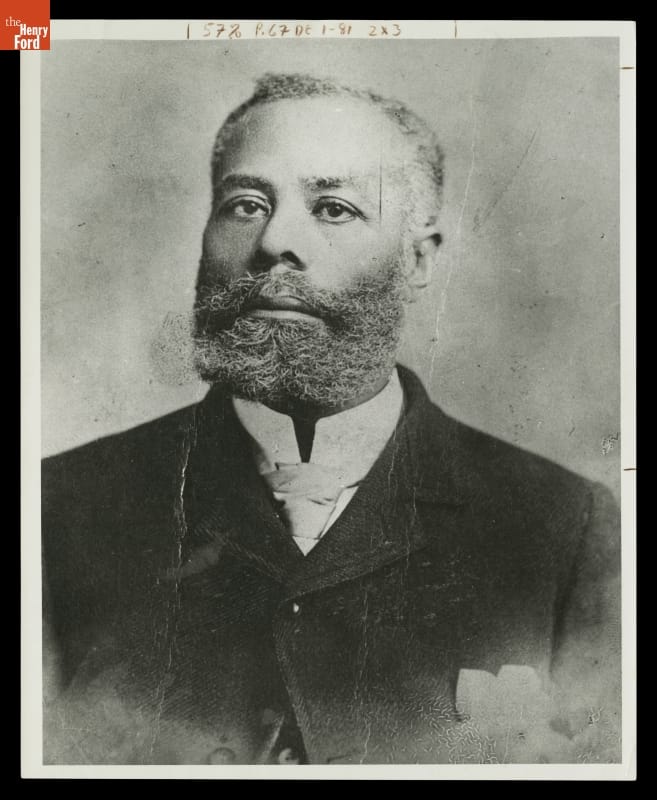
Portrait of Elijah McCoy, circa 1895 / THF108432
But employers, blinded by racism, could not see his talent. Instead, in 1865, the Michigan Central Railroad offered McCoy the dangerous job of oilman and fireman. The need to constantly oil the moving parts of a locomotive AND shovel coal into the engine’s firebox soon sent him to the drawing board. In 1872, McCoy patented his own “improvement in lubricators for steam-engines,” the first of at least 52 patents and design registrations he secured during his lifetime.
For the next 40 years, McCoy patented many improvements for his automated oil-drip mechanism, updating his device as steam-engine design and operation changed. The steam engine lubricator cup pictured above (and on exhibit in Made in America in Henry Ford Museum of American Innovation) resulted from improvements patented in 1882. Today, the U.S. Patent and Trademark Office branch in Detroit bears his name, a fitting tribute to an innovator who moved locomotives—if not mountains.
This post was adapted from a stop on our forthcoming “Stories of Black Empowerment” tour of Henry Ford Museum of American Innovation in the THF Connect app, written by Debra A. Reid, Curator of Agriculture and the Environment at The Henry Ford. To learn more about or download the THF Connect app, click here.
Made in America, Henry Ford Museum, THF Connect app, railroads, Michigan, making, engineering, by Debra A. Reid, African American history
George Washington Carver’s Microscope
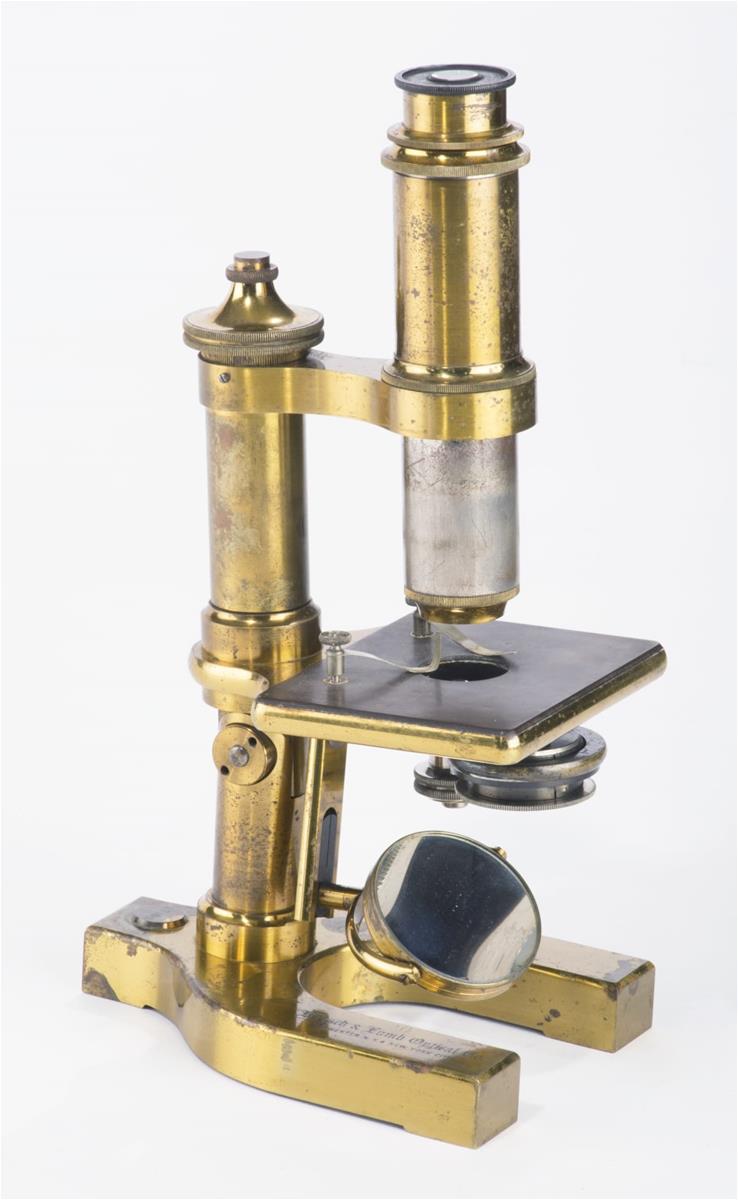
Microscope Used by George Washington Carver, circa 1900 / THF163072
This microscope, reputedly used by agricultural scientist George Washington Carver during his tenure at the Tuskegee Institute in Alabama, offers us a closer look at Black empowerment through Black education.
It took training to run educational laboratories, and administrators at Black schools sought qualified faculty to do the job. Booker T. Washington, principal at the private, historically Black Tuskegee Institute, recruited Carver as the one person who could build an agricultural research program comparable to the ones available to whites through other public land-grant institutions. Carver was qualified, having earned a master’s degree in agricultural science in 1896, the first Black American to do so.
Austin W. Curtis, Jr., who assisted Carver in his laboratory between 1935 and Carver’s death in 1943, donated and affirmed Carver's use of this microscope. Through it (and other scientific instruments), Carver documented the molecular structure of organic matter—the plants, fungi, bacteria, soils, and sedimentary material of Alabama and beyond. He translated his findings into how-to pamphlets, sharing strategies that Black families in the South could use to improve their own health and the health of their soils. Carver’s pamphlets also introduced hundreds of new uses for plant-based materials, ranging from livestock feed and medicines to pigments and synthetic polymers.
The highest level of learning requires analysis of original research. This microscope supported that cause while in use at Tuskegee Institute in Alabama, and it continues to help us focus on Black history.
You can see Carver's microscope for yourself in the Agriculture: Innovations in Farming exhibit in Henry Ford Museum of American Innovation.
This post was adapted from a stop on our forthcoming “Stories of Black Empowerment” tour of Henry Ford Museum of American Innovation in the THF Connect app, written by Debra A. Reid, Curator of Agriculture and the Environment at The Henry Ford. To learn more about or download the THF Connect app, click here.
Alabama, THF Connect app, Henry Ford Museum, George Washington Carver, education, by Debra A. Reid, agriculture, African American history, 20th century, 1900s
Honeybees + Humans
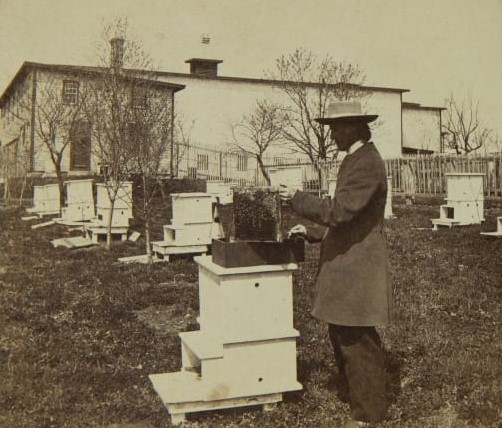
Detail, THF278671
An Introduction
Bees—one short name for about 20,000 species of flying insects classified into seven families. All live within social communities that depend on strict work routines; all seek the same food sources (pollen and nectar); and all process their harvest and preserve it in hives built in the ground, in hollow trees, or in human-designed apiaries.
Bees help plants reproduce by facilitating pollination as they search for pollen and nectar to feed themselves and their young. This relationship has long served plants well—DNA research confirms that bees coexisted with flowering plants from their beginning 130 million years ago.
Bees and humans have a much shorter, but more emotional, relationship. As pollinators, bees provide a critical link between humans and their food source: plants. Over millennia, humans domesticated one species of bee, native to Europe, Asia, and parts of Africa, to satisfy their needs—Apis mellifera, the Western or European honeybee. As Europeans colonized North America, they imported honeybees and the crops that honeybees pollinated from the bees’ native ecosystems.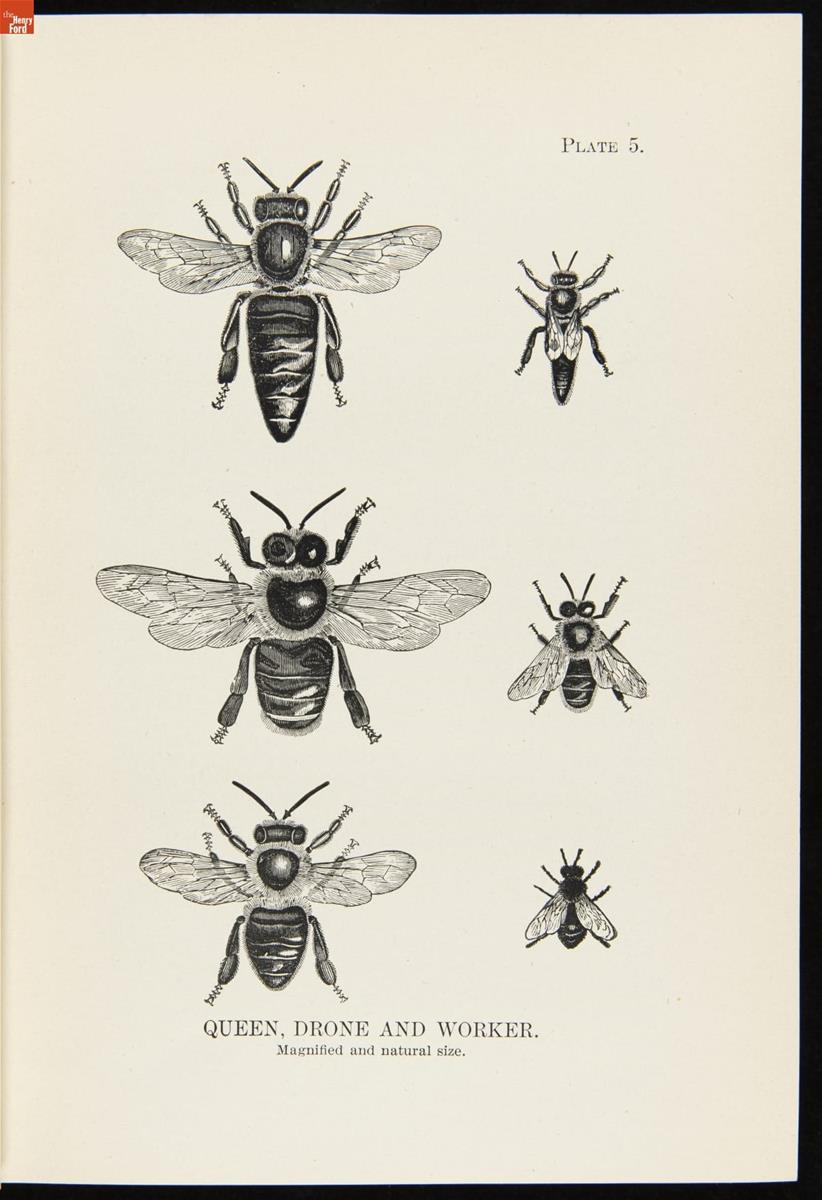
Illustrations of Apis mellifera, the Western or European honeybee / THF621311
Humans clustered hives of honeybees around orchards, grape arbors, and other areas of intense flowering-plant cultivation to ensure pollination. From the hives, they harvested honey—a natural sweetener that required little processing. The hives also produced honey, pollen, and bee venom, which had medicinal value. Beeswax was used to seal containers, produce candles, and create art. And queens from the hives propagated even more honeybees.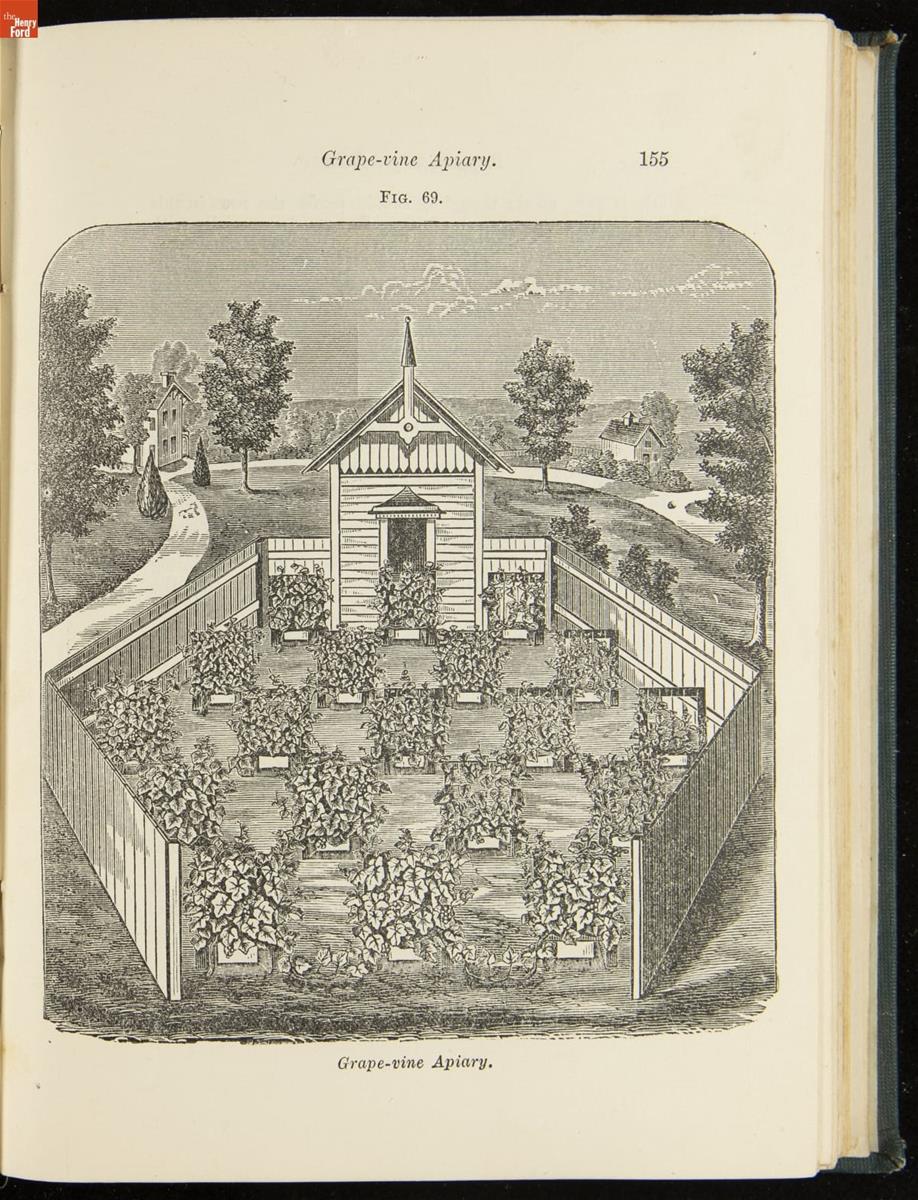
Group of beehives (apiary) designed for pollinating a grape arbor / THF621283
The Honeybee Hunt
Historically, honey-seeking humans learned to identify the location of an existing hive, usually in a hollow tree trunk. Some “baited” bees by setting out a little honey to attract a bee and following it back to its hive. This involved “lining” a bee—watching until it flew out of sight, moving closer to that location, waiting to see another bee in flight, and repeating the process. In short increments, this led honey-seekers to hives.
To secure their “own” honey supply and facilitate pollination of crops, humans sometimes moved existing hives closer to their gardens, orchards, and clover fields. They also hunted bee swarms. When a colony becomes too large, a queen will “hive off,” leaving with a portion of the hive’s population. (In the meantime, the remaining bees create a new queen to lead the original hive.) The departing bees swarm together near their former home, lingering only temporarily as scout bees search for a new nesting site. The reward for aspiring beekeepers who successfully encourage a swarm to take up residence in a hive of their own choosing is sweet.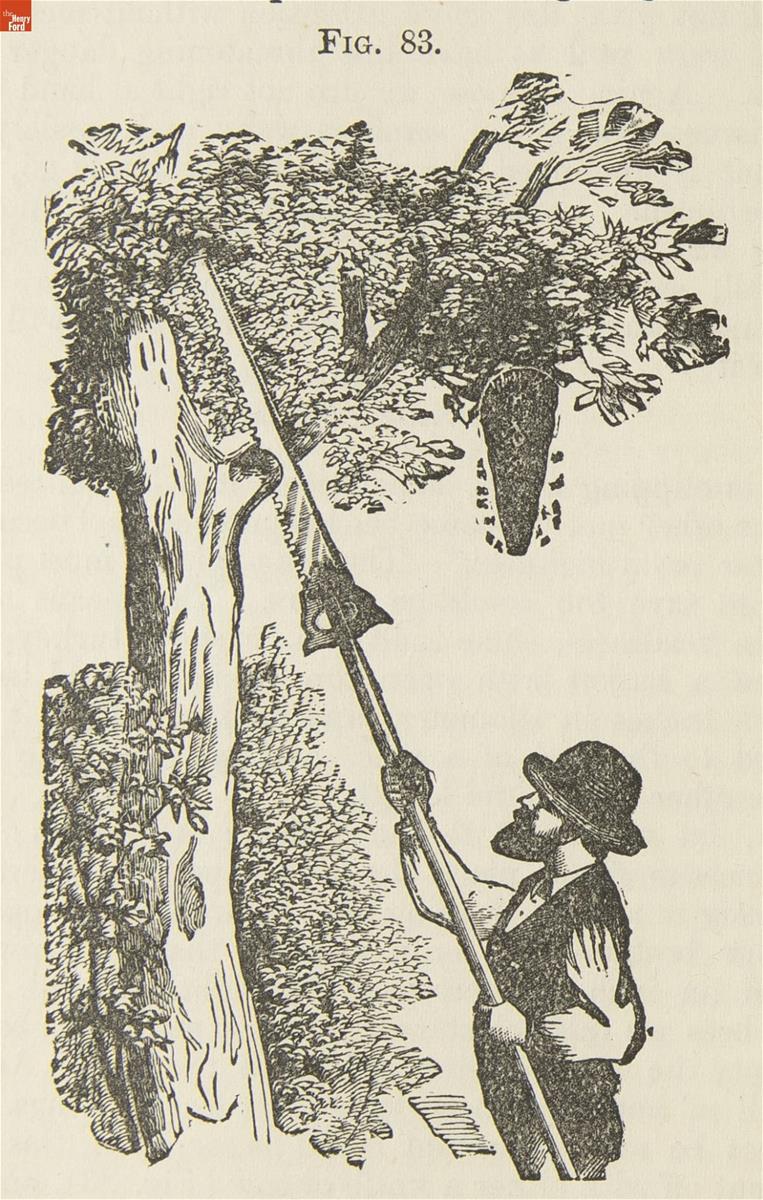
Aspiring beekeepers lured swarms or moved existing hives closer to their crops and kitchens. / THF621285
Housing Honeybees
Beekeepers first mimicked nature, luring swarms of bees into hollow logs much like the tree trunks they’d abandoned. Before long, humans devised prefabricated housing to keep pollinators close to gardens, orchards, and clover fields, and to keep honey close to the kitchen table. These hives, often grouped together in apiaries, took many forms, from simple boxes to highly decorated contrivances.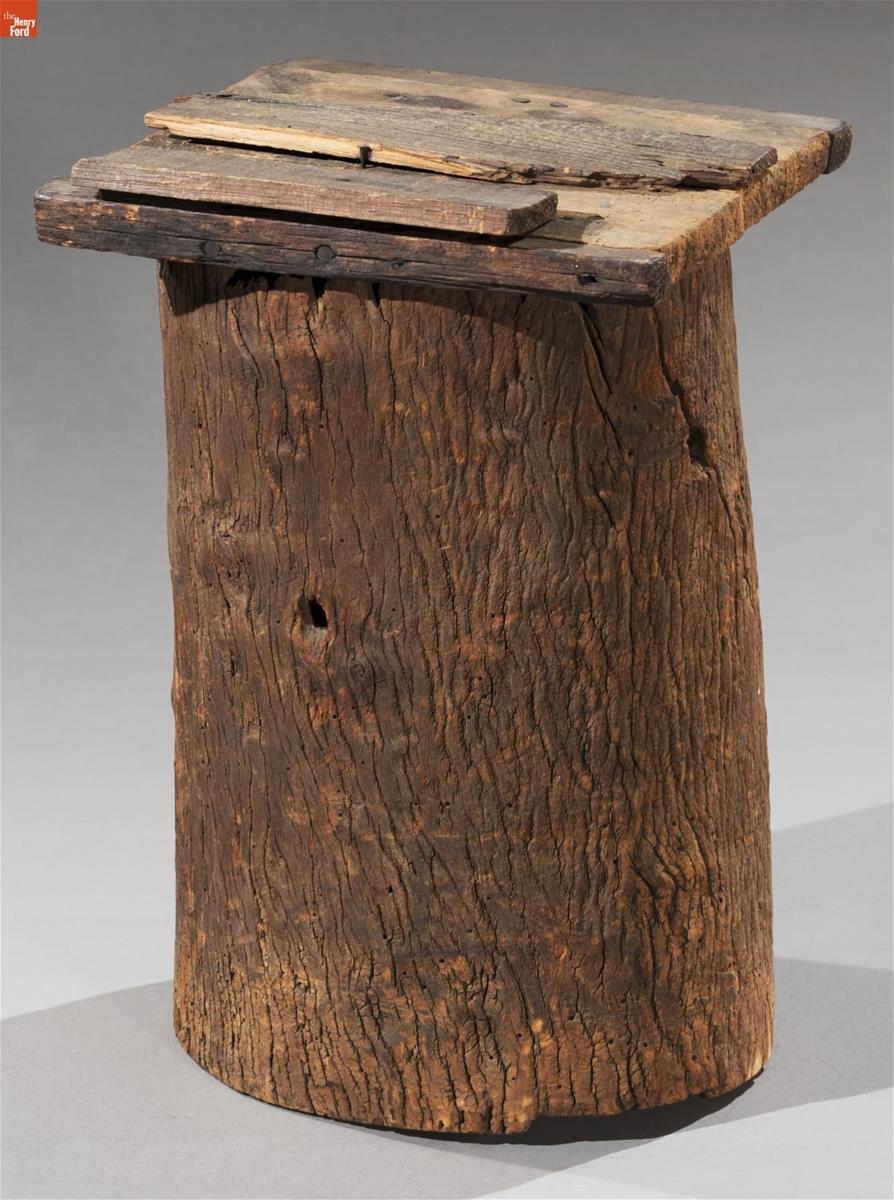

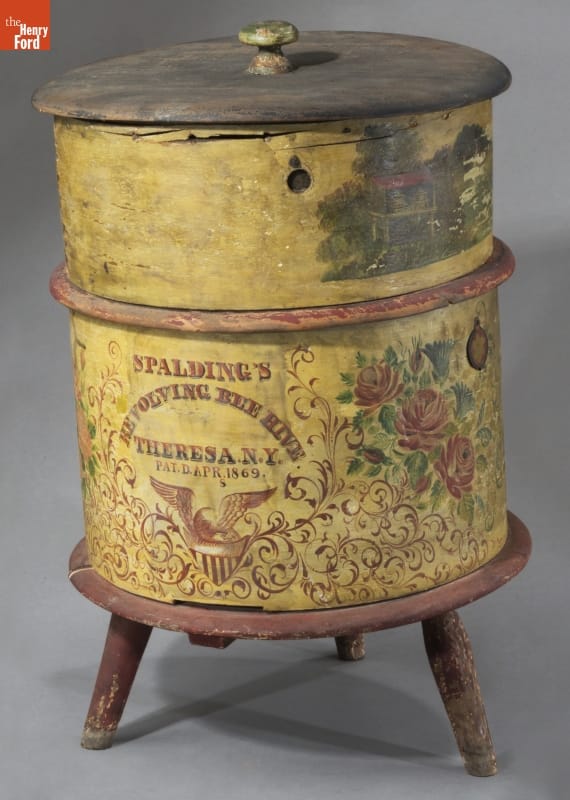
Manmade beehives ranged from hollow logs to simple boxes to complex, highly decorated inventions. / THF177143, THF172336, and THF172095
Some beekeepers made bee “skeps,” hives made of coiled rye straw held in place with a wooden splint, to house bees and protect honey stores. Skeps held real meaning for those who relied on them to house bees and protect honey stores. But bee skeps also took on symbolic meaning rooted in religious associations with worker bees and the biblical beekeeper, Deborah. Over time, skeps came to represent the industry of a productive household and the dependability of workers. Utah, known as “The Beehive State,” even adopted the coiled beehive as its official state symbol.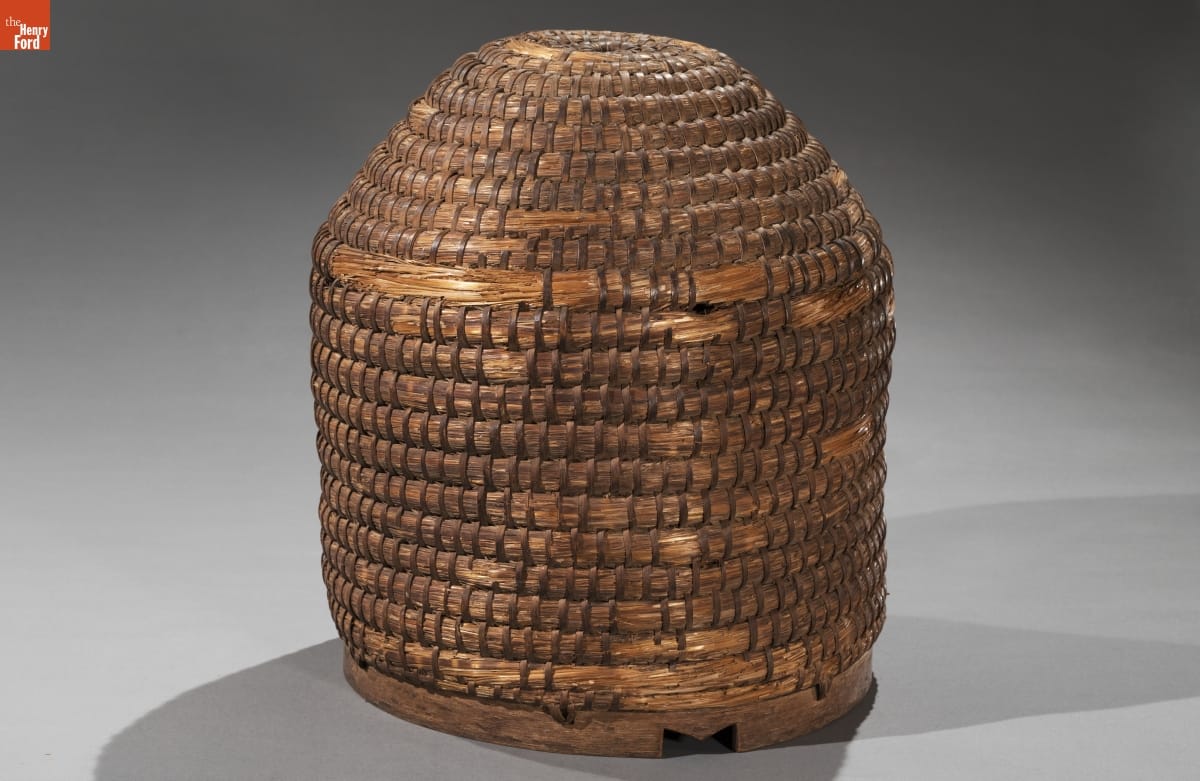
Some farm families made inexpensive skeps to house bees and protect honey stores. / THF177141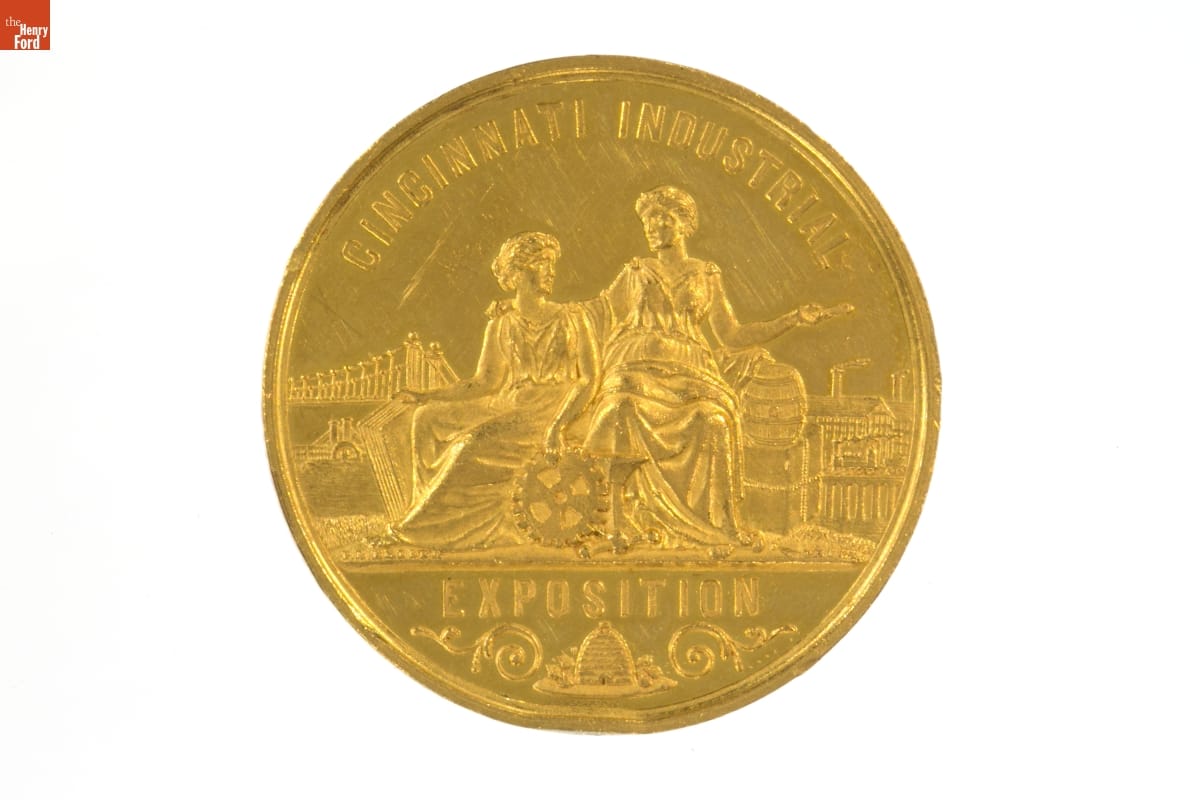
Medals awarded at the 1882 Cincinnati Industrial Exposition featured a bee skep (at bottom), symbolizing industry. / THF154061
During the mid-19th century, the U.S. Patent Office issued numerous patents for improved beehives. Arguably the most important went to Philadelphia pastor Lorenzo L. Langstroth in 1852 for his “Improved Mode of Constructing Beehives.” Langstroth's enduring contribution to beekeeping came through careful observation. He determined that bees naturally left a space of 3/8” between honeycombs (constructed within the hive to house larvae, honey, and pollen). Langstroth designed a beehive with 3/8” spacing (later coined the “bee space”) between the frames, sides, and bottom. This improved access, allowing beekeepers to remove and replace frames of honeycomb without harming bees, and more easily inspect for bee moth infestation, which could seriously damage a hive. The hive Langstroth devised, along with the guide he first published in 1853, revolutionized beekeeping, and Langstroth-style beehives remain standard today.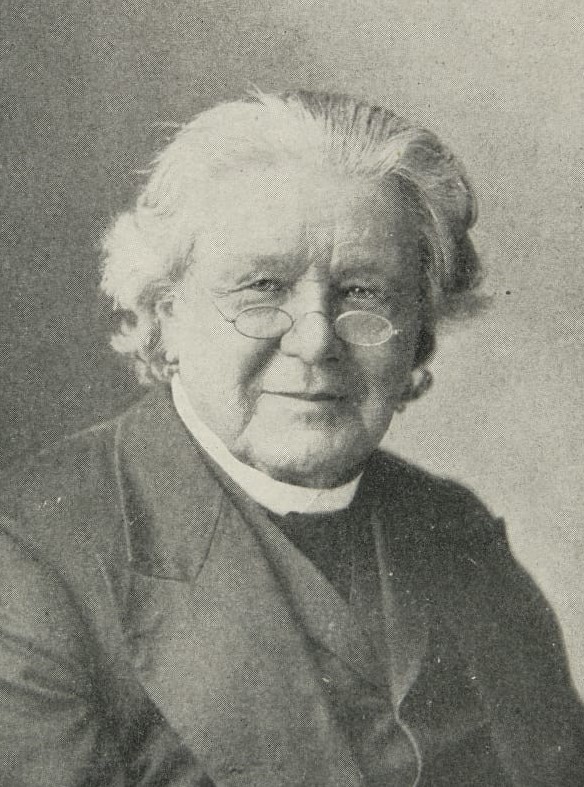
Lorenzo L. Langstroth’s careful observation of honeybees led to a revolutionary beehive design. / detail, THF621310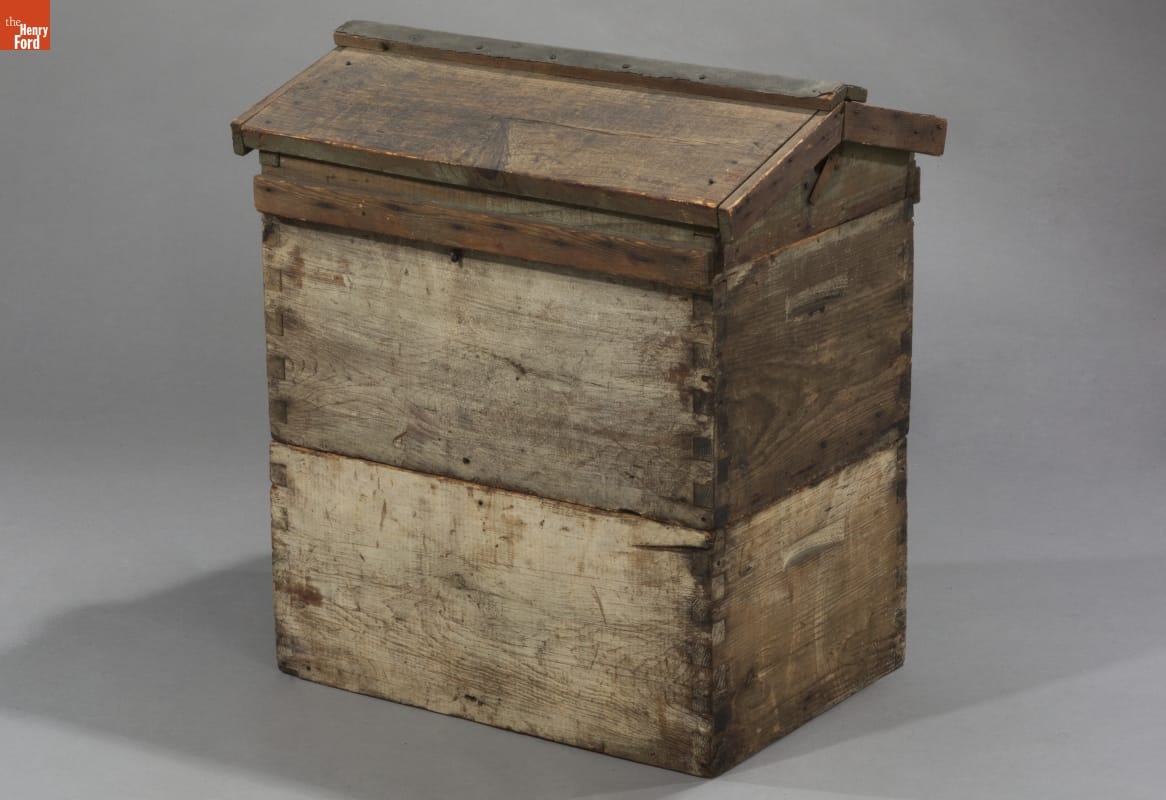
Careful spacing within Langstroth-style hives improved access for beekeepers and helped protect the bees. / THF172338
In Defense of Native Bees
Because they did not evolve in tandem with native plants, honeybees are not the best pollinators for all crops grown in North America. They seek nectar more than pollen to produce honey, and many plant blossoms do not produce enough nectar to mobilize honeybees. Native bees and other flying insects find blossoms of native plants—including tomatoes, cucumbers, pumpkins, avocadoes, and cranberries—more appealing than do honeybees, and they do a better job of moving pollen from blossom to blossom, ensuring fertilization. As a consequence, many market-garden and truck-farm crops (cabbage, carrots, squash, and melons), berries (strawberries, blackberries, and raspberries), and orchard crops (apples, pears, peaches, and plums) depend on native bees and other pollinators, even as honeybees play their role. All also pollinate crops that livestock eat (buckwheat and clover) and crops that produce fibers we use to make cloth (cotton and flax).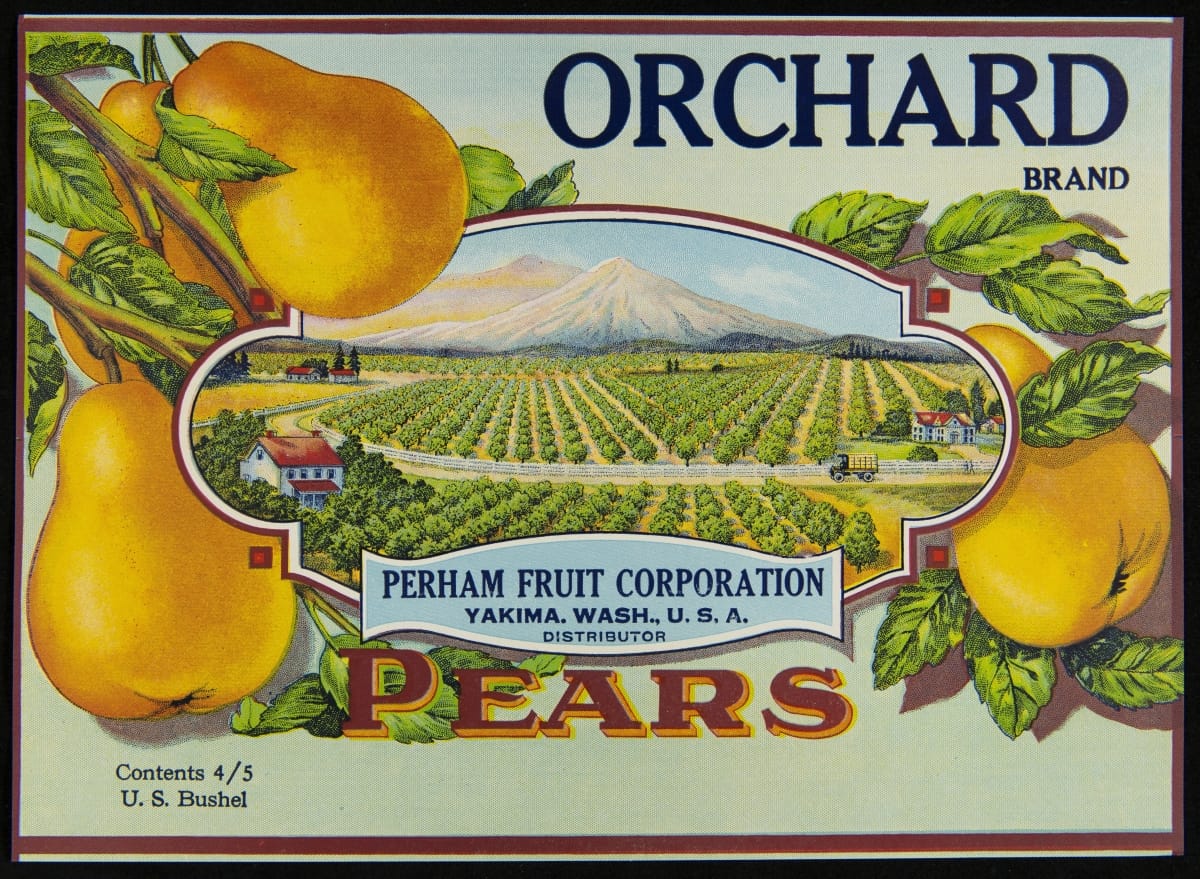
Native bees pollinate many food crops, including orchard fruits like pears. / THF293065
Vegetables, fruits, and other agricultural products result from the intimate relationships, millions of years in the making, between bees and the plants they pollinate. When colonists imported honeybees to North America, they introduced direct competition to different genera and species like squash bees, bumblebees, and solitary bees. Even today, humans’ special treatment of honeybees puts native bees at a disadvantage. As the disrupters of natural relationships, humans bear responsibility for creating a balance between honeybees and native species that are too often neglected in popular conversations. While we depend on honeybees for our honey supply, we depend on all pollinators to sustain our food system. To learn more, explore the U.S. Geological Survey’s documentation of native bees at the Native Bee Inventory and Monitoring Lab, check out this excerpt from Dave Goulson’s “A Sting in the Tale: My Adventures with Bumblebees,” or browse beekeeping-related artifacts in The Henry Ford’s Digital Collections.
This post was adapted by Saige Jedele, Associate Curator, Digital Content, from several write-ups on bees and beekeeping by Debra A. Reid, Curator of Agriculture and the Environment at The Henry Ford.
farming equipment, nature, by Saige Jedele, by Debra A. Reid, agriculture
Sibley Seed Box: Hidden in Plain View
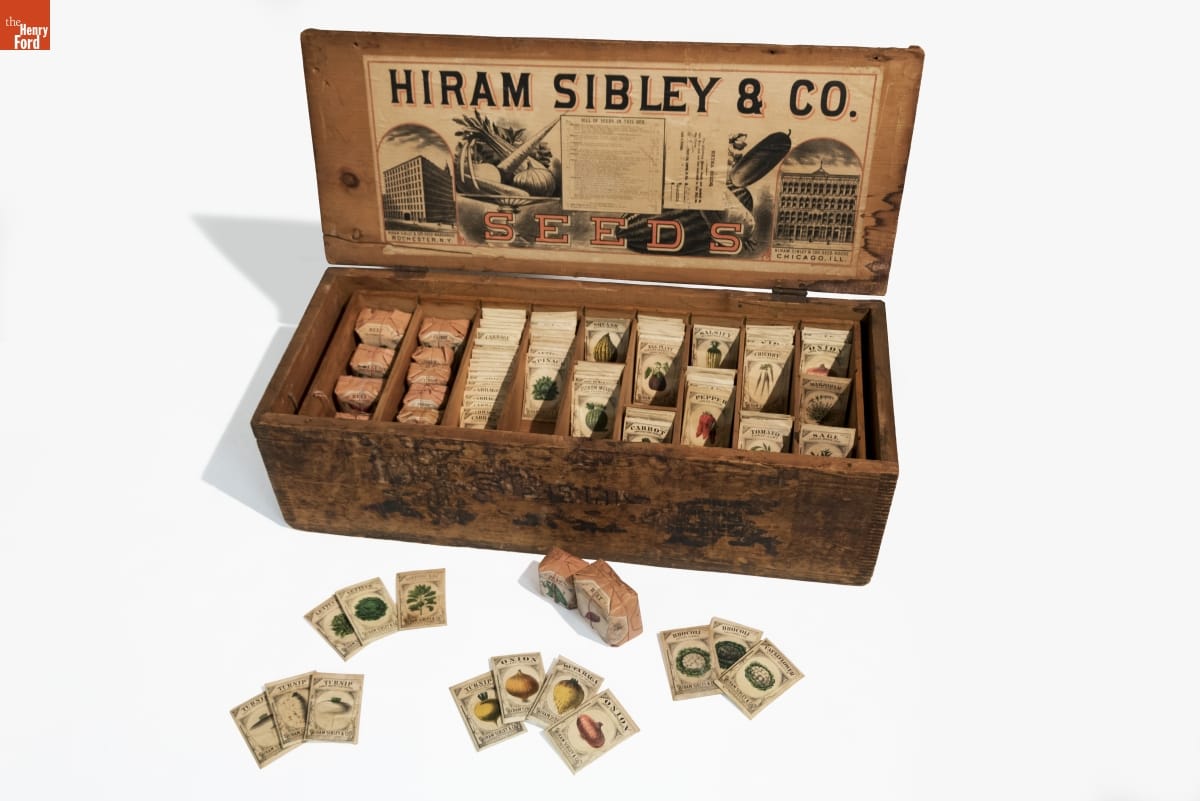
Hiram Sibley & Co. Seed Box, Used in the C.W. Barnes Store, 1882-1888 / THF181542
Several million guests have seen a reproduction Sibley seed box, based on an original box in our collections, in the J.R. Jones General Store in Greenfield Village since 1994, when the box became part of the reinterpreted interior. Commercial seed sales of pre-packaged vegetable and flower seeds began in earnest during the 1860s, and by the mid-1880s, Hiram Sibley & Company advertised itself as the world’s largest seed company. That might be true. Sibley, who made his fortune as executive of the Western Union Telegraph Company, invested in farms and packing houses in several states and engaged in seed trade in several foreign countries. His entrepreneurial bent warranted more exploration, as did the details of the seed packets, all stowed carefully in the box in the General Store.
The reference photograph in our collections database for the original seed box showed a box with seed packets. The accession number, 29.1987.18.1, indicated that this was an early addition to The Henry Ford’s collections—the first number, 29, means that it was acquired in 1929. The second number indicates that it was in the 1,987th lot acquired that year, and the third number indicates that the box was the 18th item in the 29.1987 grouping. In fact, as research ultimately disclosed, our collections included the box, plus 108 original seed packets and a Sibley & Co. Seed catalog.
My need to know more started a chain reaction. First, this object had been in the collection for 90 years. It has known provenance: Accession records indicate that it was purchased with other items from a store in the tiny, rural, upstate New York community of Rock Stream. The Barnes family—Charles W. and then his son, Alonzo S.—operated the store. Alonzo died in 1929, which may have precipitated the sale. Our registrars researched and catalogued all parts of the set. We also acquired archival documents—a map of the town from the time the Barnes family operated the store and two postcards of the town—for our collections to add context around the seed box.
Main Street, Rock Stream, New York, 1908-1910 / THF146163
Filling in details about seed packets required further reconnaissance. This required removing the seed box from exhibit at the end of the 2019 Greenfield Village season. Our Exhibits team moved the reproduction box and the authentic seed packets it contained to our conservation labs. Conservation staff removed the packets, checked for damage, then cleaned and prepared the packets for digitization. In the meantime, Collections Management staff located the original box in collections storage and moved it to the conservation labs for cleaning.
Once the packets were cleaned, they were moved to our archives, where the packets were imaged. After the box was cleaned, Collections Management staff moved it to the photography studio. The individual seed packets, once imaged, also were moved to the photo studio. There, the packets rejoined the box, fitting into compartments spaced to accommodate “papers” as well as multiple-ounce “packets” of seeds. The final photograph above shows the rejoined box and original seeds – cabbage, carrot, cauliflower, eggplant, onion, pea, rutabaga, tomato, turnip, and other vegetables.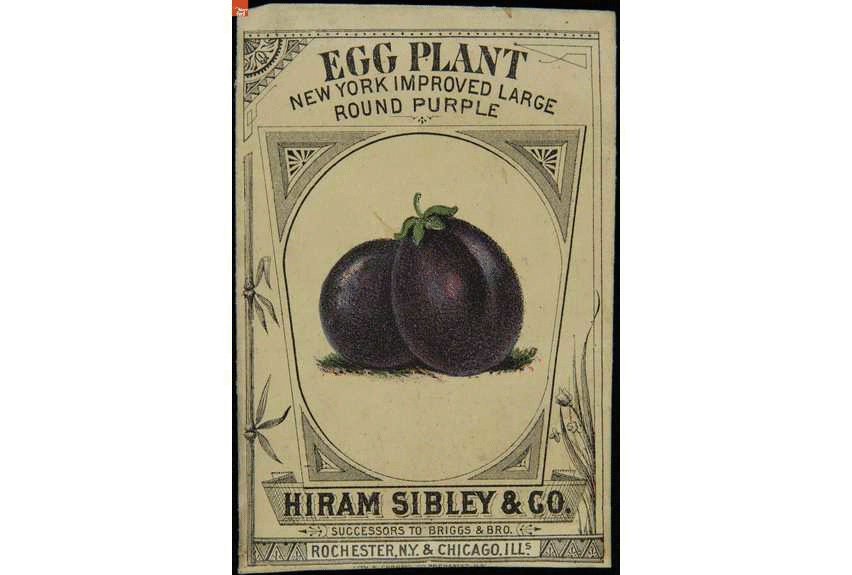
Some of the individual seed packets that were digitized. See them all in our Digital Collections.
After the photo session, the seeds returned to the reproduction box, the box was sealed with its Plexiglas top to protect them, and Exhibits staff returned the box with its contents to the General Store in Greenfield Village.
It is important to note that the investigation, relocation, cleaning, digitizing, photography, and cataloging all occurred between January and March 2020, before COVID-19 closed the museum and delayed the opening of Greenfield Village. During that closure, between March 15 and July 9, the digitized records became part of numerous blogs written to meet the needs of patrons seeking information about food sources, vegetable gardening, food security—and about tomatoes!
It may seem difficult to justify the amount of time required from so many people to digitize one box and its many seed packets during the process. Each staff member involved in the process had to juggle numerous competing projects to make time to attend to the box and its packets. However, their work created invaluable digital resources that have already enhanced several of our blog posts. We may never know how many people were inspired to plant their own vegetable garden during a year of uncertainty partially, or wholly, because of “How Does Your Vegetable Garden Grow?,” or who just had to have a BLT after reading “Multiple Takes on Tomatoes.”
This is what digitization can do, and this is the effort that it takes. We all do it in the spirit of life-long learning.
Continue Reading
1880s, 19th century, Michigan, Dearborn, New York, research, photography, Greenfield Village buildings, digitization, digital collections, COVID 19 impact, collections care, by Debra A. Reid, #digitization100K, #Behind The Scenes @ The Henry Ford
Multiple Takes on Tomatoes
A perfectly ripe tomato is a classic summer joy. But did you know that the growing of tomatoes has ties to many aspects of our history and culture? Curator of Agriculture and the Environment Debra Reid uses our collections to reveal the many facets of the tomato.
The tomato -- a little fruit -- has big lessons to teach.
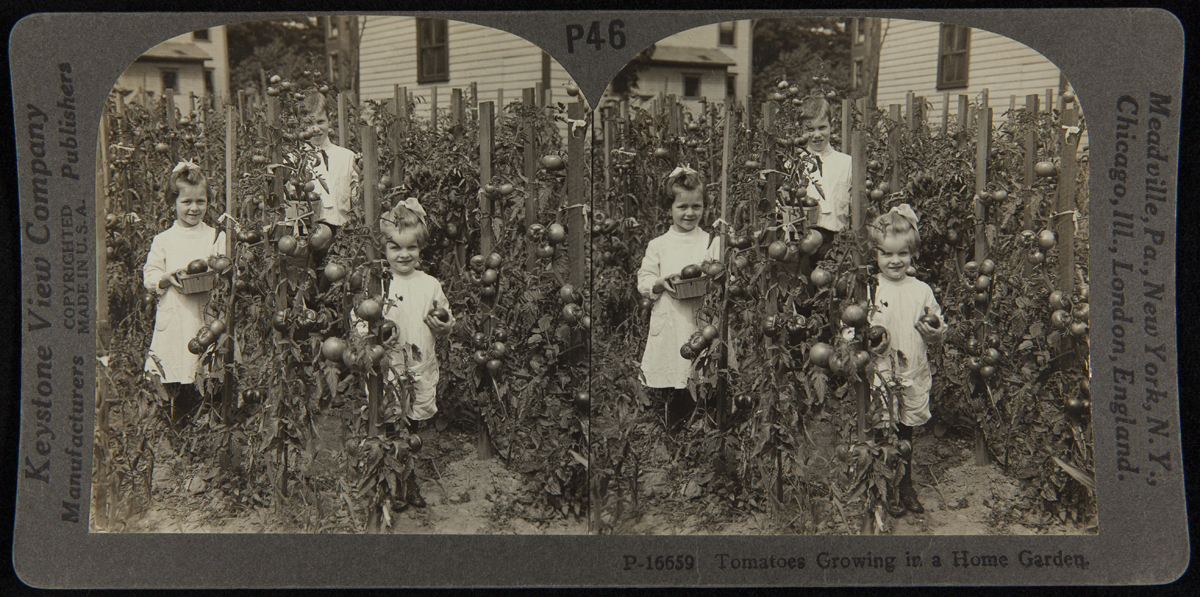
Tomatoes Growing in a Home Garden, circa 1915 / THF252180
First, yes, that’s right. Tomatoes are, biologically, a fruit – a berry that matures on a flowering plant. As this circa 1915 stereograph explains, “at first they were only small green things that grew where the blossoms dropped off.” Yet, the small green fruit grew into a plump, juicy “culinary vegetable,” considered such because of its low sugar content. (For example, processors transformed the fruit into a spicy vegetable sauce – catsup! – the savory contrast to sweet fruit sauces like apple butter.)
The image above shows a boy named Bob and his two sisters amidst the tomato plants they raised from seed, proudly displaying plants loaded with fruit. The Keystone View Company included an educational message on the back of the stereograph to engage children with growing fruits and vegetables. Bob and his sisters planned to share their finest tomatoes with others during their school garden show. They became role models for other students sprouting seeds and planting seedlings and then weeding and watering their crops.
By growing tomatoes, these children learned about domestication, the process by which humans select seed from bigger or tastier fruits or from plants that survive a disease or a drought. They cultivate these seeds (planting, weeding, harvesting, saving seed, and replanting year after year). This results in cultivars, each with different shapes, textures, colors, flavors. Over generations, humans have created more than 10,000 tomato cultivates by saving seed from their best tomatoes.
Why do tomatoes come in so many different shapes, sizes and colors?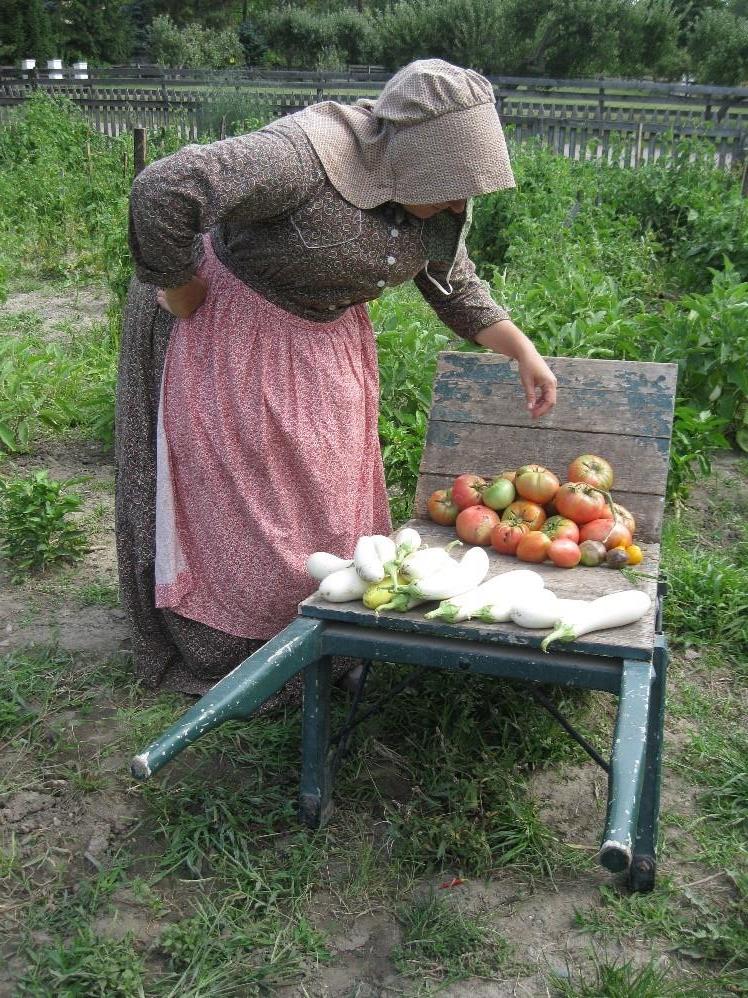
Tomatoes in the background and white eggplant in the foreground of the wheelbarrow. Photograph by Debra Reid, taken Saturday, August 15, 2020, at the kitchen garden at Firestone Farm.
Evolution resulted in distinctive varieties, but humans have also picked good-tasting fruits to propagate. (See how many different cultivars this proud gardener grew in the mid-1940s!)
The historic gardens in Greenfield Village include heritage cultivars documented in historic sources and saved through traditional seed saving. Three tomatoes often grown at Firestone Farm (pictured above) include Red Brandywine, Oxheart and Yellow Pear.
As demand for quality seeds grew during the second half of the 19th century, commercial seed businesses flourished. Companies such as Hiram Sibley & Co. contracted with growers to produce seed in clearly marked packages for customers to purchase. In addition to illustrations of the cultivar, the packet included descriptions of the qualities of the fruit, as well as best practices of cultivation (often in more than one language).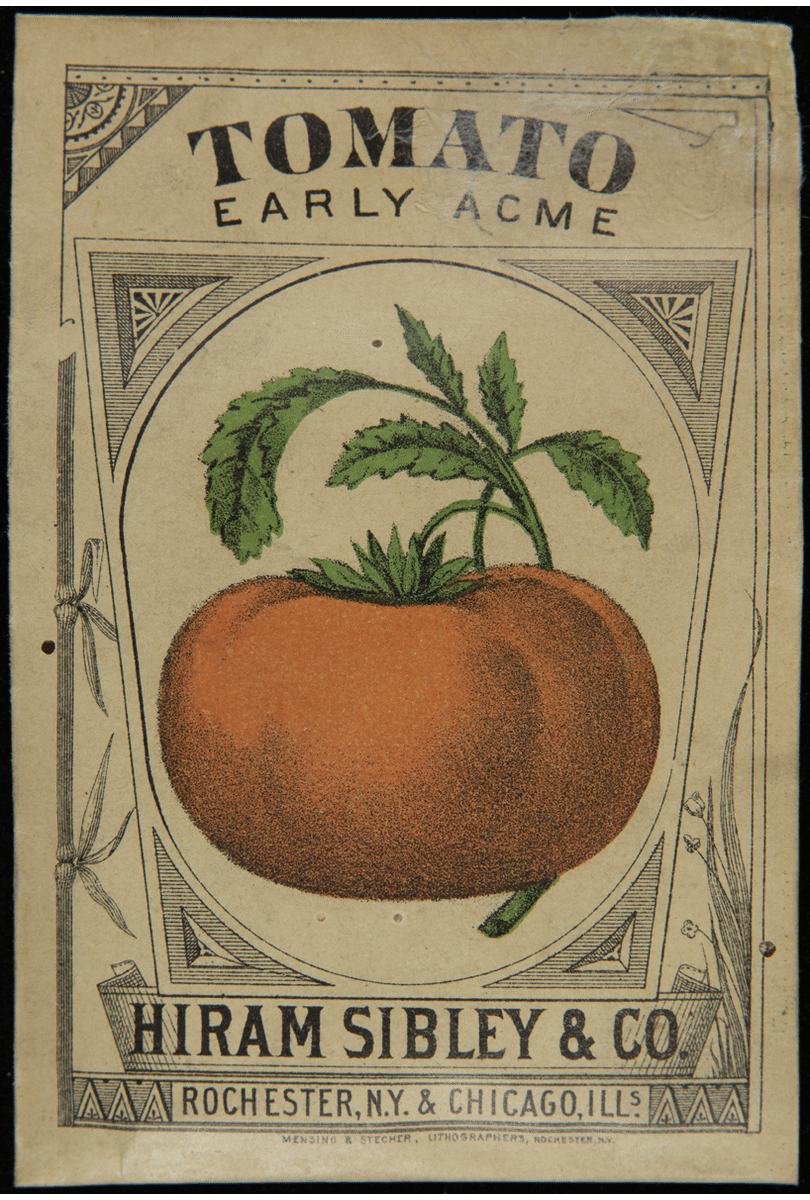
Hiram Sibley & Co. tomato seed packet, “Early Acme” cultivar, 1880s. THF278980/THF278981
Noted plant breeder Luther Burbank (1849–1926) crossed varieties to create hybrid cultivars that did not exist in nature. He sought disease resistance as well as a meaty tomato that had more pulp than seed – the meatier the tomato, the heartier the sauce! Some of Burbank’s varieties are still sold today.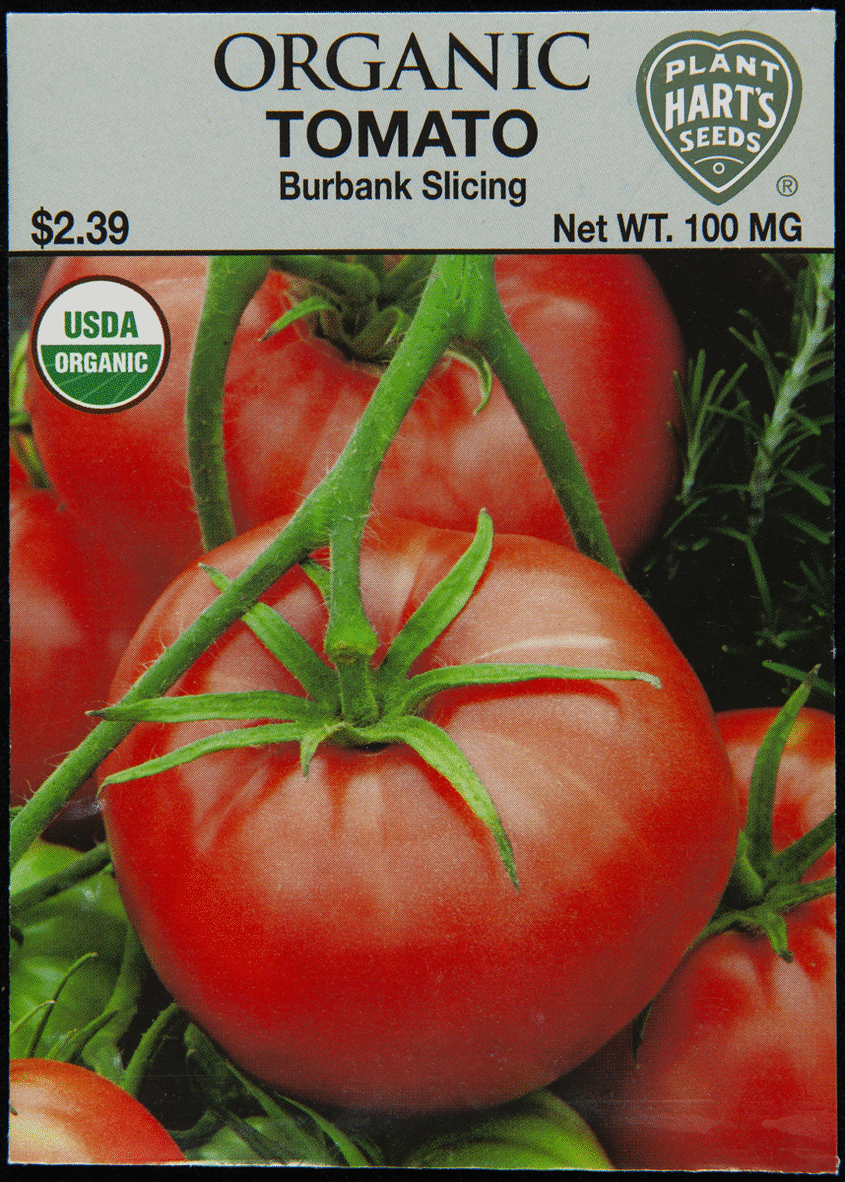
Charles C. Hart Seed Company "Burbank Slicing Tomato" seed packet, circa 2018 THF276144/THF276145
Twentieth-century concerns about food quality and nutrition led to the popularity of seeds like “Double Rich,” which were certified organic and yielded tomatoes with twice the Vitamin C!
You can learn more about organic cultivation and its relationship to the plant breeding process from the U.S Department of Agriculture’s (USDA) Organic Integrity Database, and about biotechnology, including hybridization, from this USDA glossary.
Have you ever wondered who grows the tomatoes sold in cans or bottles?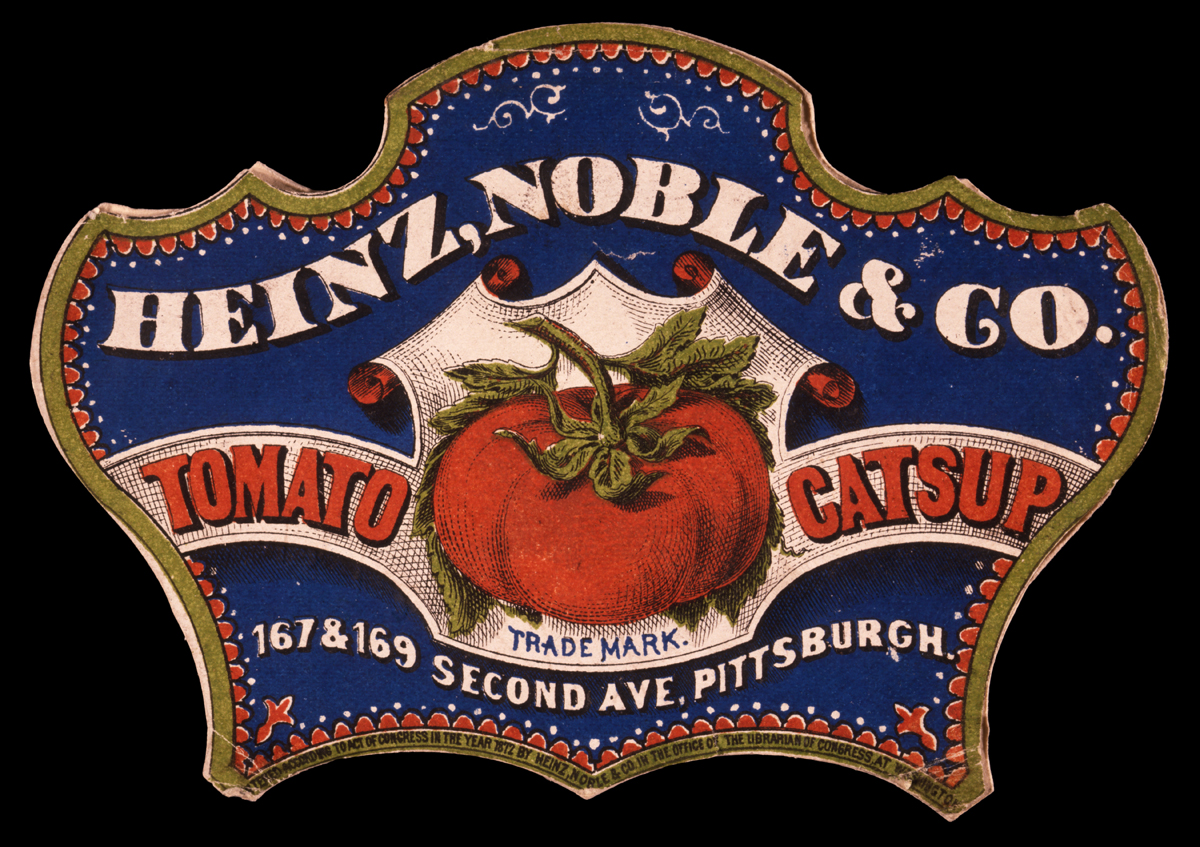
Product label for tomato catsup by Heinz, Noble & Co., 1872-1873 THF117246
Anyone with yard space enough can grow tomatoes. Yet, by the time home gardeners like Bob and his sisters planted their crop in the early 20th century, many urban Americans wondered what a vine-ripened tomato tasted like. Why? Because tomatoes could be easily processed into affordable packaged products, and most urban consumers paid clerks in general stores to pick tomatoes off the canned goods shelf.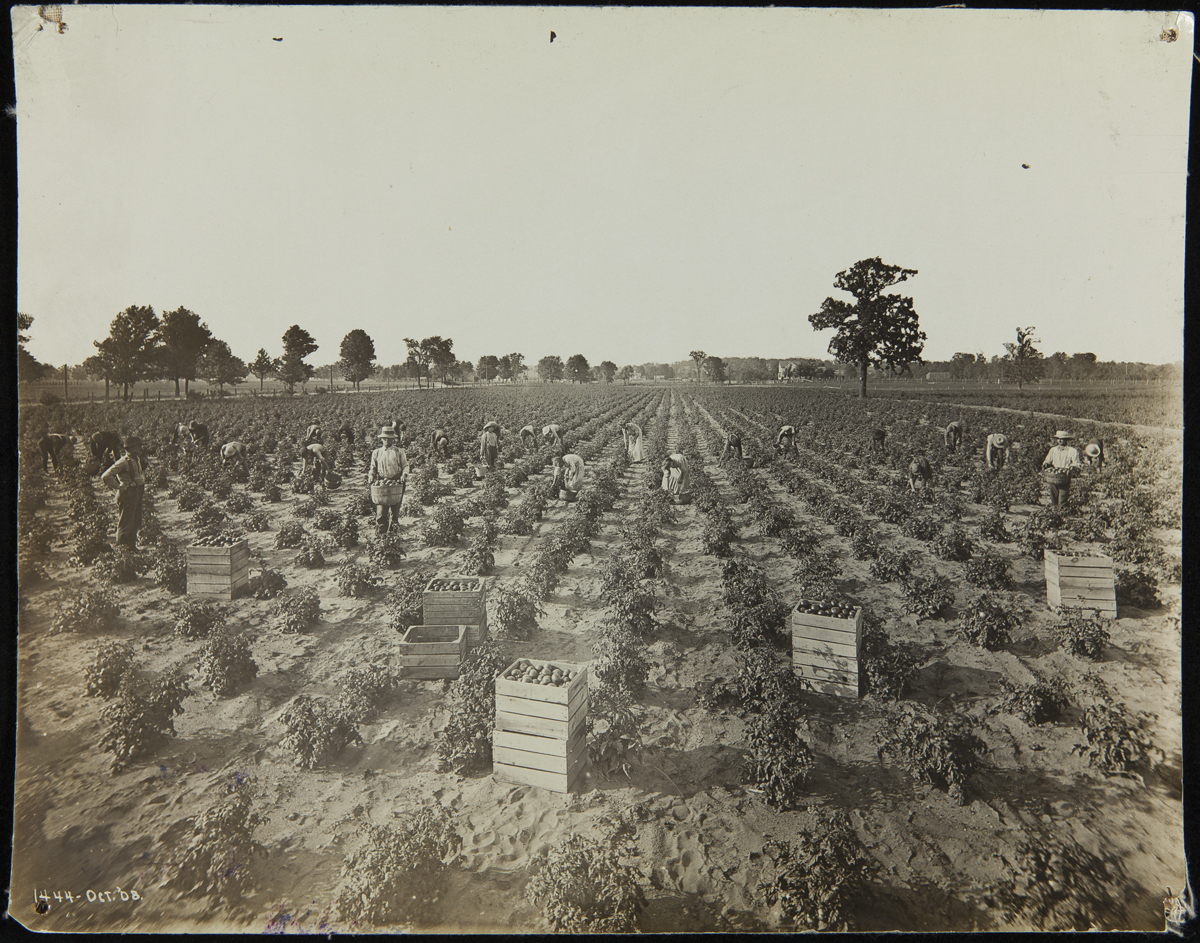
Workers harvest tomatoes at a Heinz tomato farm near Salem, New Jersey, 1908 / THF252058
Companies like the H. J. Heinz Company contracted with farmers to meet the demand for canned goods and catsup. Their production far exceeded the yields of home gardens. Heinz ensured success by growing seed tomatoes from which the best seeds became the basis for the next year’s crop. The company maintained a network of greenhouses to start the plants that growers put in the ground.
A rapid, careful and organized tomato harvest and transport led to high-quality processed foods. A sense of urgency dictated the harvest season, which began with careful picking and packing of the delicate and perishable fruit in special crates and baskets. It continued as laborers moved the full containers from fields to shipping points. Specially designed wagons and baskets reduced stress on the ripe fruit during transit. Only the best tomatoes made the journey to H.J. Heinz plants. Laborers discarded damaged fruit into barrels and packed others into baskets for shipment.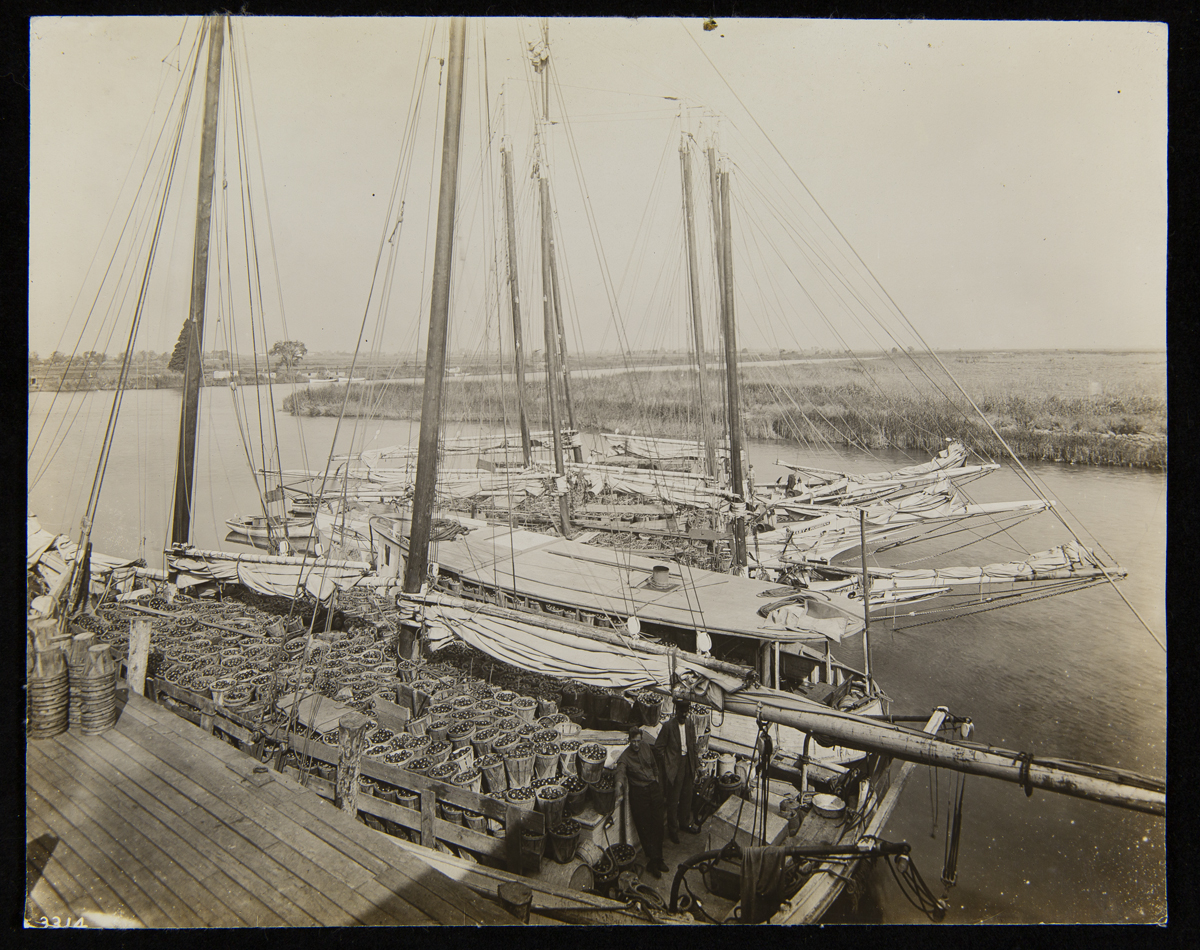
Shipping tomatoes by boat, H. J. Heinz Company, Salem, New Jersey, circa 1910 THF292108
Transporting tomatoes from truck farms to Heinz processing plants sometimes involved sailing vessels loaded with ripe fruit. At the height of harvest, barges carried loads of tomatoes from farms to processors. Growers in Salem, New Jersey, used the Salem River, a tributary to the Delaware River, to send crops to processing centers near large east coast markets, including Philadelphia and New York.
Mass production of tomatoes did not make home gardening obsolete.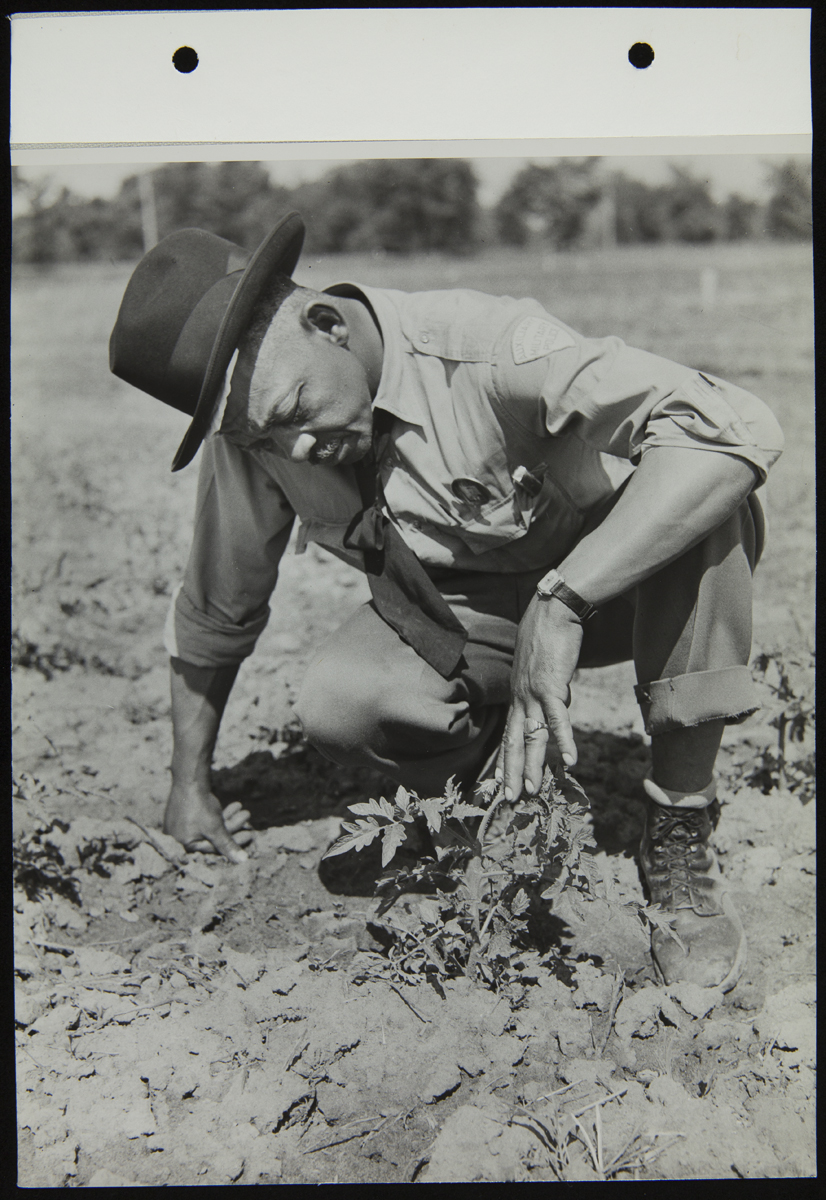
Man inspecting tomato plant in Victory Garden, June 1944 / THF273191
In fact, times of economic hardship increased the general public’s interest in growing their own tomatoes. During the Great Depression, Henry Ford dedicated 1,500 acres of Ford Farms land (between Birmingham and Flat Rock, Michigan) to vegetable gardens. Ford Motor Company employees could sign up to tend a garden plot and retain the produce. Interest in growing tomatoes remained high during World War II, largely through the U.S. government’s Victory Garden program.
Home-grown tomatoes could even be symbols of resistance. George W. Carver encouraged farm families to grow tomatoes for the table as a strategy to strengthen their position, economically and socially.
Tomatoes have legal, ethical, and policy implications.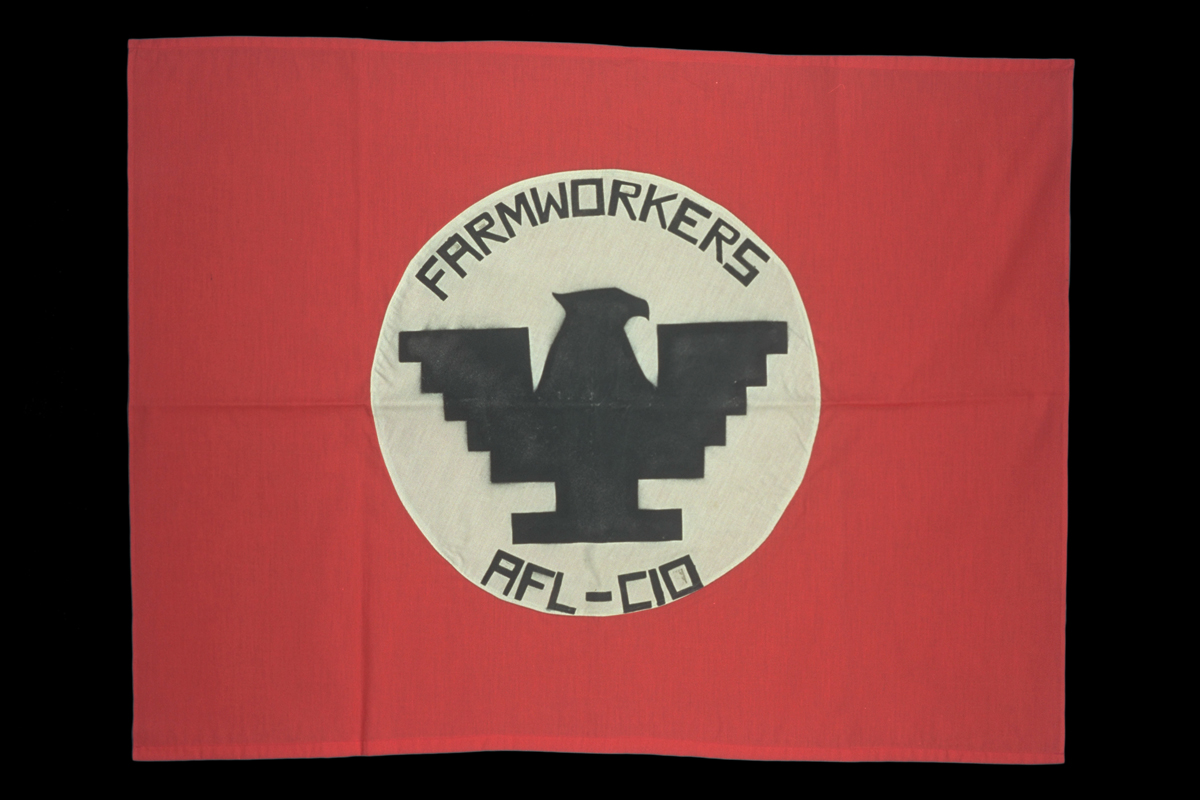
United Farm Workers Flag, circa 1970 / THF94392
Tomatoes have been at the heart of economic conflict between growers and laborers. California growers produced 85 percent of tomatoes canned in the United States by 1940. The larger the fields, the more urgent the need for laborers to harvest a crop that quickly moves from maturity to rot.
Most large-scale growers relied on migrant agricultural laborers at harvest time. They worked for wages determined by the grower and did not receive protection under legislation passed during the New Deal that established minimum wage, maximum hours and workers’ compensation. Instead, growers had legal protection to hire agricultural laborers for wages below the legal minimum and were exempt from compliance with maximum hour and overtime regulations. This meant that laborers had to work until the perishable crop was completely harvested.
Edward R. Murrow’s 1960 news report, Harvest of Shame, increased attention to the plight of U.S. agricultural laborers along the East Coast. Then, in 1965, Filipino-American laborers, members of the Agricultural Workers Organizing Committee, launched a strike to protest pay and working conditions. Latino pickers, members of the United Farm Workers Association, joined with them, and began a five-year strike in and around the grape fields of Delano, California. Consumers increasingly sympathized with the laborers on whom growers of other perishable crops depended.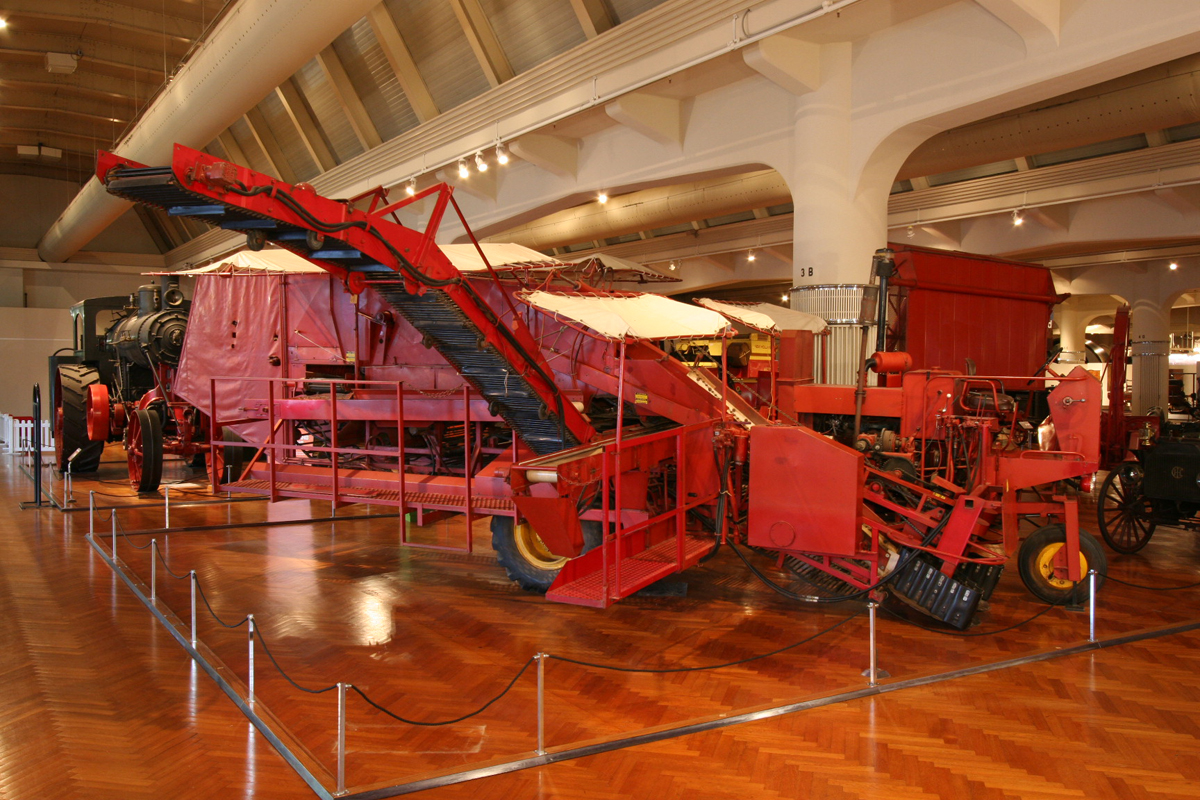
FMC Tomato Harvester, 1969 THF151662
Mechanical tomato harvesters became commercially viable in the context of this successful strike. When the FMC Corporation introduced its Cascade Tomato Harvester, Model 69W, in 1969, it advertised the machine as the savior of a multi-million-dollar crop and the preserver of the American people’s eating habits. The machine did not eliminate humans from the picking process, but it sped it up. FMC explained that it “picks a crop at the rate of nine tons per hour and cuts the cost of handpicking by 40 to 50 per cent.” Crews who operated the machine included a driver, a mechanic, and ten to twelve individuals who rode on the machine and removed debris from the picked tomatoes. This machine carried crews through midwestern fields, last on a farm near Grant Park, Illinois, between 1983 and 1990, which produced for the Heinz catsup factory in Muscatine, Iowa.
Changing harvesting practices required changing the form of tomatoes, too. Mechanical engineers believed the shape of San Marzano tomatoes would suit harvester belts. Plant breeders spent 30 years cross-pollinating tomatoes (including the San Marzano) to create a new hybrid that tolerated mechanical harvesting. In addition to uniform size and firmness, the fruits had to all mature at the same time on one plant, and they had to come off the vine easily.
Could scientists really slow the aging process? Microbiologists at Calgene, Inc. began research with that goal in mind in 1981. Their work paid off by 1988 with the “first commercially available genetically engineered whole food,” the Flavr Savr™ tomato. Genetic modification had shut down a protein that ripened fruit. It resulted in a tomato that could “last up to four weeks in a non-refrigerated state” (Martineau, pg. 4). An assessment of safety of the genetically modified tomato published in 1992 determined that the Flavr Savr™ remained a tomato and was food. (It bears mentioning that genetically modified tomatoes tend not to be listed in the Cultivated Plant Code because they derive from lines still being developed.)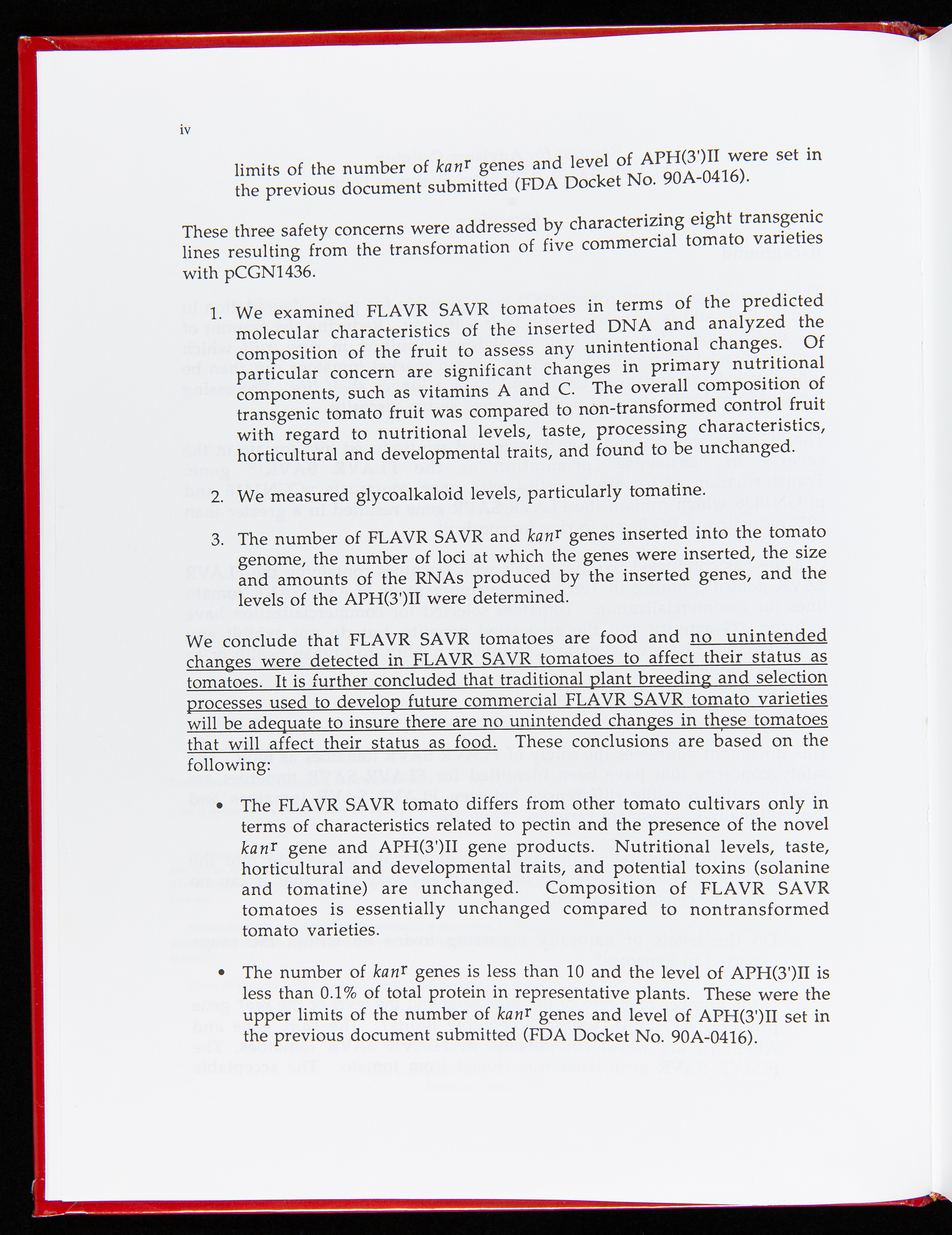
Page from Safety Assessment of Genetically Engineered Fruits and Vegetables: A Case Study of the Flavr Savr™ Tomato from The Henry Ford's library.
Hungry for more on this little fruit with big impact?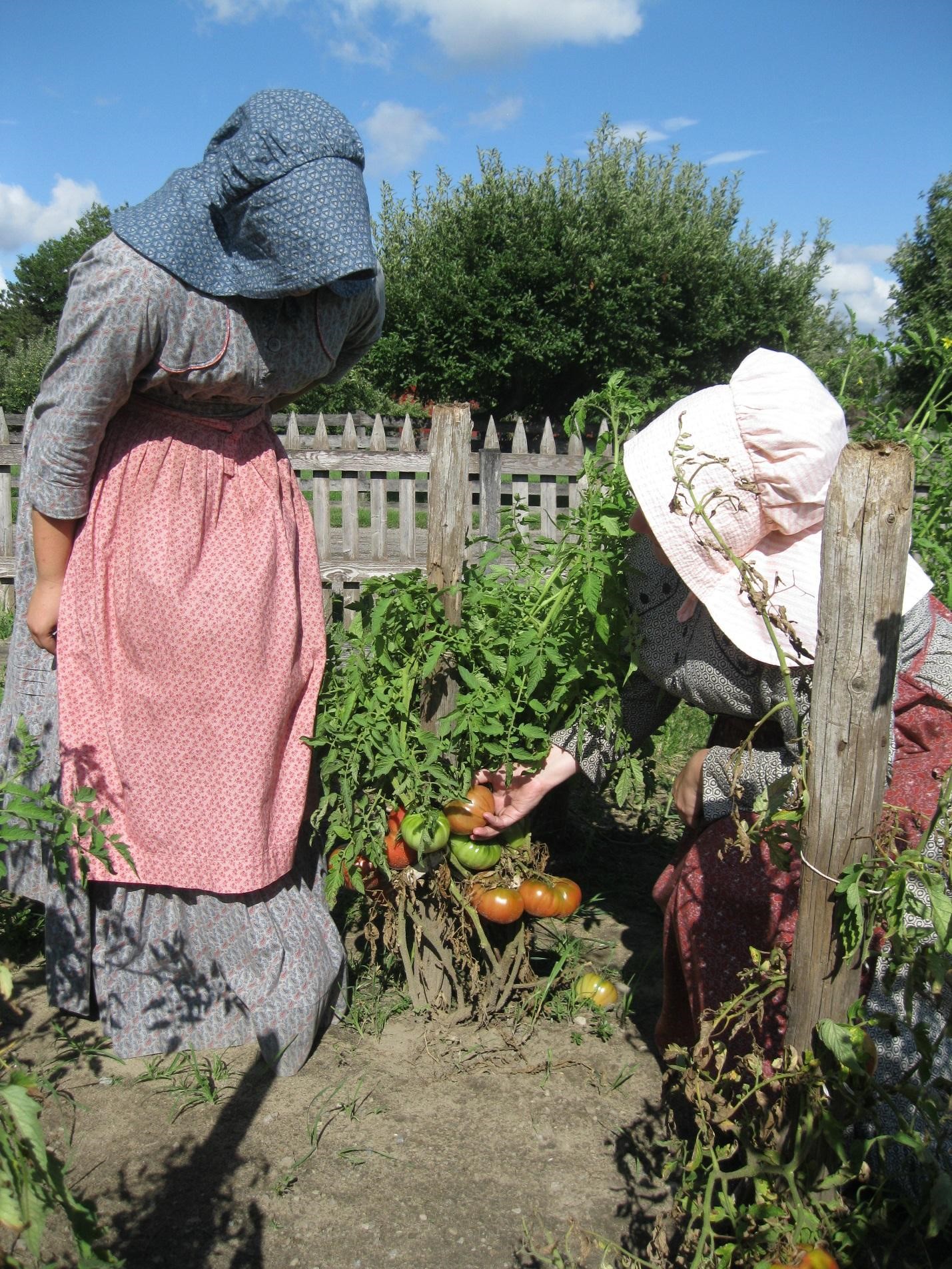
The Acme tomato in the Firestone Farm garden, August 21, 2018. Photograph by Debra A. Reid.
The Henry Ford has resources to help you explore the complete tomato trajectory to date.
You can….
- See tomatoes growing in three gardens in Greenfield Village (Firestone Farm, Ford Home, and Mattox Farmhouse). And, learn why there are no tomato plants in the Daggett house garden!
- Visit Luther Burbank’s Bureau of Information in Greenfield Village, originally located at the corner of his experimental gardens in Santa Rosa, California.
- Take a closer look at the FMC Cascade Model 69W tomato harvester on exhibit in Henry Ford Museum of American Innovation.
- Explore digitized archival materials from collections housed in the Benson Ford Research Center.
- Put together your own virtual exhibit of THF tomato resources, from fruit on the vine with that just-picked taste, to artistic whimsy and mouth-watering graphic design, explore the possibilities.
Sources
- Charles, Daniel. Lords of the Harvest: Biotech, Big Money, and the Future of Food. Perseus Publishing, 2001.
- Dreyer, Peter. A Gardener Touched with Genius: The Life of Luther Burbank. Rev. Ed. University of California Press, 1985.
- Hersey, Mark D. My Work is That of Conservation: An Environmental Biography of George Washington Carver. The University of Georgia Press, 2011.
- Martineau, Belinda. First Fruit: The Creation of the Flavr Savr™ Tomato and the Birth of Biotech Food. McGraw Hill, 2001.
- Redenbaugh, Keith and William Hiatt, Belinda Martineau, Matthew Kramer, Ray Sheehy, Rick Sanders, Cathy Houck, and Donald Emlay. Safety Assessment of Genetically Engineered Fruits and Vegetables: A Case Study of the Flavr Savr™ Tomato. CRC Press, 1992.
Debra A. Reid is Curator of Agriculture and the Environment at The Henry Ford.
farming equipment, food, by Debra A. Reid, agriculture, #THFCuratorChat
Celery in Western Michigan
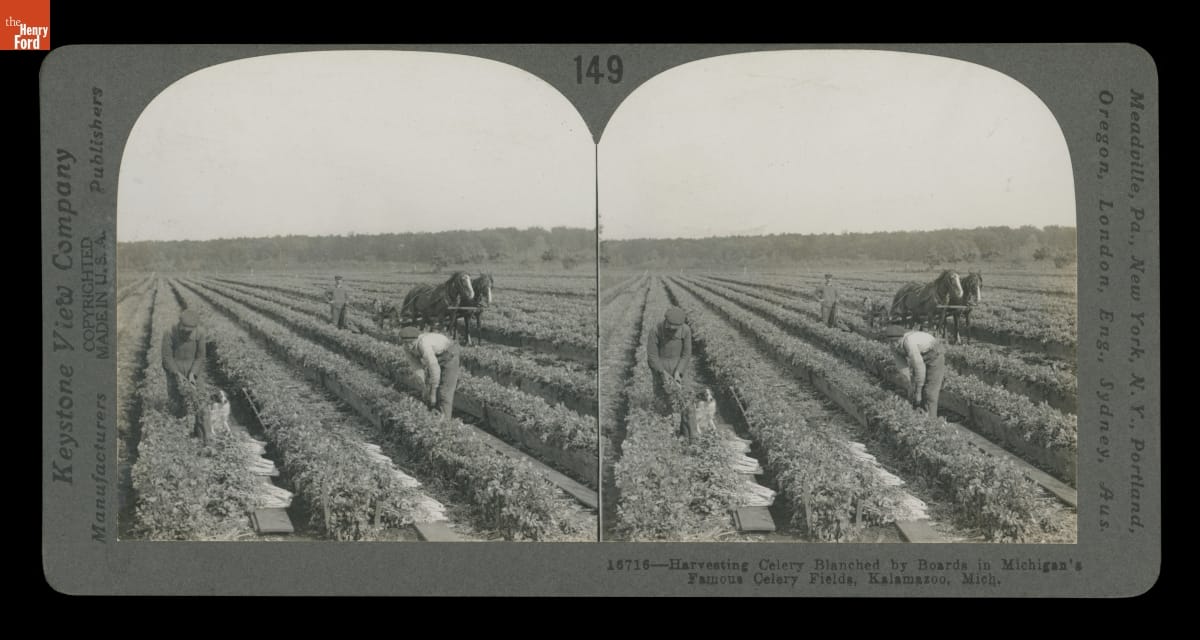
Keystone Stereograph #149 “Harvesting Celery Blanched by Boards, in Michigan’s Famous Celery Fields, Kalamazoo, Mich. THF 145691
What comes to mind when you think of celery (Apium graveolens L. var. dulce)? The essential ingredient in chicken soup, an attractive tomato drink garnish, a low-calorie and healthy snack (with peanut butter added!), or all of the above? The low-calorie nutritious vegetable (in the same family – Apiaceae -- as the herb, parsley) can also lead you on a journey through local history, consumer demand, patent medicine promotion, and commodity chains that spanned the globe.
The ancient Greeks and Romans harvested seeds from wild celery, also called smallage (Apium graveolens L. var. secalinum). It grew best in temperate climates and in moist soils. The plant stalk and leaves had curative properties and seeds had a strong flavor and scent when dried and when processed into essential oil. Europeans included celery seed into tincture recipes in pharmacopeia and cultivated the crop in gardens by the mid-1600s. Over centuries plant-breeders created celery varieties with taller tastier stalks. Thus, celery shifted from a landrace (a plant evolving in a location over time) to a market garden crop by the mid-19th century. Celery growers in the Grand Rapids area helped make it an international commodity.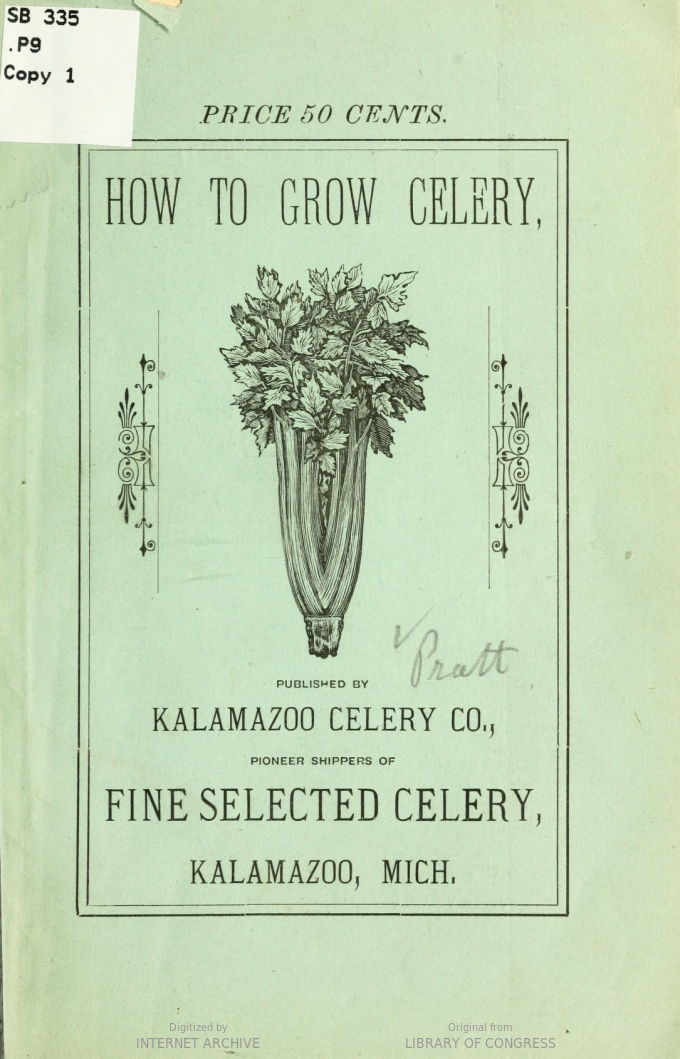
Kalamazoo Celery Company, How to Grow Celery, 1886
The Celery Fields near Grand Rapids, Michigan
Agricultural stories start with land access (or lack thereof).
The introduction and expansion of celery cultivation in west central Michigan began in the decades following removal and confinement of indigenous people. Maps indicate the rapid changes that occurred as lands once tended by the Match-E-Be-Nash-She-Wish Band of Potawatomi became the property of Euro-Americans.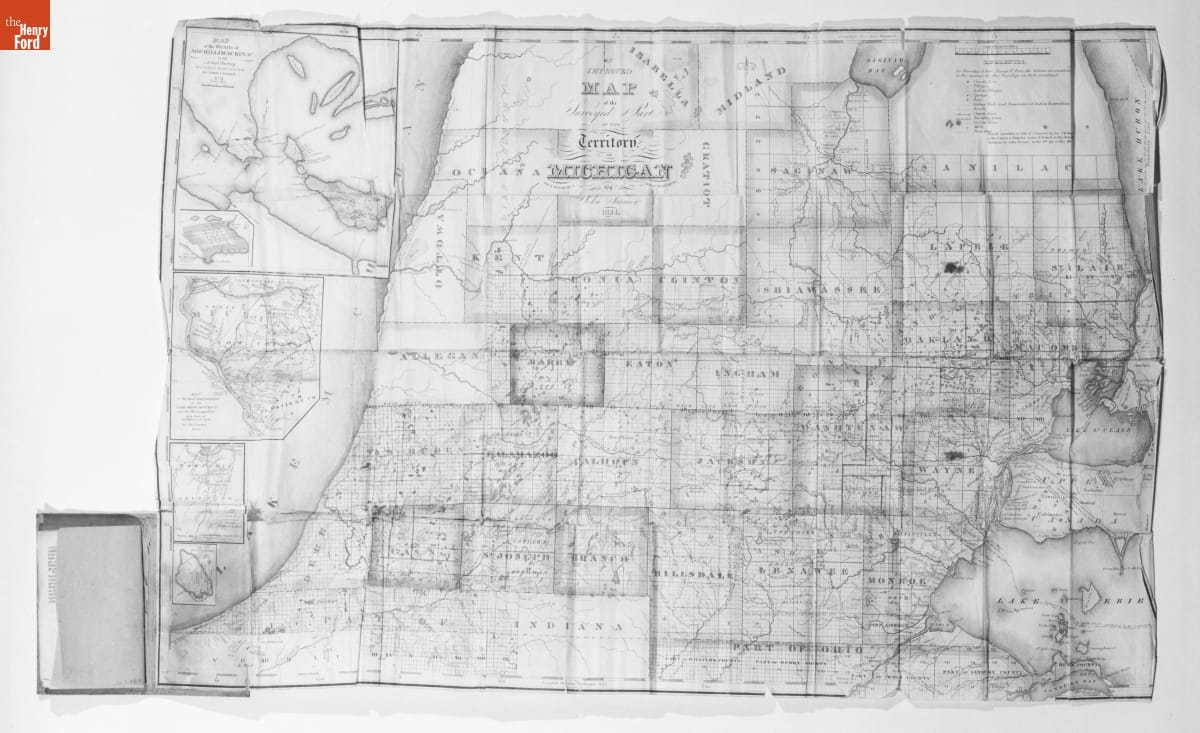
John Farmer published this map in 1831 and marketed it as “The Emigrant’s Guide; or, Pocket Gazetteer of the Surveyed Part of Michigan.” It included “An improved map of the surveyed part of the Territory of Michigan.” THF136462
The wetlands that once sustained indigenous agriculture became a commodity that other entrepreneurs used to build a celery empire. The map that J. H. Young produced in 1835, “The Tourist’s Pocket Map of Michigan,” implies a leisurely pursuit, but instead, developing land into productive farms consumed time and money, and it required brute force. Yet, settlement equated to “progress” and economic growth in the expanding nation and in the territory of Michigan.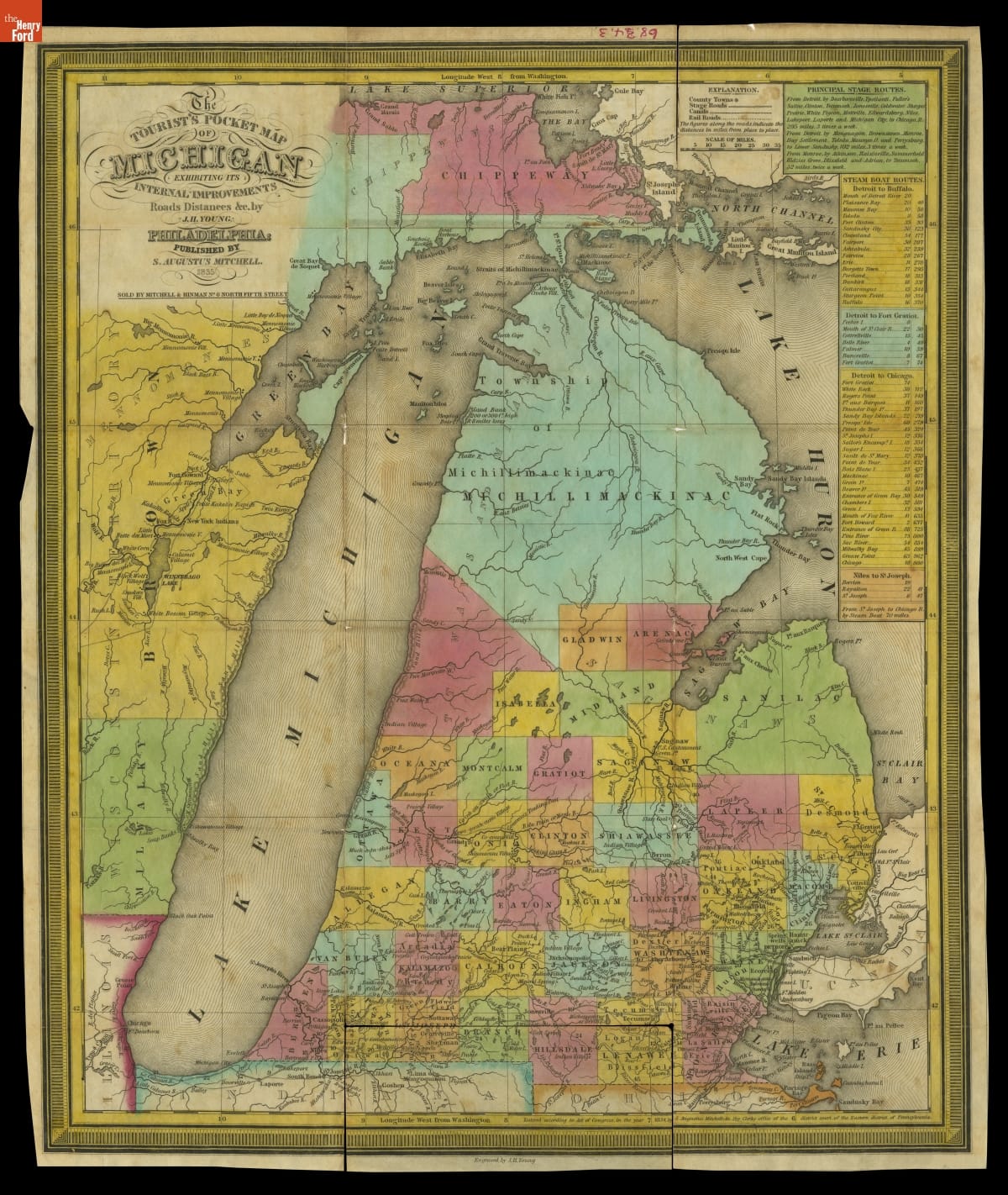
J. H. Young, “The Tourist’s Pocket Map of Michigan,” 1835. THF136466
Celery Entrepreneurs
Different individuals, all migrants to the area, receive credit for launching the celery enterprise. George Taylor, a Scottish market gardener, reputedly introduced commercial celery growing in the United States when he settled in Kalamazoo in 1855.
Other individuals, all well-heeled citizens of the area received credit as celery pioneers. Joseph Dunkley, an immigrant from Somersetshire, England, established celery fields by 1866 north of Kalamazoo and began shipping his crop via rail in 1880 to eastern and southern markets. Glenn Douglass Stuart received most acclaim -- “Were the lovers of this esculent herb to have a voice he would be crowned what he is already, ‘The Celery King’.” Stuart arrived from Gowanda, New York, via Oberlin, Ohio, in 1883, and by 1892 his biography in the 1892 Portrait and Biographical Record claimed that his firm (based in celery) employed one-quarter of the Kalamazoo population.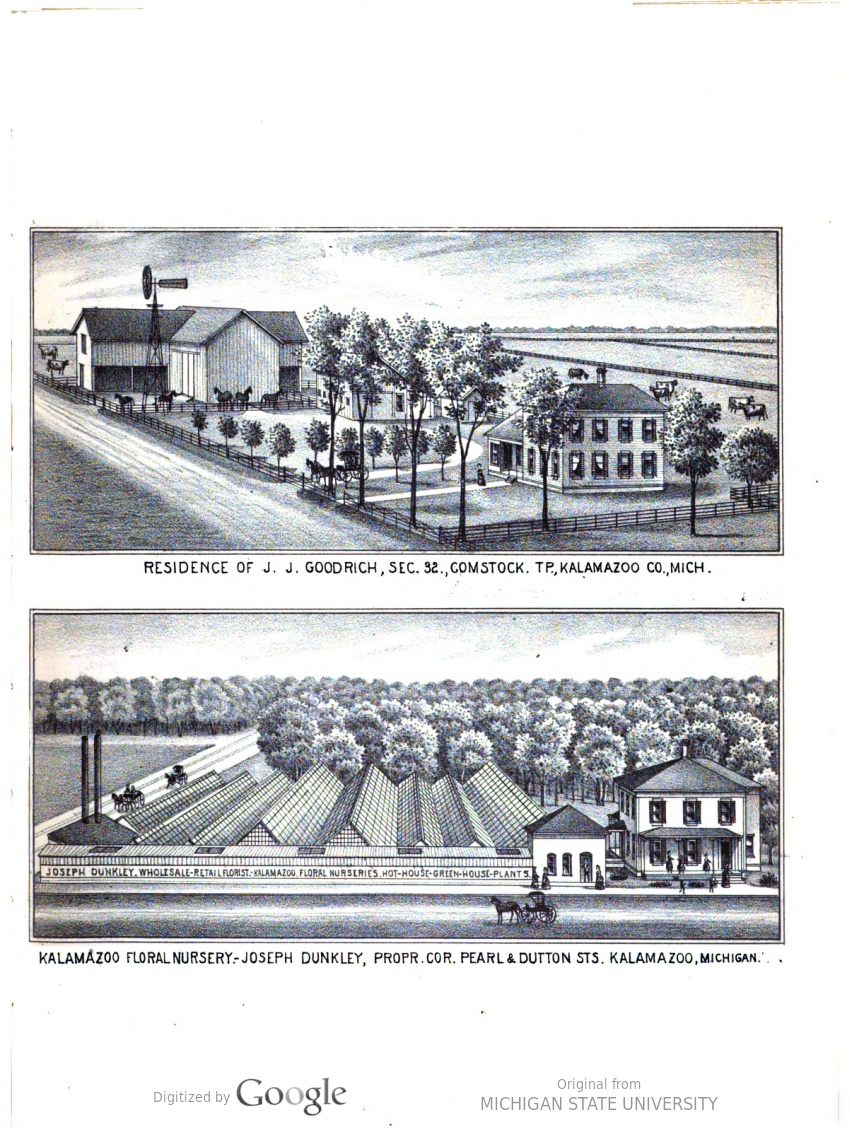
Joseph Dunkley’s nursery business, Kalamazoo, Michigan, “Portrait and Biographical Record of Kalamazoo, Allegan andOttawa Counties” (1892), pg. 935.
Lands further west developed as celery fields later. Celery pioneer George Hudson introduced the crop to Grand Haven around 1878, according to the 1892 history of Ottawa, County, Michigan. Hudson immigrated from Devonshire, England, worked as a market gardener in New York, and a lumberman in Spring Lake before settling down to celery in the Grand Rapids area.
Advertisement of George Hudson, “Historical and Business Compendium of Ottawa County, Michigan” (1892), pg. 30; with information on Mr. Hudson (pgs. 192-193).
Immense fields of celery thrived by 1880, and dominated in celery production to the 1940s, earning two cities on both ends of the celery zone the names “Celery City” (Kalamazoo) and “Celery Center” (Hudsonville).
Laborers in the Fields
While some immigrants received accolades for establishing the industry, other individuals received little recognition for the labor they performed. Families who migrated from The Netherlands did the bulk of the work turning wet soils into fertile celery fields between Kalamazoo and Hudsonville. Stereographs and postcards depict the intense physical labor that farm owners and laborers performed.
Keystone Stereograph #149 “Harvesting Celery Blanched by Boards, in Michigan’s Famous Celery Fields, Kalamazoo, Mich. THF145692
Growing Celery
Before celery growing became concentrated in the area near Grand Rapids, market gardeners raised the spring vegetable and sold it directly to customers in public markets. The May 15, 1849 issue of The Michigan Farmer included growing directions from an English gardener. He advised planting the seeds in January in a greenhouse (and following with additional plantings in February and March to stagger harvests and meet market demand). Then growers should transplant the seedlings to the garden and protect the plant with a “hand glass.” Growers then earthed up the celery, setting the plants in trenches and hilling the soil around them to shield stalks and leaves from the sun. This reduced the acidic taste and stringiness of the stalks.
Such intensive cultivation practices yielded a crop that met the demand of wealthier customers seeking a spring tonic. A speaker explained the advantages of celery to members of the Kalamazoo Agricultural Society in 1850 -- celery was “peculiarly acceptable because it comes when our horticulture has no other fresh supplies to offer us.” The only other vegetables available at the time included potatoes, turnips, and cabbage. Such intensive
After Harvest
Wealthier families displayed the fresh leafy celery stalks in glass vases like this one. The vase held chilled water that helped keep celery stalks fresh during formal dinners. Diners consumed the carefully cultivated stalks raw.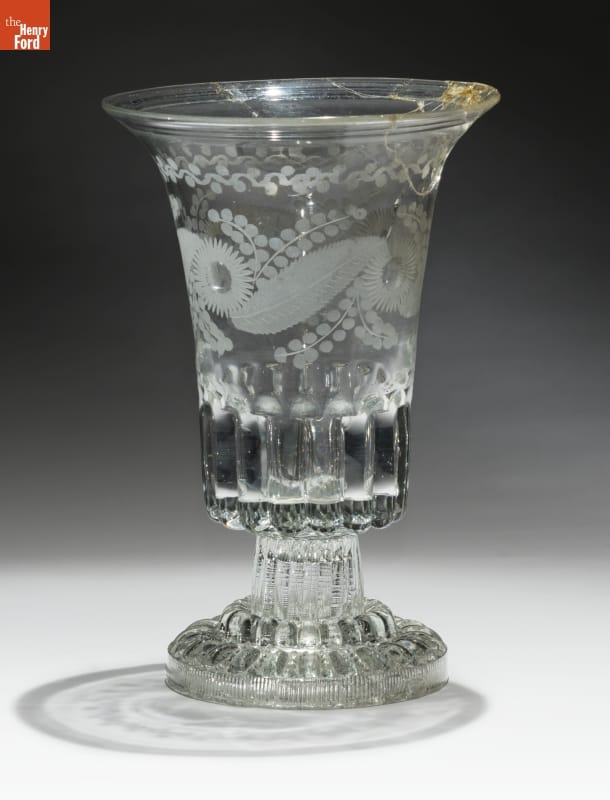
Celery Vase, 1820-1840. THF 168522
The cost of celery declined as mass production and marketing reduced the cost per bunch. This shifted celery from a delicacy to an essential vegetable for a growing non-gardening population.
Celery after harvest, took other forms.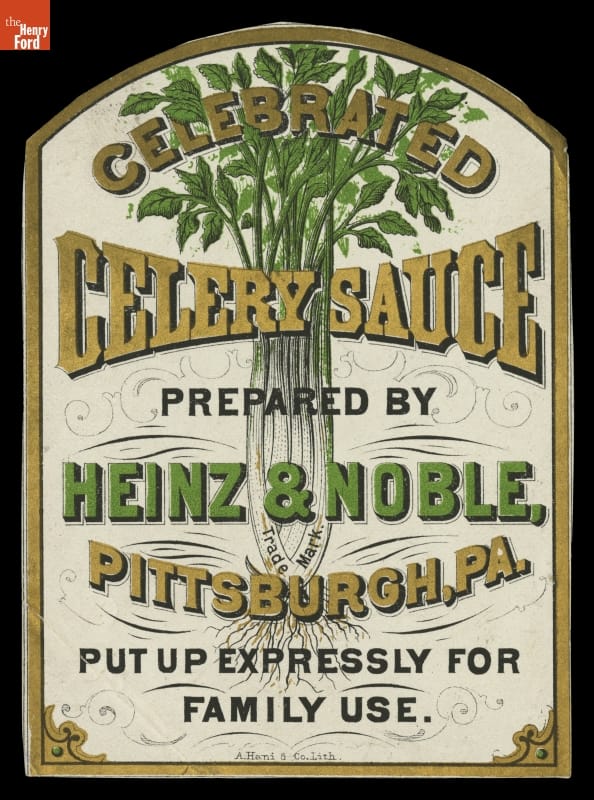
Product Label for Celebrated Celery Sauce by Heinz & Noble, "Put Up Expressly for Family Use," 1871. THF117109
Product marketing often featured larger-than-life products derived from celery.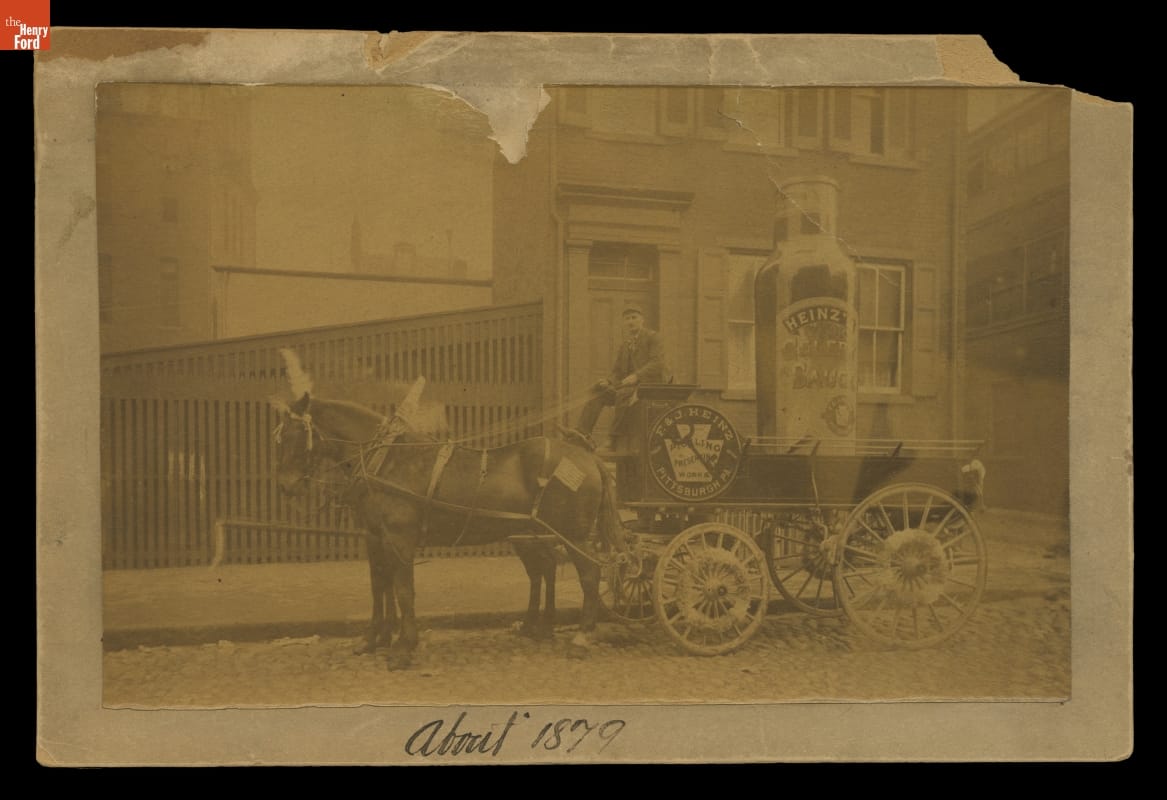
Heinz wagon with Celery Sauce advertising, circa 1879. THF 117121
Celery, the vegetable grown around Grand Rapids, attracted the attention of health food entrepreneurs like Dr. Vincent C. Price (1832-1914). He purchased Tryabita Celery Food Company in Battle Creek, Michigan, in 1902 and operated it as Price Cereal Food Company. He also produced and marketed Dr. Price’s Wheat Flake Celery Food as essential for the health of vegetarians and the infirm.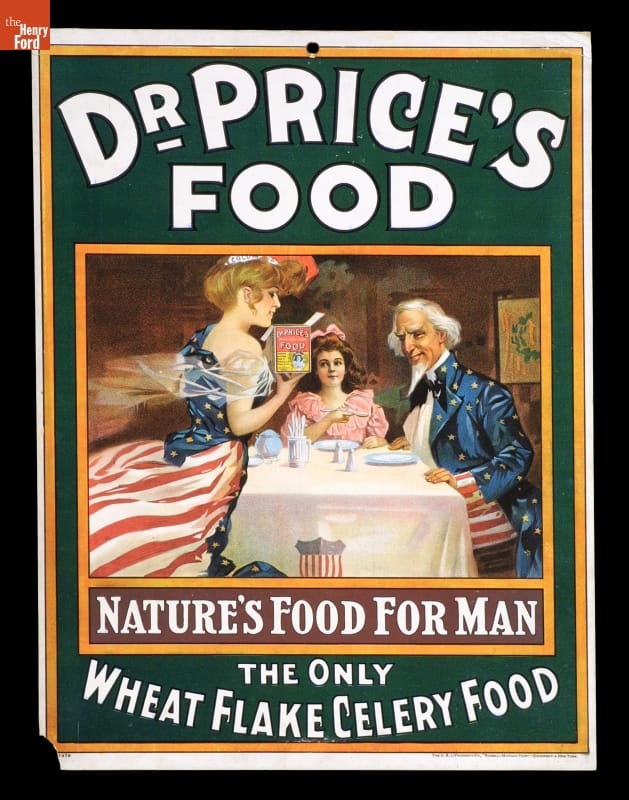
Advertising Poster, "Dr. Price's Food, Nature's Food for Man, the Only Wheat Flake Celery Food," circa 1910. THF 96676
Celery growers in the Grand Rapids area helped establish the crop in Sanford, Florida, in 1895. Growers planted in the fall and harvested in the spring. By 1898 they started shipping their crop via refrigerated railcars to northern markets including Philadelphia and New York City. California growers also established celery fields from Kalamazoo stock by the late 1890s, but their harvest reached market during the fall, thus theoretically avoiding direct competition with other growing areas.
Celery did not appear on lists of common garden vegetables because creating a tasty crop required more work than most hobby gardeners wanted to commit to the crop. Thus, celery did not usually appear in photographs or graphic arts that depicted garden baskets laden with potatoes, beets, cabbage, turnips, and other vegetables. This poster from World War I proves an exception, featuring a schoolboy with a healthy bunch of celery in his basket (on the left side, between the onions and the beets).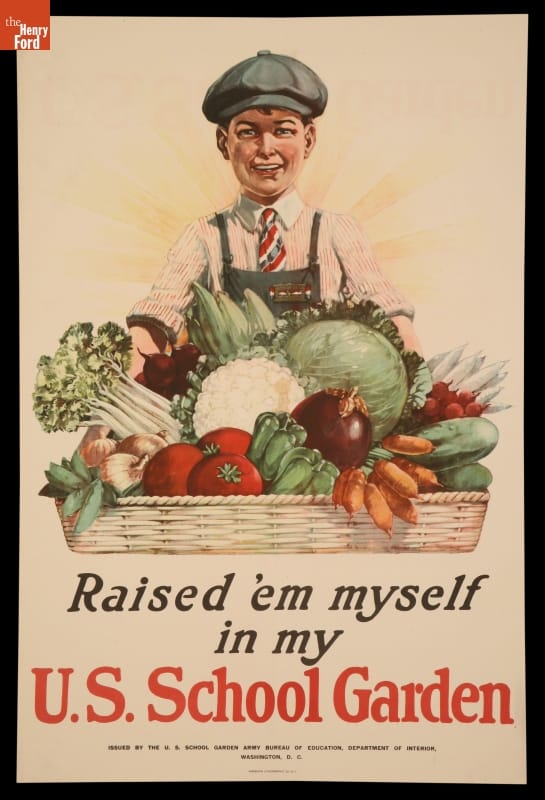
World War I Poster, "Raised 'Em Myself in my U.S. School Garden," circa 1918. THF112810
As salads became a more common element of American dinners, fresh celery gained more visibility. This advertisement for Heinz vinegar (an essential salad-dressing ingredient) included a bunch of celery, along with another relatively new addition to American dinners, iceberg lettuce (behind the celery and the vinegar bottle).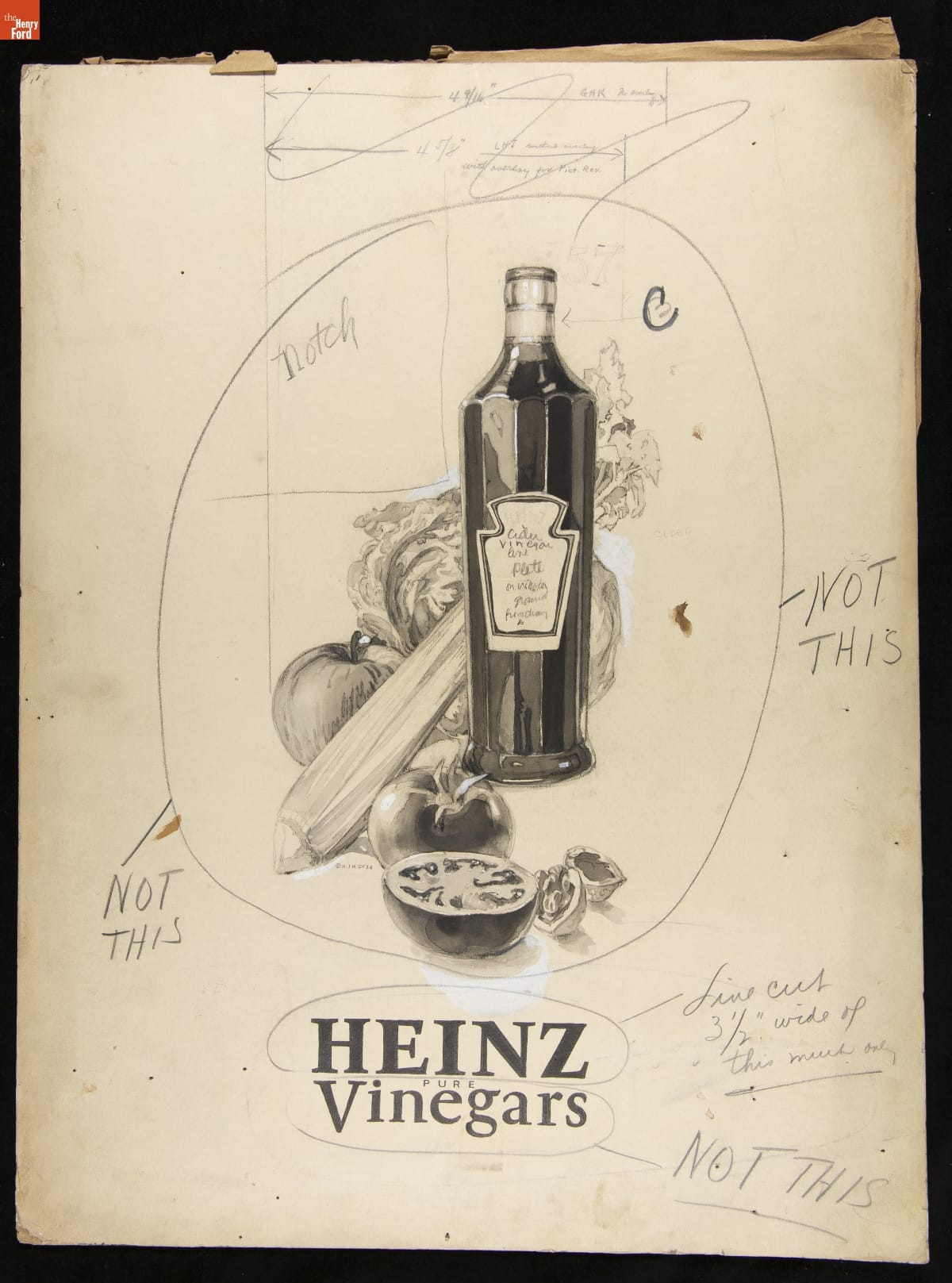
Advertising Layout Drawing for Heinz Vinegar, 1924. THF292743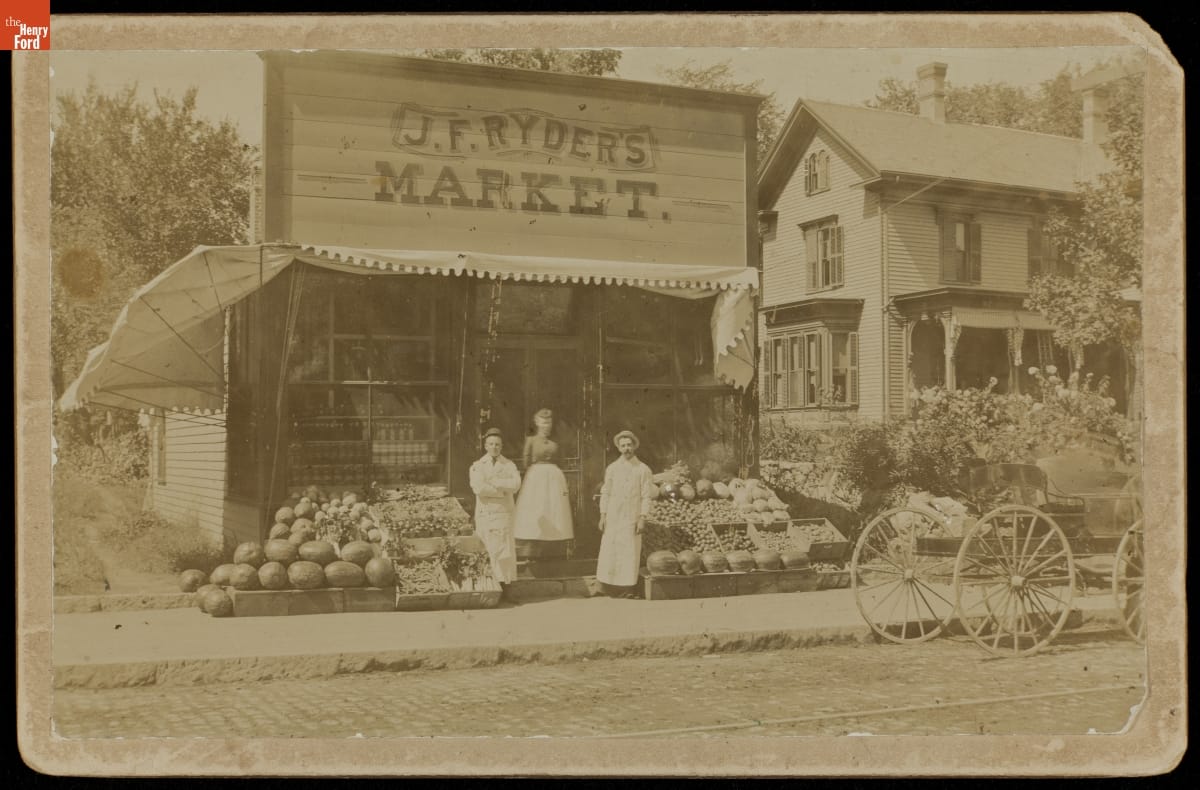
Celery reached consumers in packing crates. Storekeepers usually displayed the crop in the crate, as this image of J. F. Ryder’s Market in Maine, shows.
Grower cooperatives helped expand markets during the early 20th century. The Celery Growers of Michigan existed at least by 1935, the year that growers specified six standard packages for celery. This container was a "square" at the ends (8 inches by 8 inches) and it held celery bunches laid flat that were 10 inches to 18 inches in length.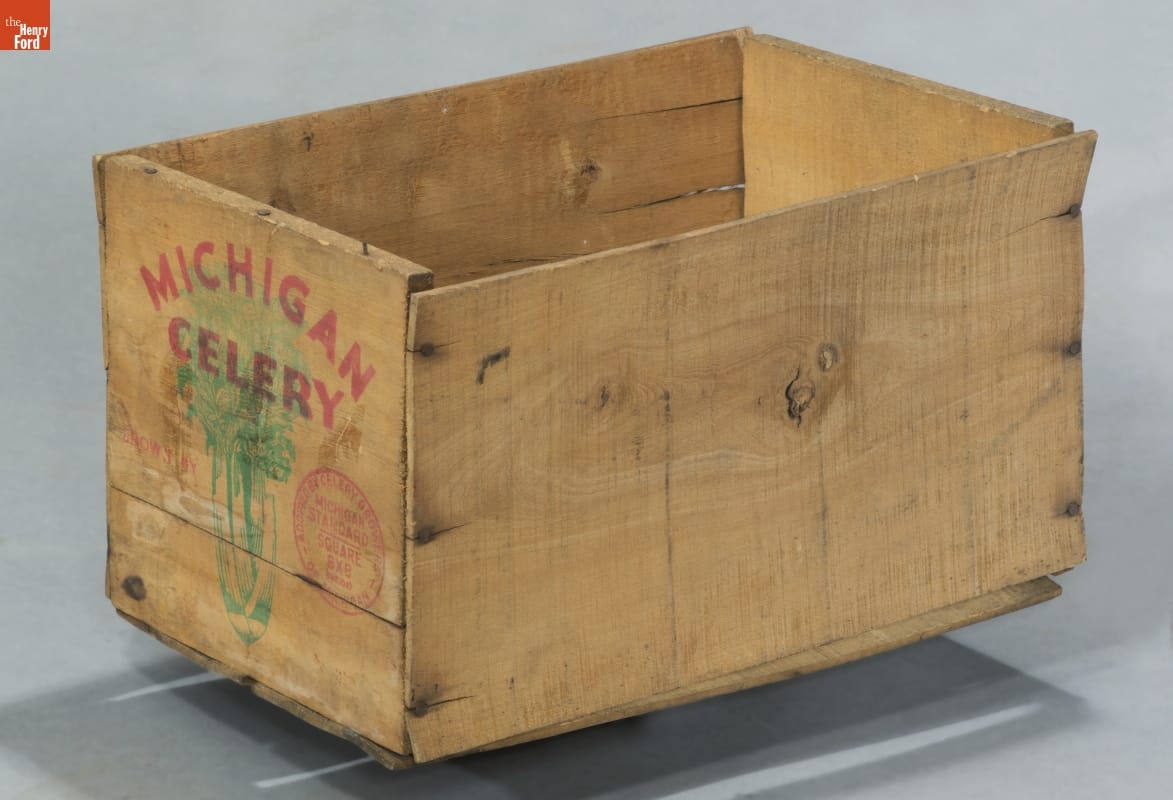
This “square” packing crate likely came full of celery from the farm operated by Ralph Schut, a descendant of Dutch immigrants in Georgetown Township/Hudsonville, aka “Celery Center.”THF173353
Historically, celery was much more than a garnish in your favorite tomato-juice drink.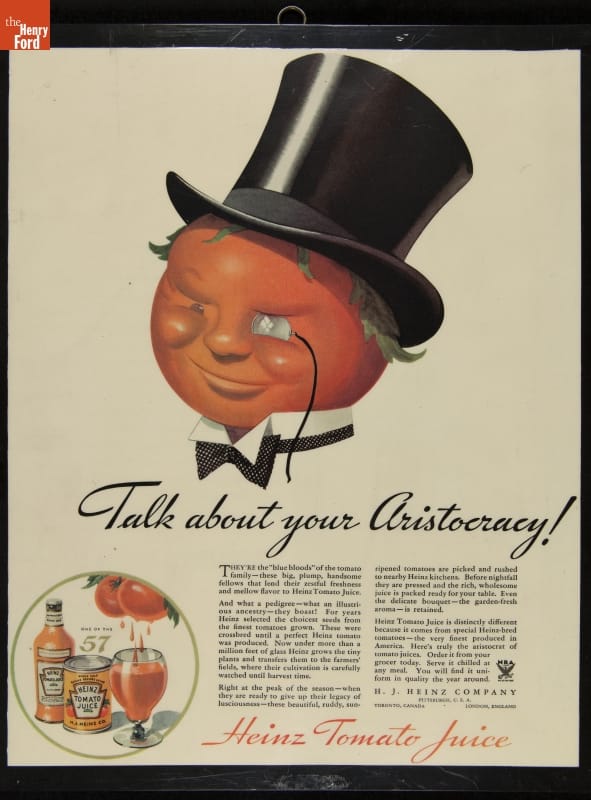
Heinz Tomato Juice Advertisement, “Talk About Your Aristocracy!,” circa 1935. THF252238
Why are there more tulips in Holland and the Grand Rapids area today than celery? Growers responded to disease affecting their crops and increased competition reducing their market dominant by concentrating their resources on horticulture. Many celery growers already had green houses and operated nurseries, so they diversified their production by adding bedding plants and flowers to their market crops.
The region’s celery history remains visible through the Celery Flats Interpretive Center in Portage and in celery fields managed by grower-members of the Michigan Celery Cooperative, founded in 1951.
Debra A. Reid is Curator of Agriculture and the Environment at The Henry Ford.
20th century, 19th century, Michigan, food, by Debra A. Reid, agriculture

